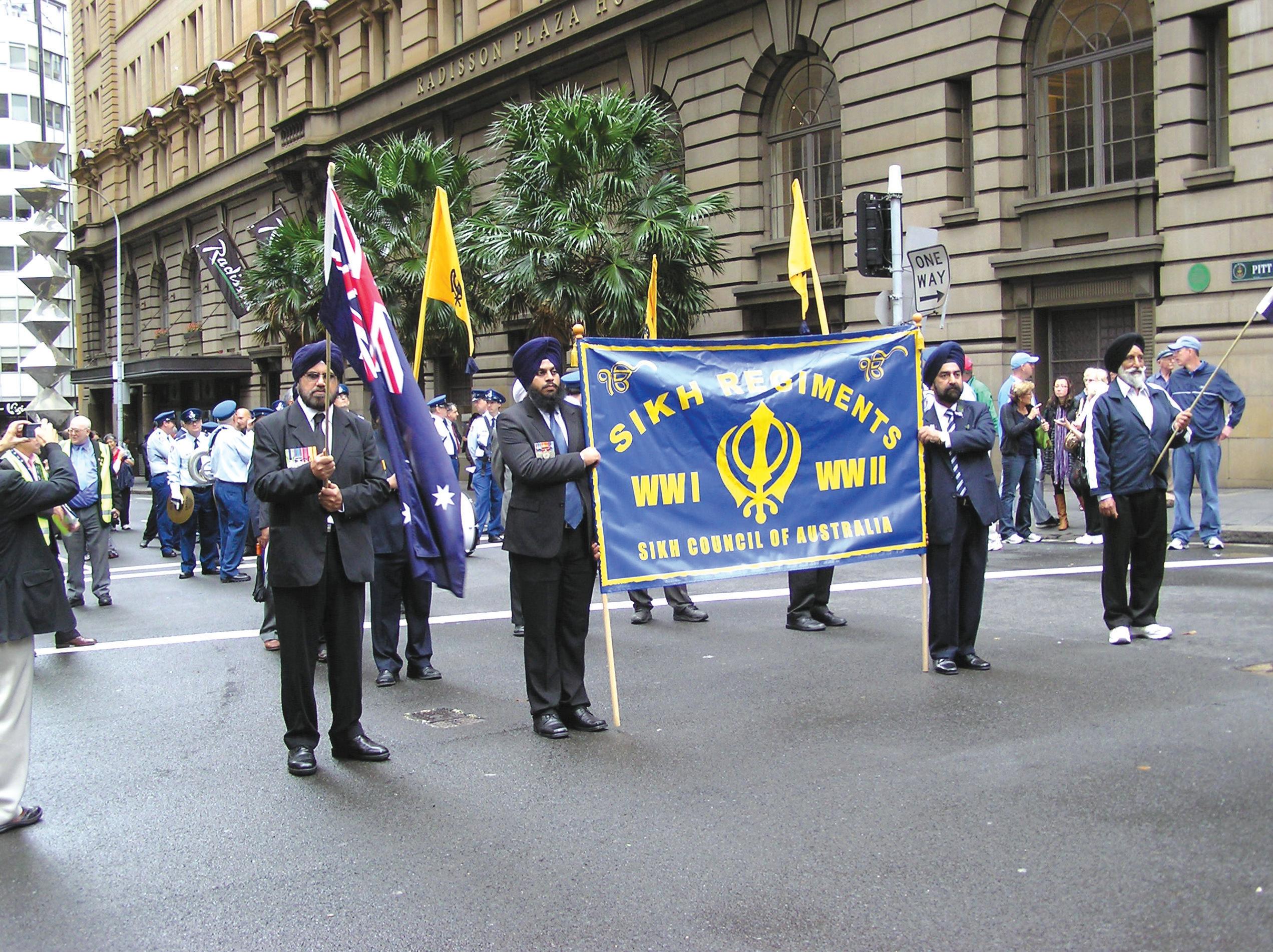

ANZAC Sikhs Level 24/44 Market St, Sydney 2000 • GPO Box 108, Sydney 2001 • Ph: 18000 15 8 47 • email: info@indianlink.com.au Indian Link Radio 24/7 on the net Log on to www.indianlink.com.au Indian Link 24/7 Radio 18000 15 8 47 FREE Vol. 17 No. 8 (1) • May (1) 2010 • www.indianlink.com.au • Estd: 1994 FORTNIGHTLY Published Sydney • Melbourne • Adelaide • Brisbane • Perth

2 <> MAY (1) 2010 INDIAN LINK

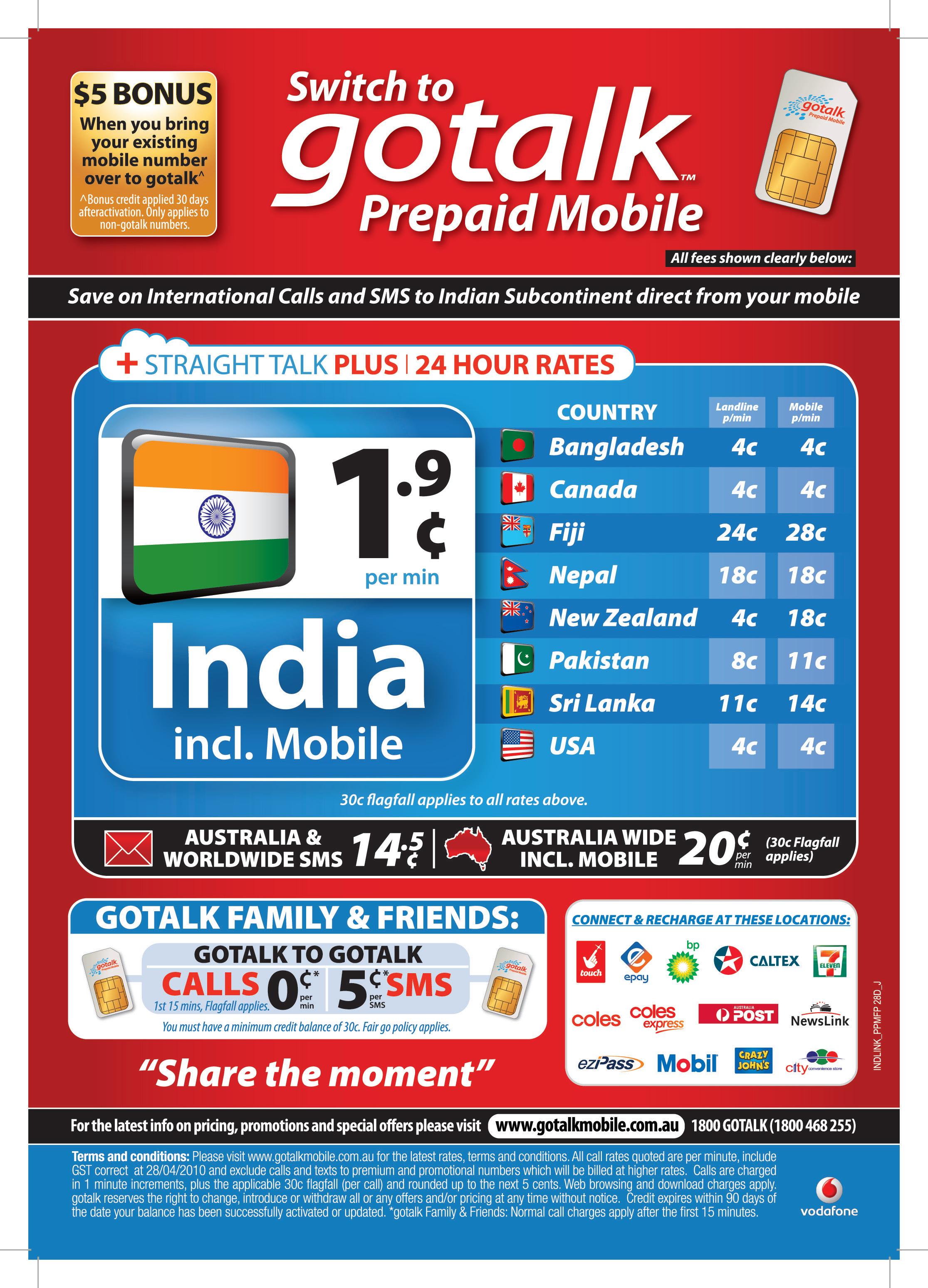
INDIANLINK
PUBLISHER
Pawan Luthra
EDITOR

Rajni Anand Luthra
ASSISTANT EDITOR
Sheryl Dixit
MELBOURNE
Preeti Jabbal
CONTRIBUTORS
Preeti Kannan, Chitra Sudarshan, Noel De Souza, Geeta Khurana, Thomas E King, Rani Jhala, Guneeta Kaur, Usha Arvind, Anamika Singh, Piyush Bhatt, Malli Iyer, Ritam Mitra, Kanishko Das
ADVERTISING MANAGER
Vivek Trivedi
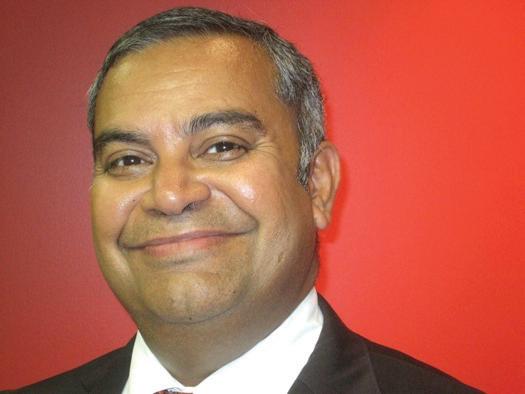
02 9262 1766
ADVERTISING ASSISTANT
Priti Sharma 02 9279 2004
GRAPHIC DESIGN AND LAYOUT
Darren Monaghan
Indian Link is a fortnightly newspaper published in English. No material, including advertisements designed by Indian Link, maybe reproduced in part or in whole without the written consent of the editor. Opinions carried in Indian Link are those of the writers and not necessarily endorsed by Indian Link. All correspondence should be addressed to Indian Link
Level 24/44 Market St, Sydney 2000 or GPO Box 108, Sydney 2001
Ph: 02 9279-2004 Fax: 02 9279-2005
Email: info@indianlink.com.au
Mum’s juggling act
Migrating to a new country often means severing your day-to-day links with a support network around you in your country of origin. While men arriving in a new country may struggle initially to get a job to their professional liking, women are often more challenged in the new environment. That they do settle down ultimately, not only adjusting to their new situation but often excelling in it, is a tribute to their personality, tenacity and drive.
For a new couple arriving into the country, the first priority is to get financial stability by one of the partners getting a job. Invariably, the emphasis is on the male who, once a job is procured, falls into a routine which may not be very dissimilar from what they may have undertaken in India. With new work colleagues and professional challenges, their professional life now has momentum. Their personal life may be different to that in India, as they are now able to spend more time directly with their families as compared to the longer hours and weekends they may have been working in India.

The women in general, especially those with young children, find the settling-in period a lot more taxing. For some, who were not used to driving in India either because of ease of using public transport or having a family chauffeur, the lack of a driving license is probably the first hurdle which needs to be passed. Without this
BY PAWAN LUTHRA
piece of plastic, their ability to settle in is more difficult, especially if children’s needs are to be met.
While this problem is being solved, there are other family routines to be worked out. In India, there would often be an army of people to assist – extended family members, domestic help etc, whereas in Australia, all these issues have to be resolved by the newly migrated mothers themselves.
Important decisions need to be made – from type of schooling to extra curricular activities. While fathers are deeply involved in the whole process, mothers at times tend to shoulder a greater responsibility than they perhaps did in India.
“Mum’s taxi” is a phrase which is often heard because the mother has to take on greater activities as the family is keen to expose their children to a wider range of options in Australia – be it extra cricket lessons or piano lessons or helping their maths skills through tutoring – all this while the mums juggle with the option of having a professional career for themselves as well. Being in a country where the concept of a ‘supermum’
(who can perform her normal domestic duties, as well as work towards ensuring her children’s overall welfare, while still holding down her own job), is often discussed, the mother is also keen to fulfil her personal ambitions. After all, a number of Indian women are well educated and capable of being recognised professionally. Besides, as migrants, it does help in supplementing the family income.
Over a period of time, the mums settle down, their young ones find their way around the schooling system in Australia, the husbands make peace with their professional positions, they establish a network of friends and confidantes who are different to their group of friends in India but have gone through similar baptism of fire in Australia, and, to quote from a recent Hindi movie, “Aall ees well”!
On this Mother’s Day, let us salute the mothers who have managed to keep all the balls in the air and have still retained their sanity.
MAY (1) 2010 <> 5 NATIONAL EDITION
EDITORIAL www.indianlink.com.au
LETTER TO THE EDITOR
Why this disengagement?
You have hit the nail on the head (Editorial, April-2 issue) by stating that “there seems to be a disengagement with India by the mainstream here in Australia”. While this was significantly noticed during the recent Commonwealth Baton ceremonies, the warning signs were there even during A.R. Rahman’s concert in Parramatta in spite of the huge publicity and government support. More than 90% of the attendees were from the Indian subcontinent. Apart from the invitees, from the mainstream Australian community not more than a few hundred people came because of their Indian friends and out of curiosity. This sudden disengagement should be a wake-up call for the Australian Indian community as timely elaborated in your editorial. However before
What’s On
Charity dinner for seniors
29 May Sri Om Care is porganising a charity dinner to raise funds for their home-visit program to care for community elders. Enjoy a unique three-course meal at Taj Sweets at 25, The Crescent, Homebush (from 6.30 pm), and participate in the light entertainment program including karaoke. Details contact Jay Raman 0410 759 906.
Painting exhibition
4 – 31 May Wahroonga-based artist Panchali
Sheth exhibits her new works at Tom Dunne Gallery, 11 Little Burton Street, Darlinghurst.
New UIA Executive Committee
The Annual General Meeting 2010 of the United Indian Associations was held on 18th April 2010. The following individuals were elected to the UIA executive committee for the year 2010/11:
President: Mrs. Aruna Chandrala of Telugu Association
Vice President: Mr. John Niven of Sydney
Tamil Manram
Secretary: Dr. Moninder Singh of Punjabi Council of Australia
Treasurer: Mr. Sunil Srivastava of Hindi Samaj
Joint Secretary: Mr John Jacob of Sydney Malayalee Association
Joint Treasurer: Mr. Amrinder Bajwa of Australian Punjabi Business Organisation
Public Officer: Mr. Vijaykumar Halagali of Basava Samithi
Sydney Writers Festival
17-23 May Indian links in this year’s event include the spectacular Nine Lives at the
Sydney Opera House. This performance of rarely seen South Asian devotional music and spiritual transformation will feature the Bauls of Bengal, the Shah Jo Rag Fakirs, Theyyam dancers and the hypnotic sounds of Susheela Raman, all presented by the writer William Dalrymple.
engaging with the Australian community, it may be worthwhile for us to consider the various factors which caused this disengagement. The average Australian is friendly, private, non-interfering and expects fairness in dealing with sensitive issues. According to some of my good Australian friends who respect India and Indian culture, they were disappointed with unfair and perhaps blatantly hostile reporting of the Indian student matters by the Indian media such as the Ku Klux Klan cartoons. They were equally critical of the Australian media which gave some unnecessary and over publicity of the Indian students’ issue. Whether we like it or not, the issue dominated in every field in Indian Australian relations. Even in the recent Australia India Business Council meeting which is supposed to focus on mutual business opportunities, the Indian students’ issue dominated the
discussions even though the situation is under control, thanks to efforts by Government of India and the Australian Government. Perhaps too much publicity has caused this aversion by the mainstream community. The other major factor which is an ongoing issue which all of us need to raise with a united voice is that the average Australian Indian feels that Australia is not truly multicultural. I get this feeling whenever I return from an overseas trip. Even a tiny nation like Singapore seems more multicultural. You open The Strait Times you can see reports about India and Indian events in Singapore. Only when a student is bashed, the Australian media pays attention to the Indian community. The multiculturalism policy in Australia is outdated and causing the communities to live in their respective islands.
Vish Viswanathan Kings Langley, NSW
Can you help Siva and Uma?
Also, Raj Patel makes his radical and original voice heard in his acclaimed book The Value of Nothing. In a clear and concise manifesto, Patel lays out his guide to changing our market society and redefining democracy
Details www.swf.org.au
Events at Global Organisation for Divinity
15 May An evening of music and dance at the Sydney Baha’i Centre, 107 Derby Street, Silverwater. Devotional music by Uma Ayyar and Mythili Narayanaswamy, and bharatanatyam dance presentation by Padma Balakumar’s Nrityagriha School of Dance. Details Mythili Bala 02 9482 1204 and www.godivinity.org.au
Classical music concert
22 May O.S Arun in aid of Sri Venkateswara Temple of Helensburgh, Bankstown Town Hall (Cnr Rickard and Chapel Street) Bankstown. Details phone 02 9706 7354 or 02 9879 4350.
Sakhi Sangam
25 July Sydney Sakhi Sangam will be held at the Croatian Club, 921 Punchbowl Rd (Cnr Canterbury Rd), Punchbowl. Details Nandini Thadani 02 9181 2204.
I am a Support Services Coordinator with the Leukaemia Foundation, and have been providing ongoing emotional and practical support to Sivasankar Sivanandi Thangapandi and his wife Umamageswari Selvam, since Sivasankar was diagnosed with Acute Promyelocytic Leukaemia in Februaruy 2010.
Sivasankar and Umamageswari were referred to the Leukaemia Foundation by staff at Westmead hospital, following Sivasankar’s diagnosis and admission to Westmead. This couple was identified as requiring intensive support services due to their difficult financial circumstances, and lack of support networks.
Umamageswari emigrated from India to Australia in October 2006 on a student visa, and now currently holds a bridging visa A, Sivasankar then arrived in Australia in November 2008 on a student dependent visa, and currently holds a bridging visa A also. Prior to diagnosis, they both worked on a casual basis. Due to the absence of leave entitlements, and unavailability to work, Sivasankar and Umamageswari lost their jobs after Sivasankar’s admission to hospital. Their visa types do not allow them to qualify for Centrelink benefits, which has further jeopardised their access to income support, and they have therefore not had any source of income since diagnosis. It is needless
to say that they are in extreme financial hardship, and requiring further urgent assistance. It is evident that both Sivasankar and Umamageswari have experienced significant emotional turmoil as they have attempted to, not only come to terms with Sivasankar’s life threatening diagnosis, but also face the challenge of having no means to support themselves. Their family and support networks are in India, and unable to offer any financial assistance, as they do not have the means.
The hospital Social Worker and myself have worked in conjunction in accessing various services to intervene and help support Sivasankar and Umamageswari financially and practically.
The Leukaemia Foundation, the Cancer Council and other emergency relief services have assisted with some financial assistance and transport to and form hospital, but the couple are still facing heavy financial burden. They are exceptionally vulnerable, and are at risk of potentially becoming homeless without a long term plan of income support.

If you can help in any way, please contact me on (02) 9902 2222 or 0423 846 480.
Jasmine Latash Support Services Coordinator Leukaemia Foundation
6 <> MAY (1) 2010 INDIAN LINK
anchors
Are you creative? Can you think on your feet? Do you have a talking to people? Good command of Hindi? Upto date with current affairs? Like your Bollywood music? Want to work part time? Early mornings? Late evenings? Weekends? Be part of the Indian Link radio team!!! Email expressions of interest with details of relevant experience to info@indianlink.com.au Closing date: 30 May
Radio
wanted
Date: 11/05/2010 (Tuesday)
Time: 6:30-8:00pm

Venue: SMC Center
66 Goulburn Street, Sydney ,2000 (close to Museum and Central train station)
…Beat
VEGETARIAN PARATHAS
Poodina Paratha
Lachha Paratha
Palak Paratha
Aloo Paratha
Methi aloo Paratha
Oriental style stir fry
paratha
Mushroom and pea paratha
Stuffed vegetable and cheese Paratha
Paneer Paratha
Methi Paratha


Mooli Paratha
Gobi Paratha
Garlic stuffed mali
Paratha
Masala rajhama Paratha
Mattar Paratha

EXCLUSIVE FOR SOME
Nashe Ka Paratha
NON-VEGETARIAN PARATHAS


Keema Paratha
Chicken Paratha

Egg Paratha
DESSERT PARATHAS
Shakkar Paratha
Chinni Paratha
All these and our normal menu, all weekend at
MAY (1) 2010 <> 7 NATIONAL EDITION
139 STEPHEN STREET BLACKTOWN PHONE: 9671 7820 PARANTHA
IN MAY
WEEKENDS
the chill,
in
paranthas Quality Quantity Service
come
for hot
Promoting Brisbane as an education city
Two Indians are among 30 international students named as 2010 Brisbane student ambassadors.
Manpreet Kaur of Morningsite and Nitin Singhal from Highgate Hill were sworn in by Lord Mayor Campbell Newman at a glittering ceremony, promising to build bridges within the community and overseas.


Representing 21 nationalities, their one-year tenure was formally kicked off on 14 April.
“It is a great initiative and distinct opportunity to bridge the gap between Australia and potential international students,” MBA student Nitin Singhal told Indian Link
“Becoming an International Student Ambassador is both an honour and achievement”, said Navitas scholar Manpreet Kaur, who has recently completed a Diploma in Commerce from QIBT and is now enrolled at Griffith University.
“I think it will be a demanding job for both Nitin and me, especially because of strained India-Australia relations but I am very optimistic in taking on this challenge and quite confident that with our positive experience so far, we will be able to bring new light to the relationship. Brisbane has been a welcoming place. It has developed my personality and brought forth a new, capable and responsible me”, Kaur, who has signed up for several mentoring programs, added.
What they are expected to contribute to this welcome initiative, Singhal explained, is nothing out-of-thebox. “It is just a step forward to what every future International student would expect - to get an unbiased feedback about Australia and Brisbane. I came to Australia during the most strained period owing to numerous attacks on Indian students and ensuing media circus. Faced with an unusual mix-n-match of fear as well as excitement, I too approached Indians studying in Brisbane to get their feedback and to my amusement they all had the same view of Australia and Queensland - a very safe education destination”.
Now, as student ambassadors, he and Manpreet will do the same - provide their opinion and feedback to potential students so that they can make a more informed decision about their choice of education city.
“Nine months on, I have no qualms in saying that by overriding my fear, I made the right decision of coming to Australia. Besides being a great destination, it has turned out to be a land of many opportunities. As a student, I have been able to translate theoretical knowledge to real-life industry projects. Simultaneously, as student ambassador, I also get to serve the IndianAustralian community for this cause”, Nitin stated.
Initiated by Brisbane Marketing through its Study Brisbane division, the key objective of the program, which is in its second year, is “to increase awareness about Brisbane as an international student destination in the city’s core source markets, based upon the principle of creating ‘friends for life’.”
The ambassadors were selected after an extensive two-month review and recruitment process. All international students in Brisbane are entitled to apply to the program.
The 2010 program builds upon the success of last year, and has welcomed back six continuing ambassadors with the 24 new ones.
“The Ambassador program is all about creating global advocates for Brisbane,” John Aitken, Brisbane Marketing’s CEO said.
“As our Ambassadors return to their home cities, they
with cultural diversity that benefits local businesses and domestic students who may also study overseas.”
International education is Brisbane’s largest export and currently its principal source markets are China, India, Korea and USA, offering secondary and tertiary education in a range of fields from marketing to medicine.
Lauding the student leaders for taking on the unique challenge, the Mayor said that “Brisbane is a vibrant and multicultural city and these ambassadors are the perfect candidates to spread the word”.
“We want to show the world that Brisbane is a new world city offering world class education opportunities. And what better way to do this than with first hand accounts from our student ambassadors,” Cr Newman added.
Using the latest digital multimedia and communication tools, including Twitter, YouTube, Facebook and other blogging sites, the ambassadors will participate in a variety of promotional activities.
Ambassadors receive complimentary event tickets,
Story Bridge Adventure Climb, besides liaising closely with Indian High Commission, QETI and international trade delegations.
26-year-old Nitin is no newcomer to leadership programs, having held volunteer positions at uni and with the ‘SPIC-MACAY’ (Society for Promotion of Indian Classical Music and Culture Amongst Youth) in India.
Likewise, besides being an international mate and ambassador, Kaur is also on the student panel, helping her peers achieve their dream.
“Come prepared with loads of excitement and energy to enjoy the surprises this city and country has to offer you. Beautiful nature, state-of-the-art modern facilities, world-class globally acclaimed learning experience and a multi-cultural friendly environment is just the beginning of what awaits anyone coming to Brisbane.”
That’s Nitin’s tagline to prospective students heading down under.
Usha Arvind
8 <> MAY (1) 2010 INDIAN LINK STUDENTS www.indianlink.com.au
“I have no qualms in saying that by overriding my fear, I made the right decision of coming to Australia. Besides being a great destination, it has turned out to be a land of many opportunities. As a student, I have been able to translate theoretical knowledge to real-life industry projects”
Nitin Singhal
Brisbane has been a welcoming place. It has developed my personality and brought forth a new, capable and responsible me
Manpreet Kaur
Manpreet Kaur (above) and Nitin Singhal with Lord Mayor Campbell Newman




NATIONAL EDITION Subscribe to Indian Link Radio for $9.95 each month. 24 hours, 7 days Indian Link Radio. Minimum 12 months’ subcription, $50.00 refundable deposit A special gift of love for your mother A subscription to Indian Link Radio, filling her life with music
ANZAC Sikhs do us proud
Sikhs fought valiantly to death on June 3 and 4 1915.
We gave our today
BY USHA ARVIND

Kohima War Memorial
Every year, it gets bigger and better. The Sikh Regiments dressed in dark blue turbans, impeccable suits with medals flashing proudly on their chest, led by Colonel Mahinder Singh rubbed shoulders yet again with mainstream Aussie veterans in what has now become the norm, as they marched through Sydney CBD to salute the iconic ANZAC spirit.
The midday parade commenced at Pitt St before winding up at the ANZAC Memorial in Hyde Park, and was preceded by a dawn service at Martin Place. Besides the ANZAC day events, the Sikh Regiments also participated in the official wreath laying ceremony on April 24.

Celebrating larrikinism and mateship, for New Zealand and Australia the Gallipoli campaign (25 April 1915- 9 January 1916) was not only the first major battle undertaken by a joint military formation called the Australian and New Zealand Army Corps (ANZAC), but also a milestone, marking the dawn of a national consciousness. Over 8,000 Australians and 3,000 New Zealanders laid down their lives fighting for the British Empire.
But few were aware of the role of Indian soldiers in the campaign till the bid by ANZAC Sikhs to join the annual parade.
Of the 47,000 Indians killed in the fouryear battle, 1400 were lost at Gallipoli alone. Particularly noteworthy is the contribution of the 14th Sikh Regiment, with its commander Sir Ian Hamilton paying glowing tributes. History tells us that 371
Noted for their selfless sacrifice, gallantry and protection of the weak, Sikhs have traditionally played a critical part in India’s long and bitter political history, pre and post independence. Likewise in the recent centuries, they have been involved in strategic roles in Singapore/Malaysia, UK, Canada, Australia, NZ and US.
Due to the efforts of the Sikh Council of Australia (SCA), particularly Manjit Singh Gill, Ajmer Singh Gill, Vickram Grewal and Jagdev Bawa, the contribution of ANZAC Sikhs has been officially recognised through the ANZAC Day parade since 2007.
“It is a solemn ceremony of remembrance to show our gratitude for bravery and heroism,” said SCA secretary Bawa Singh Jagdev. “Posterity will remember them and those who now live as free men and women, and in peace,” he added.
“The SCA has always focused on positive and innovative awareness programs to raise the profile of the community in Australia,” Canberra-based Vickram Grewal, who works as Deputy Director Defence Preparedness Initiatives under Vice Chief of Defence Forces told Indian Link
“We had been lobbying for long to participate in the ANZAC Day parade because of the extensive contribution of Sikhs to the Gallipoli campaign. Post 9/11 and the ensuing hate crimes against Sikhs worldwide, we accelerated this project and after discussions with the ANZAC House and RSL HQ, it was agreed that the Sikh Regiments (who were part of the Commonwealth and Allied Forces in WW1 & WW2 - alongside the Gorkha Regiments from the Indian subcontinent) will be represented in the ANZAC Day ceremonies, including the wreath laying at the Dawn Service and the March,” Grewal explained.
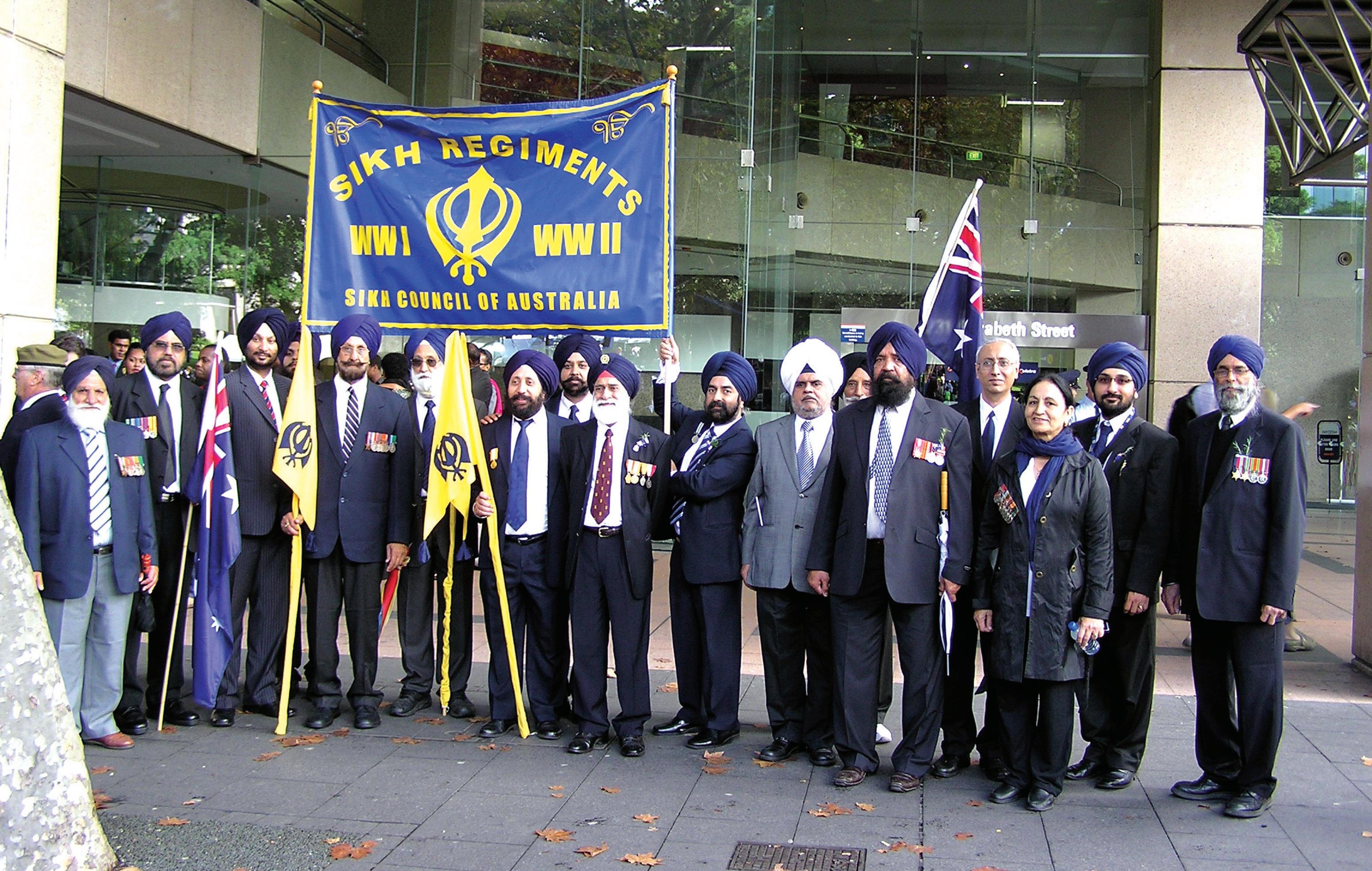
“These martyrs have never been recognized before,” lamented Colonel Mahinder Singh who commanded the 2nd and 4th Singapore Infantry Regiments. “Our aim was to
officially recognise and commemorate the supreme sacrifice by those soldiers who fought selflessly for the defence, security and integrity of the sprawling British Empire - away from their motherland,” he added. The Sikhs made their presence felt in virtually every main battle arena. Their bravery is exemplified by the fact that Sikhs won 13 of the 22 Victoria Crosses awarded to Indian soldiers, he proudly acknowledged.
Likewise participation in the parade is also an opportunity to thank and commemorate those who have risked their lives outside Sikh Regiments more recently. “There is no regret because they died to uphold our values,” added Singh who
10 <> MAY (1) 2010 INDIAN LINK COVERSTORY
When you go home tell them of us And say, for your tomorrow
The Sikh Regiments’ presence at the ANZAC Day celebrations is a matter of well-deserved pride and honour
“For ex-servicemen and those of us still committed to the armed forces, taking part in the parade is an emotionsurcharged moment that cannot be explained in words” Vickram Grewal
moved to Australia post retirement from the Singapore Armed Forces in 1988.
While Sikh Regiments are now represented in marches at Adelaide, Perth and Woolgoolga as well, SCA hopes to see participation in all Australian capital cities through its national membership.




“Year after year we see more and more people cheering for the Sikh Regiments - as they march in the CBD. Their applause is a huge thank you for us,” says Grewal, a former NCC cadet who hails from a family of fighters. His dad was an Indian air force pilot, while his mum was an active member of the National Cadet Corps (NCC) leading the Republic Day march.
“For ex-servicemen and those of us still
committed to the armed forces, taking part in the parade is an emotion-surcharged moment that cannot be explained in words.
It has to be felt first hand and we therefore urge and request more people of Indian origin to witness and share this incredible feeling. The march has generated a lot of goodwill and brought out a sense of unity and kinship,” added Grewal.
“ANZAC Day for us Sikhs,” he continued, “is not just about those who laid down their lives - although, obviously that’s the primary reason. What makes this march critical for the current situation is that it is a vehicle to illustrate to the wider Australian community that we are not just students, we’ve contributed to the Australian social

fabric for a long time, in some way, shape or form - if it wasn’t the World Wars where we fought alongside the ANZACs, it was as Camel Train operators and farmers originally, and it is now in all fields! We are faithfully following the tenets of our leaders, from Guru Nanak to Guru Gobind.”
And through the parade, the SCA is merely ensuring that this contribution is captured and recognized, and that their heritage is not lost.
Among those who proudly hoisted the Sikh banner are Ajmer Singh Gill, Vikramjit Singh Grewal, Bawa Singh Jagdev, Jaswinder Kaur Grewal, Jasbir Singh Randhawa, Gagandeep Singh, Balbir Singh Banwait, Inderjeet Singh Virdi, Suhinder Singh Kalsy, Amarjeet Singh Grewal, Lieutenant Mukhtiar Singh of Singapore Armed Forces, Sarabjit Singh of NSW Police, Indian Para Military Police, Fauji Kuldip Singh - 2nd Lt in Indian Army and Sgt Major in Australian Army, Capt Sarjinder Singh Sandhu and Havildar H S Bathal, Indian Army Signals.
MAY (1) 2010 <> 11 NATIONAL EDITION

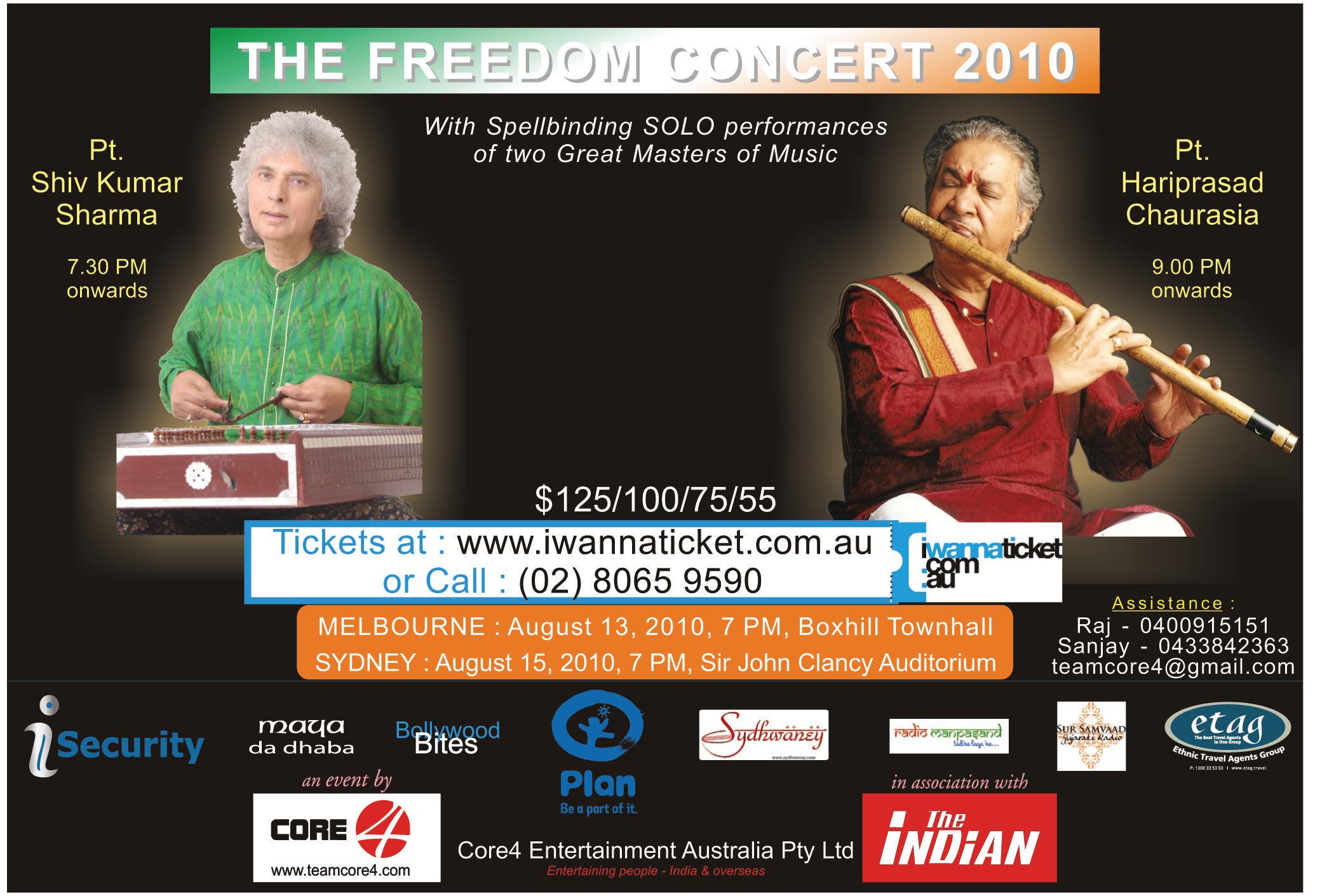
12 <> MAY (1) 2010 INDIAN LINK




MAY (1) 2010 <> 13 NATIONAL EDITION 139 STEPHEN STREET BLACKTOWN PHONE: 9671 7820 on traditional Indian food FLAMING HOT DEALS Call now on 0425 30 26 26 Quality Quantity Service Take-away Catering from $8pp Don’t go for LESS, but settle for the best!
Caste system must be abolished, says Dalit Professor
Despite the end of colonisation in India, the country continues to suffer from ‘internal imperialism’, an Indian professor said at a conference recently in Sydney. Dr Raja Sekhar Patteti, who was at the University of Sydney for a conference on Transcultural Mappings in April, told academics and students that Dalits, who constitute the fifth discriminated caste, continued to face rampant discrimination.


Presenting a paper titled Dissolved native/ aboriginal/Dalit bodies: The post human reading of glocal epistemology, Dr Patteti said the inhumane treatment against Dalits can cease only with the annihilation of the caste system. A Dalit professor from the Acharya Nagarjuna University in Andhra Pradesh, he told Indian Link that his research paper drew parallels between discrimination against the ‘bodies’ of Dalits, and the treatment meted out to the aborigines of Australia, Canada and elsewhere in the world.
“The bodily victimization of aboriginals of Australia began with British colonisation. Throughout the 19th and 20th centuries the colonisers appropriated the land and water resources of aborigines and converted them for sheep and cattle grazing,” he noted, tracking the history of victimisation against aborigines and Dalits to the history of colonisation.
He observed that “In ancient India, Dalits were forced to walk wearing an earthen pot around their neck, tying a thatch around
their waist to clean their footsteps and they had to shout and warn of their entry into the village. Their presence, entry and even their shadow was considered a sign of an omen. They were forced to eat the flesh of the dead animals and depend on leftover food by dominant castes. They were prohibited and discouraged to think on their own,” he said, adding that the colonial rule which transformed every cultural facet of India remained helpless in abolishing the caste system and improving the lives of Dalits.
The English professor, who has been reading extensively on Dalit literature, asserted, “India’s attempt to annihilate the caste system is absolutely zero. It depends on globalisation and multiculturalism to lessen the influence of caste, rather than framing its own agenda to abolish this system on the
been the victim of any discrimination himself, it was the history of violence against Dalits, specifically on their physical person, and the continuing human rights abuse and discrimination in India that became the source of inspiration for this paper. Historical injustices rendered against this section of society, stories recounted by people he knew and an increasing interest in Dalit literature lead to him researching physical violence perpetuated against Dalits, reiterated this staunch follower of Dr Ambedkar. Babasaheb Ambedkar, as he was fondly known, was one of the first Dalits to receive a college education in Hindu India, and dedicated his life fighting untouchability and social discrimination in the caste-
dominated Indian society.
Even as Dalits are slowly occupying positions of power and intellect in India, Dr Patteti said that Dalits were also creating a place for themselves in the globalised world. However, he noted, “The space for existence and the opportunities for Dalits in institutions owned by the government are shrinking. The priority of the Indian government right now is only to provide basic amenities to millions and millions of Dalits lurking in inhuman conditions.”
When asked if India, with its changing economic and global landscape would eventually do away with the caste system, the professor said, “Caste is going to stay for a long time. With the spread of Indians across the globe it will soon become a major problem of the world. Under the blanket of capitol slogans, we cannot hide for a long time what is reality in India.”
Dr Patteti emphasised it was time that United Nations Human Rights Council, withstanding the heavy lobbying of the Indian government to exclude ‘caste’ from its draft, recognized that India’s caste system was responsible for high voltage violence against Dalits.
“This should be termed as human rights abuse, which would prevent and save 17 crore Dalits in India from experiencing this pathetic situation,” he asserted.
MAY (1) 2010 INDIAN LINK
PEOPLE www.indianlink.com.au
Preeti Kannan
Dr Raja Sekhar Patteti





MAY (1) 2010 <> 15 NATIONAL EDITION For expert coaching in Lowest Fee Guaranteed IELTS IELTS GURU Suite -1, 71 A Macquarie St, Parramatta, Phone 0411 520 546, 9687 9741 www.ieltsguru.com.au • Power Packed Sessions. • One and Two Weeks Crash Courses Available. • Money completely refundable, if not satisfied with the first tuition session.
Celebrations highlight Sikh achievements





Vaisakhi, the Sikh New Year, was celebrated on April 22 in the New South Wales Parliament for the fifth year this year. It was attended by members of Sydney’s Sikh community, Parliamentarians and representatives of other government bodies and the Indian community.
The Parliament of NSW always welcomes citizens and other visitors, and with its Georgian facade, it is the oldest public building in the city of Sydney. The Jubilee Room was the venue for the Vaisakhi celebrations, which began with reciting of a Shabad (Sikh hymn) by the North Shore Sikh Youth Choir. It was followed by the Australian and Indian National Anthems. Amongst the dignitaries from both nations were the Leader of the House John Aquillina, State MPs, MLCs, Amit Dasgupta (Consul General of India, Sydney) and members of other organisations like UIA, GOPIO and Bhartiya Vidya Bhavan.

Giani Ravinder Singh Ji, Hazoori Raagi from Harmandir Sahib (Golden Temple), Amritsar, India along with fellow raagis Bhaisahib Sukhwinder Singh Ji and Bhaisahib Jagtar Singh Ji, blessed those present at the function. These distinguished personalities from the Sikh community travelled from far to be presented with the Pride of Punjabis certificate for their exemplary services to the community. Mrs Surjit Kaur from Canberra was honoured for being the first woman priest of Woolgoolga Gurudwara Sahib, indicative of the broad mindedness of the Sikh religion, even decades ago.
Sheer self discipline and faith in God has made success possible for the 78 years’ young veteran Sardar Harbhajan Singh Aulakh, who won 78 medals in international and national events. It was at the World Masters Games in 2009, that he was conferred with the title of Best Athlete of the World. Sardar Harbhajan Singh Aulakh travelled from Melbourne to be a part of the celebrations.
Travel Hut Parramatta, HSBC bank,
A-One Home Improvements and Maharaja Haveli Restaurant sponsored the event. Jasmeen Malhotra, winner of Young Volunteer of 2009 was also honoured.
Sardar Gian Singh Bilga (a successful and charitable cane grower from Cairns with 25,000 acres of land) was represented by his son. Said 13-year-old Rani Kaur, “It would’ve been wonderful if these real life heroes had been given even a minute to share their thoughts with us.”
With great enthusiasm John Aquillina exhibited a poster of the Golden Temple, a reminder of his memorable trip to Amritsar, which also decorates his office. He praised the Sikh community for being highly family-oriented, providing much emphasis on academic achievement and cultural grounding in their children, and instilling intrinsic values in the future generation of Australia.
Hornsby Shire Councillor Dilip Chopra motivated all to become a part of the decision-making process in this land that we now call home by joining a political party. Mr Nathan Rees, former Premier of NSW stated that the Sikh community stood out for its extraordinary social, cultural and work contribution to the multiculturalism in Australia. Amit Dasgupta, Consul General of India, Sydney, shared a laugh as he fondly remembered his Gursikh friend who spoke better Bengali than him. He also highlighted the contribution of Sikhs, both in India and overseas, while Aruna Chandrala of the UIA spoke of the courageous and charitable nature of the Sikh community.
The HSC high achievers were presented a certificate of appreciation, of whom Jaap Karan Singh - UAI of 99.50 was the highest scorer among those felicitated. Mr Kamaljit Singh Walia said, “These high achievers have done us proud and are an inspiration for other children.”
15-year-old Sikh lad Daya Singh was commended for being included in the under-16s Australian schoolboys’ cricket side.
Talented teen Manmeet Bhogal entranced all with her dancing skills to Bollywood songs.
The celebrations concluded with a bhangra performance by six traditionally dressed gutsy young boys - they were truly Rooh Punjab Di - the soul of Punjab.
It was on Vaisakhi in 1699 that the
tenth Sikh Guru - Guru Gobind Singh Ji established the order of Khalsa at Anandpur Sahib in India, by baptizing Panj Piara (the beloved ones). Vaisakhi is also celebrated in Northern India upon harvesting the wheat crop, with farmers and women dressing up in bright colourful attire, and dancing to the beats of the dhol (drum). Sikhs celebrate this day with special prayers at Gurudwara Sahib, followed by cultural and sports events.
16 <> MAY (1) 2010 INDIAN LINK COMMUNITYSCENE www.indianlink.com.au
Guneeta Kaur
NSW Parliamentarians hand out “Pride of Punjabis” awards to members of the community


Winners felicitated in Awards ceremony


Cricket is always in the news. The recent IPL Twenty20 made headlines daily, but on May 1, it was the turn of cricket lovers in our community to support their home teams. In a colourful ceremony at the Parramatta Town Hall, we witnessed the annual awards ceremony for the participants of the IndoAustralian Harmony series.
Twenty teams in all played in the series, which began in September 2009 with the Indian Link Cup, followed by the 30-30 GCA Macquarie Bicentennial and finally the 20–20 MIT Sydney Cup.
At the awards ceremony, players and sports lovers alike gathered together, excited and cheerful, to celebrate this proud moment. Sanjiv Dubey, President of the New Australian Sports Association founded the tournament with his vision of promoting love and harmony through cricket. He collected players and formed teams who played a successful tournament, consisting of matches played each week

at the Parramatta Park. Each team was supported by its own set of fans, and the matches were friendly and enjoyable.
It was this combination of players and supporters who came to cheer their teams and felicitate winners Nandos Sri Lanka, who carried away the 2009-2010 Indian
Link Cup. Runners-up Group Colleges of Australia also received resounding applause.

The 30–30 GCA Macquarie Bicentennial Cup winner was the jubilant Mantra Ride Chandigarh team, who received the award from MP Julie Owens. They defeated Ford Pro Vibrant Gujarat. And Ken Auz SKLPS Simba triumphantly carried away the 20-20 MIT Sydney Cup, with Ryde Automotive Haryana Bulls as runners up.
Select individual players impressed with their game, such as Mayank from MIT who represented Baroda in the Ranji Trophy. Shashi Shreshtha represented the under 19s Nepal team and Suleman Syed from the Hyderabad team represented the under 19s India team. Young cricketers Shagun Patel and Vishal Patel were also awarded, along with Harsh Kapila, Varun Laxman, Kabir Patel and Pawan Uppal. For overall sports, Mohak Issar won an award for ice hockey and Shobhika Dubey carried away the award for tennis.
Respected guests included council members and Members of Parliament. The evening’s entertainment was provided by Vishwaas Productions, whose Bollywood songs, dances and bhangra were well appreciated by the audience. They also presented the trailer of their forthcoming play, The Legend of Ashoka. The evening was enjoyed by all, and the winning teams carried away their trophies, ready to take on the next set of challenges in future tournaments.
Speaking to Indian Link, Dubey mentioned that the Women’s Winter Cricket Tournament will be organised this year, and that the summer tournaments will continue to be held, but on a larger scale and possibly with international players. He is also planning to release a book on the tournament, and, in addition to cricket, he has plans to organise tournaments for other sports.
18 <> MAY (1) 2010 INDIAN LINK
COMMUNITYSCENE www.indianlink.com.au
Anamika Singh
(Above) SKLPS Simba Players recieveing their 20/20 MIT Sydney Cup from MP Julie Owens and Parramatta Park Trust Director Chris Levins (Left) Encouragement award for Mohak Issar and Kabir Patel
(Right) Shubhika Dubey and Arsh Kapila recieve their encouragement
Julie Owens


NATIONAL EDITION Sydney, Canberra Melbourne For details call 1800 15 8 47 One paper FIVE EDITIONS


20 <> MAY (1) 2010 INDIAN LINK $$ $$ Thought About Security as a career? Do you want to earn big $$ Bezcorp Training Academy is a registered training organisation offering training services below: • Certificate I in Security Operations (Pre – Licence) in all licence classes • Workplace Assessments for Provisional Licencees •Recognition of Prior Learning (RPL) •First Aid Don’t delay, call now 1300 329 570 We’re located at 33 Brookhollow Ave Baulkham Hills Mon – Fri 9.00am to 5.00pm ML: 409864980
catches up with OP Bhatt, Chairman of the State Bank of India who was in Sydney recently
Most people would expect the stereotypical banker to have one of two different looks: pin-striped suit, sharp tie and slick-back hair with a touch of white (think Gordon Gecko), or slightly overweight with rosy cheeks and a mop of white hair (think conservative British). OP Bhatt, the Chairman of India’s largest bank, the State Bank of India, fits neither of the two appearance codes.
Tall, lean, with thick peppery hair, he looks more like a university academic than the man in charge of the bank which proudly states that “every Indian has banked with it”. But when he starts speaking and reels off facts and figures about India’s economic potential and its accelerated growth fuelled by increasing consumption demands of the middle class, Bhatt mesmerizes the listeners. One can well imagine the power this man wields as he works out multi billion dollar deals between India’s largest owned government bank and the exciting opportunities available to foreign investors in a country which he himself believes will be in the top 5 in the world by 2020.
Om Prakash Bhatt, the Chairman of the State Bank of India, was in Australia recently to attend his first board meeting with the Insurance Australia Group (IAG). The State Bank of India with its 80,000 distribution points has recently tied up with IAG to sell general insurance in India. Even as he was in Sydney, the SBI – IAG joint venture had sold their first general insurance policy in India.

Speaking to Indian Link, Mr Bhatt expressed satisfaction with his new partners. In what is widely acknowledged as an excellent deal for the SBI, IAG paid a share premium of Rs 400 crores for its 26% stake in the joint venture.
“India is an exciting place to invest and IAG won this business after beating off strong competition from other overseas general insurance companies. With the Indian middle class market to grow and with the distribution might of the State Bank, there is a very compelling story for people to partner with us”, Bhatt said in an exclusive interview with Indian Link. “We undertook a global tender, did our due diligence, our risk and technological analysis and found that IAG was a good fit for our expansion in this area. We are extremely pleased with the way this relationship is progressing,” he said.
While IAG was the main reason for his visit, his time was also taken up with the Macquarie Group Ltd.
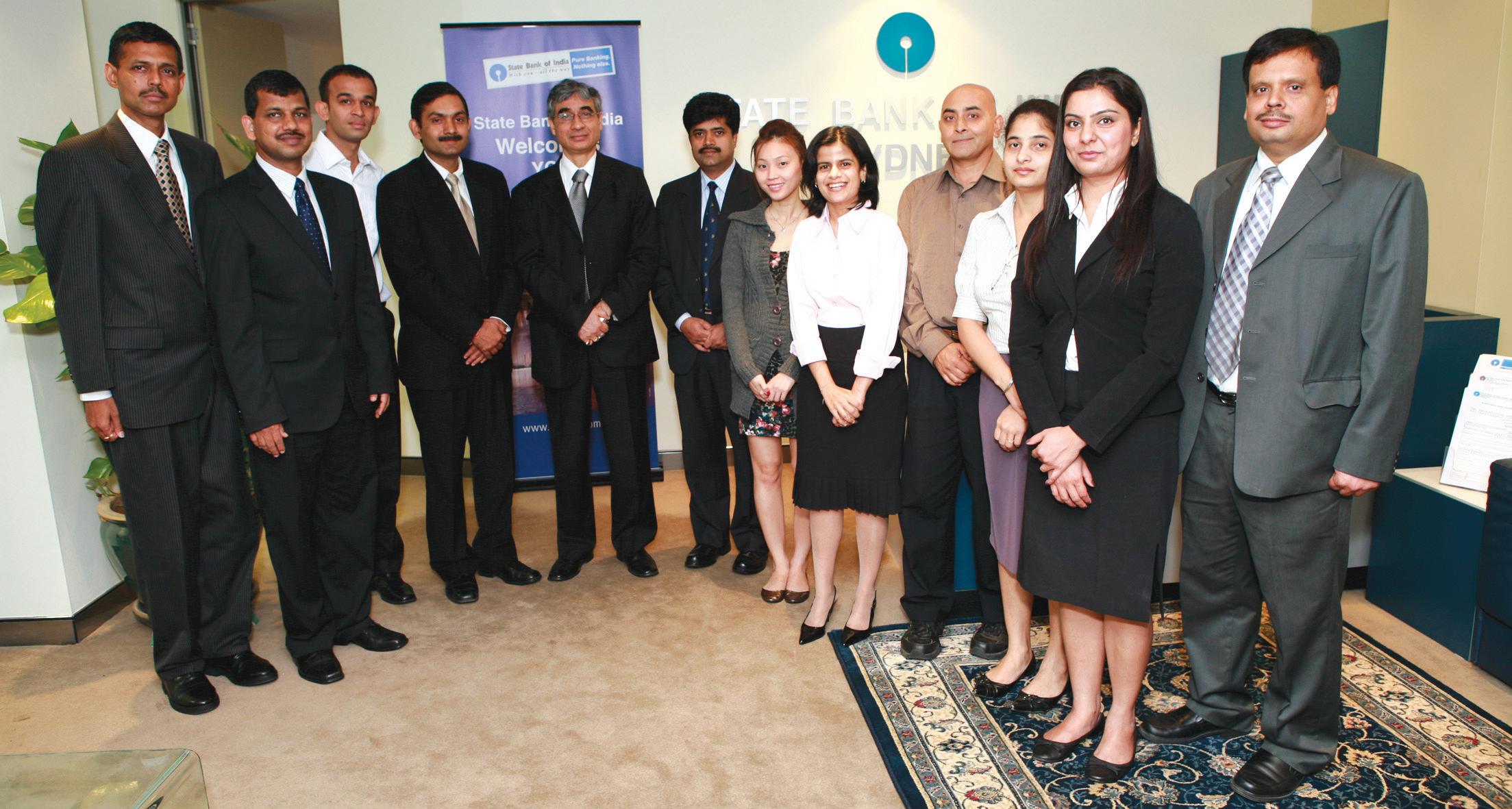
Through MGL, State Bank has created a US $2 billion foreign investment fund to invest in infrastructure products in India.
“Again, we did a world wide search and found that the Macquarie Group with their expertise in infrastructure funds had a unique ability which we were keen to tap. We have already met our subscription levels for this fund; we will be looking at other options in the future. As you are aware, India’s needs for infrastructure are enormous”, he said.
“The Indian economy is growing and it is the people who are driving this economy. It is their aspiration to do the impossible. The Indian mind set is very young; of the 1.2 billion population, 60-70% are below the age of 35. These youngsters are in a hurry, they want the best of everything yesterday, not today or tomorrow.
The Indian Premier League is one such example which has galvanised people.
“Never has an idea been put into place so quickly in India. It was a native idea which now has given birth to an exciting competition which the world wants to copy,” he had earlier stated at a public dinner at the Hilton Hotel.
In the same speech, he also praised the Indian political leadership. “Politically speaking, India is very stable. We have some of our wisest leaders at the helm and they have the correct attitude towards reform. Due to this economic opportunities are coming up all across the country. Small and medium enterprises are booming in India as India becomes a manufacturing hub. India is praised for great growth and greater employment opportunities”, he told the hushed hall of over 300
business leaders.
Later speaking to Indian Link, he agreed that the Indian businesses, Indian banks and Indian government need to move faster to take advantage of the global opportunities.
“India is already doing it in the areas of coal and gas, the Steel Authority of India is also exploring international opportunities. We need to understand that India is a democracy and though it takes time to move, they do move forward in a sustainable and sensible way,” he said.
Mr. Bhatt was scathing in his comments about big bonuses paid to bankers on Wall Street.
“If bonuses are structured in a manner that performances will be driven only by them, then those organisations are at risk and it is a recipe for disaster. The other issue is how much money can you pay to an individual at the top - you hear of stories of people being paid hundreds of millions of dollars so what is it that the person brings other than sitting at the top” he said. “I am saying this from the Indian experience because the Indian public sector is paid peanuts compared to these Wall Street bankers and yet the Indian banking sector has stood out at this time of crisis as an island of stability and success at the times of the global financial crisis,” he added.
And because of these qualities, not a single seat was empty on his Monday night speech to Australian business leaders at the Hilton Hotel. This spoke volumes of not only India’s allure to these business leaders, but also to the respect and awe in which the Chairman of the State Bank of India is held even in Australia.
MAY (1) 2010 <> 21 NATIONAL EDITION
INDIA-OZ www.indianlink.com.au
The State Bank of India with its 80,000 distribution points has recently tied up with IAG to sell general insurance in India
OP Bhatt makes a point at a business dinner speech in Sydney
State Bank of India chairman OP Bhatt (fifth from left) meets with the employees of SBI Australia




22 <> MAY (1) 2010 INDIAN LINK Visit a college or phone 1300 798 111 Auburn ACL 3 Mary Street T: 9749 3300 Fairfield ACL 6-8 Alan Street T: 9723 4244 Blacktown Macquarie Community College Level 2, 125 Main Street T: 9621 4175 Cabramatta ACL Level 1, 2 Hughes Street T: 9723 3126 Parramatta ACL 1/7 Hassall Street T: 9689 3659 Liverpool UWS 24-30 Scott Street T: 9822 5876 Building Our Future Together The AMEP offers 510 hours of English language learning to meet your needs and goals • English for Settlement - learn about your local community and settlement services • English for Further Study –prepare for future study pathways • English for Work - prepare for working in Australia - ACL colleges are close to public transport - Free childcare available on-site at colleges - Full-time and part-time, day-time, evening and weekend classes - Distance Learning and Home Tutor Support English for life and work in Australia Adult Migrant English Program (AMEP) The AMEP is funded by the Department of Immigration and Citizenship and delivered by the ACL Consortium Phone: 1300 798 111 English www.acl.edu.au ACL0016_AMEP_advertising_campaign_18x12.9.indd 1 15/4/09 10:43:04 AM Be invited and Enjoy Bridal Fashion Show, Music, Dance, Mehendi, Stalls, Door prizes. Experience the glamour of wedding Mandap bride in a palanquin cultural events Dress Indian & Join the wedding procession
Where? Marana Auditorium McMahon Street, Hurstville When? Saturday, 31st July, 2010 5.30 pm to 10.30pm contact: Rita Dev Murari 0422 897 665 Usha Naker 0404 476 070 Advertisements contact: Smita Bhoola 0407 347 223 Subhash Rughani 0411 139 205 Hardika Hirani 9742 5396 Places are limited! Be invited now
Indian Bridal Fashion show
The power of Baa
PIYUSH BHATT on Vipul Vyas’s new Gujarati play
50 years ago to the day, a very young impressionable boy watched his mum and dad celebrate the birth of a vibrant Indian state called Gujarat.
This year that very same boy, now a self made artiste, produced and directed a Gujarati play that his parents would have been proud of.
Vipul Vyas’ Mahavira Productions staged the play




Baa Bagade To Baar Vagade at the Riverside Theatre in Parramatta to a packed audience of 700, on 1 May 2010.
Vipul himself starred in a major role.
In brief, the play was about a housewife (Manisha Vyas as Baa) in Mumbai, who selflessly gives up an active life of acting, sports etc to devote to her family. Today her adult children do not need her except to cook, clean, look after the baby and be at their beck and call. Her husband (Vipul Vyas as Avinash) is too

busy in his business and demonstrates a typical chauvinistic attitude to his wife. He is too willing to compare her to his friends’ ‘with it’ wives but does not encourage her from her domestic environment. It’s like sitting on her back and then criticising her for not walking, dressing or talking the same way as the women in his social circle. Her stoic character gives her the inner strength to emotionally support the family and look after the day-to-day workings within the household – cooking, cleaning, ironing and being every one’s domestic football including the son (Hemal Joshi as Suketu) daughter-in law (Ruchi Bakshi as Siddhi) and the daughter (Mecki Ansari as Ketki).
A young teenage grandson (Karan Rao as Vinay) from Australia arrives, and though his innocent eye questions each family member as to their behaviour. (Karan’s Australian Gujarati accent and use of grammar, resonated with most of our Gujarati households in Australia).
The play then takes an unexpected turn though the machinations of the now not-so-innocent grandson. The long suffering housewife rediscovers her old confidence, and a long lost school friend (Nikhil Joshi as Chakudo) who conveniently happens to be a big time advertising agent - and the rest is destiny, as they say.
The play might have been too un-real in how the family takes the dutiful wife/mum/mother-in-law for granted, yet every one in the audience could have related to some or other incident depicted in the play. It hit the right nerve.
The clever use of the double entendres - a trade mark of Vipul’s plays - kept the audience entertained whilst at the same time sending a serious message of how we take our nearest and dearest for granted. There are too many lines to quote but messages like “It is in
words must have swelled the hearts of the audience. A statistic not well-known but worth including is that the Gujarat economy has been growing at an average of 12% pa for the last 12 years putting it in the same league as China’s growth. Gujarat accounts for 17% of India’s GDP but represents 5% of the Indian population. Hence Vibrant Gujarat is not an empty slogan.
Vipul and all his artistes including his talented back stage gang - Kamini Pandya as Production Controller, Sagar Agashe (lights), Avijit Sarkar (background music and voice), Tushar Bose (music editing and co-ordination), Sandhya Bose (make-up and dance direction), Tanna family (stage decoration), Chintu Patel, Jwalant Patel, Madhav for stage management - put on a show all Indians especially the Gujarati diaspora in Sydney, can be proud of.
Vipul has taken his play to Melbourne already and will take it to Perth next week. An unprecedented second show in Sydney is scjeduled for 5 June 2010. The play could not have been the success it was without the help of major sponsors Gujarat NRE and its Chairman and MD Mr Arun Kumar Jagatramka; and Atithi restaurant and all the other advertisers in the brochure. The proceeds of the play went towards the Shri Shiva Mandir at Minto.
MAY (1) 2010 <> 23 NATIONAL EDITION
STAGE www.indianlink.com.au
Photos: Mahavira Productions

24 <> MAY (1) 2010 INDIAN LINK

New super rules to benefit migrants
At a breakfast seminar arranged by the Sydneybased Investment and Financial Services Association (IFSA), the peak body representing retail and wholesale funds management industry and sponsored by AMP, Australian Prime Minister Kevin Rudd spoke about the changes announced recently in the government’s response to the Henry Tax Review.
With over 600 people in the crowded ball room at the Shangri La Hotel, Mr Rudd reminded everyone that it was the Labor Government who implemented compulsory superannuation in 1992.
“The Liberal Party stalled it and did nothing with it, we are now preparing to increase it from 9% to 12% from 2013 onwards,” he said.
For Indian migrants, this is indeed good news, as this allows them to increase their compulsory savings for retirement. A number of Indian migrants arrive in the country in their late 20s to early 30s as they go through their requirements for migration residency. Already behind the ball game with respect to monies in superannuation investments, their earlier years in the country do not give them excess savings capacity as income is used up in buying a home, car etc and other necessities of settling into a new country. Retirement planning is not a high priority for them.
Their wealth building is accidental in their earlier days of settlement, mostly through the mandatory employer superannuation contributions. Now with this increase to mandatory superannuation from 9% to 12%,
there will be a greater acceleration towards wealth creation.

Prime Minister Rudd also elaborated on the three pillars of his superannuation policy –adequacy, fairness and efficiency.

“Minister Chris Bowen recently announced the banning of commissions to financial advisers and with the government ensuring that financial advisers have a fiduciary duty towards their clients, this will assist in minimising product sales taking place. This will help bring fairness and efficiency into the system,” Mr Rudd said.
Another advantage for migrants who do struggle to build up sufficient assets in super by age 50, is that if their balances are below $500,000 by age 50, then they can contribute up to $50,000 on a concessional basis, meaning pre-tax contribution, towards superannuation as compared to the current cap on contributions of $25,000.
The Prime Minster also confirmed that people earning less than $37,000 pa will get a $500 government superannuation contribution from July 2012, effectively funding their contribution tax. This again would benefit a number of migrants, especially those working in part time employment, earning below this amount.
The recent announcements have added greater equity for new migrants; it will be interesting to observe how the opposition parties react to these proposals.
26 <> MAY (1) 2010 INDIAN LINK
MAINSTREAM www.indianlink.com.au 100 % GUARANTEED DURGA DEVI JYOTISH MANDIR World Famous Astrologer Panditji Srinivasaraju in Sydney Panditji is an expert in Palm, Face, Photo Reading, Numerology, Horoscope & predicts your past, present & future. Performs Home / Shanti Pujas, Astabandana, Sudershana Chakras, Laxmi Chakras, Vastu Consultation - Home & Commercial Are you suffering from any of the following problems: health, family, marriage, love, business, employment, husband & wife relationship, property, court, children promotion etc. REMOVE MAGIC AND GIVE PROTECTION Shakthi Pooja & any evils don’t worry any more... Lucky & Vasikaran CALL FOR APPOINTMENT M: 0413 897 421 / 0435 782 182 INSIDE THE SHOP - INDIA IN AUSTRLIA , 5 BELAR STREET, ST., MARY’S NSW 2760 100 % GUARANTEED 100 % GUARANTEED
Pawan Luthra



MAY (1) 2010 <> 27 NATIONAL EDITION

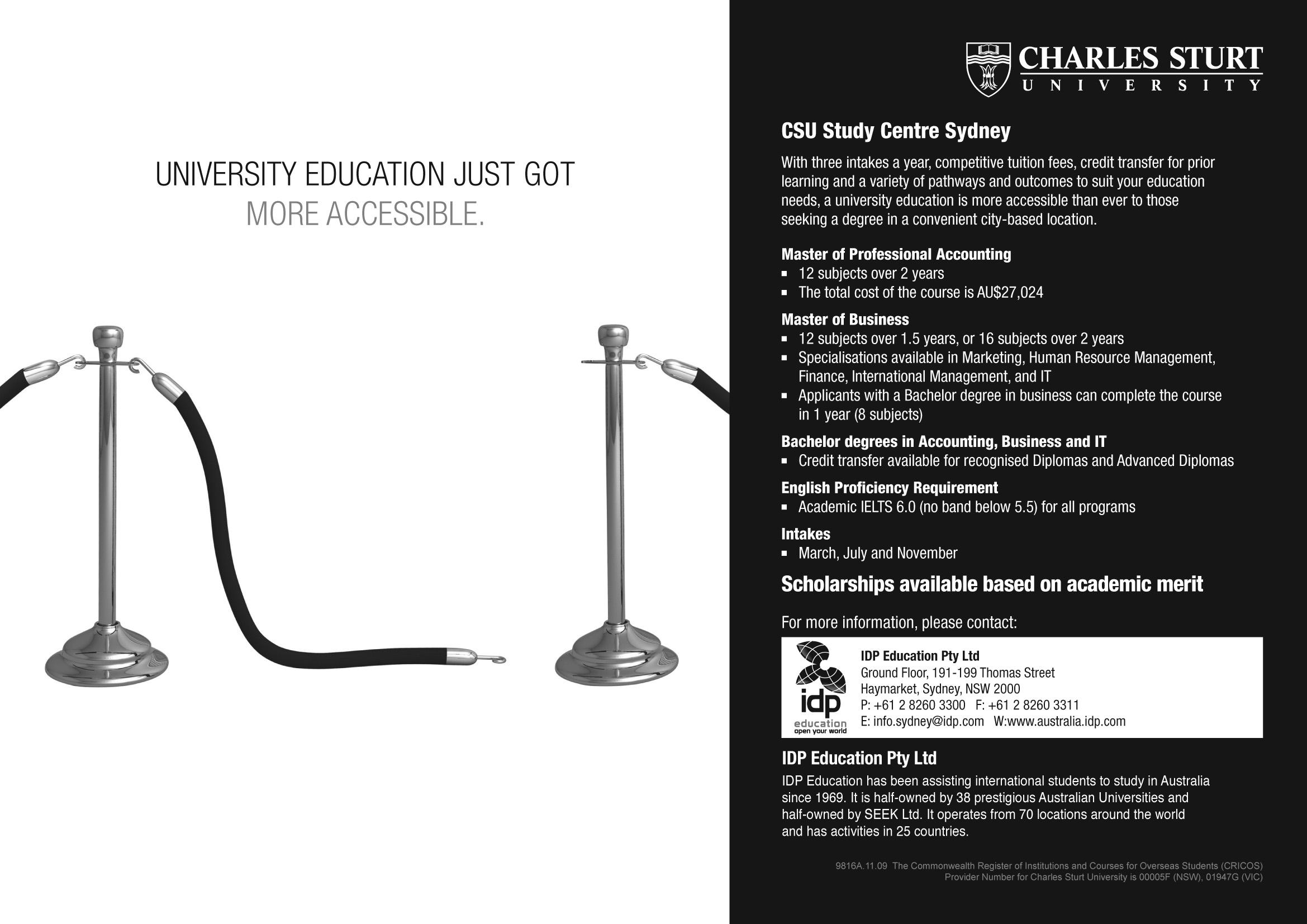

28 <> MAY (1) 2010 INDIAN LINK

MAY (1) 2010 <> 29 NATIONAL EDITION
He changed the way we treat TB in Australia
Dr Chitta Mohan Mukerjee, who passed away following a stroke on April 14, will be fondly remembered by his medical colleagues, patients and many others for his influence on public policy in New South Wales. As a result of his ongoing advocacy, supervised or directly observed treatment of tuberculosis became a mandatory practice throughout NSW. Dr Greg Stewart, Director of Population Health, Planning and Performance, Sydney South West Area Health Service noted that Chitta single handedly advocated for a practice that led to much better public policy and to the potential for a reduction in reactivation, resistance and drug reaction among tuberculosis patients.
Born in West Bengal in 1927, Chitta Mohan Mukerjee migrated to Australia in 1973 with a wealth of medical experience particularly in the diagnosis and treatment of infectious lung diseases such as tuberculosis. As a young doctor in India, he had valiantly addressed epidemics of cholera, bubonic plague, typhoid and kala-azar, in remote areas, with few medical facilities and often in extreme weather conditions.

In 1970, Chitta migrated to Ghana in West Africa, where he saw three years of intense medical practice. Ghana’s first military coup forced Chitta and his family to leave, and he arrived in Australia with his wife and three children.
Chitta Mohan Mukerjee worked tirelessly to establish the Australian chapter of his medical career, starting as an intern at the
Royal South Sydney Hospital, where he soon became a registrar. He later worked for the Public Transport Commission, the Joint Coal Board, Dust Diseases Board and the tuberculosis divisions of NSW Health, including chest clinics at the Prince of Wales, former Prince Henry and Liverpool Hospitals.
In 1978, he became a member of the Thoracic Society of Australia. He gradually gained recognition and spoke at medical conferences in Australia and overseas, as well as published many papers. Due to his expertise and his contribution to thoracic medicine, Chitta was officially recognized as a consultant thoracic physician by the Thoracic Society of Australia and New Zealand in1993, at the age of 66. He worked as a consultant thoracic physician for ten years before he was sadly afflicted by the first of five strokes. He instantaneously went from being an eminent doctor to a patient.
Determined to fight against the effects of multiple strokes, Chitta remained passionate and devoted to the world of medicine until the end. He passed away at his much loved Prince of Wales Hospital (Randwick, Sydney), where he had worked many years earlier.

Associate Professor David McKenzie, Head of Respiratory and Sleep Medicine at the Prince of Wales Hospital, spoke at Chitta Mohan Mukerjee’s funeral, held at the Prince Henry Hospital Chapel on April 20. He said Chitta will be remembered for
his dogged pursuit of excellence in the management of tuberculosis (TB). “And he is to be credited with single handedly changing the way that we treat TB, not only in NSW, but throughout Australia. This particular way of treatment is called direct supervised therapy and due to its success, we have the lowest rate of TB in Australia and in the world. He was a wonderful man, humorous, generous, honest, courageous, but above all, he was a committed family man,” he added.
Professor Sydney Bell, Director of Microbiology, South Eastern and Illawarra Area Health Service, said Chitta is one of the unsung heroes in medicine, not only in Australia, but throughout the world. He is the pioneer and the instigator of supervised anti-TB therapy. Chitta’s son, Chinmoy, a Principal Hospital Scientist at the St George Hospital in Sydney’s South said, “We will miss Dad immensely and the void will never be filled. Dad achieved beyond his expectations. It was all due to his hard work, perseverance and patience. He never wavered from what he thought was right. He remained a dutiful family person, a compassionate man and a devoted doctor.”
The oldest of his three grandchildren, 13year old Vivaek, remembered his grandfather as someone with a larger than life personality and for whom medicine was the most defining feature. “My grandfather chose
30 <> MAY (1) 2010 INDIAN LINK
TRIBUTE
Dr. Chitta Mohan Mukerjee (1927-2010)




MAY (1) 2010 <> 31 NATIONAL EDITION $950 plus Tax $699 plus Tax $416 plus Tax $699 plus tax Open 9 am to 9.00 pm all 7 days Please walk in or call our ALL NEW branch at "LITTLE INDIA WENTWORTHVILLE" on 02 91515665 (4.00 pm to 9.00 pm all 7 days.) or main office from 9 am to 5.30 pm Mon to Fri on 02 91515666
A tribute, in dance, to a legendary singer
Natyanjali Australia was conceived in 2008 with a vision to promote Indian classical dancing in Australia. On 1 May they pieced together a delightful evening of entertainment which had contributions from well known choreographers –Shurajit (a well-known TV producer from Jaya TV), Kelucharan Mahapatra (a world-renowned guru of Odissi dance), Hamsa Venkat (a Sydney-based dancer, teacher and choreographer whose work is already known to Sydney audiences) and finally Masako Ono from Japan, who gave a charming Odissi recital and crowned it with a couple of contemporary items choreographed by herself . The highlight of the evening was a choreographed tribute to the late Smt. ML Vasanthakumari on her 81st birth anniversary.
MLV as she is fondly called, is a household name with a huge fan following among Carnatic music lovers – her massive contribution to the artform is ranked alongside that of MS Subbalakshmi as a top notch Carnatic musician. Radhika Shurajit described the event as an earnest attempt to create visual images of MLV’s music – a highly challenging task. Not only was this a novel way of recreating MLV’s renditions as a classical singer, but her role as a playback singer of yore in feature films where she lent her voice for the famous Travancore sisters.
Radhika Shurajit obviously delved into the past, researched the essence of MLV’s melody and gave it shape through talented dancers, dance teachers and their students. Those who participated in the workshop must have worked through demanding schedules indeed for this event’s dance items.
Radhika, the senior most disciple of Dhananjayan, is a famous dancer and choreographer for feature films and produces the popular dance show Taka Dhimi Tha of which Jaya TV has telecast over 400 episodes.

The evening kicked off with Saravanabhava choreographed by Hamsa Venkat, which described the beauty of Lord Muruga, the six headed son of Lord Shiva. The dancers portrayed aspects of Lord Muruga’s life as he preached to his father, his obtaining his favourite weapon, ‘the vel’ (spear) from his mother Parvathi and his slaying of Tarakasura and his marriage to Valli, the gypsy girl. Govinda Pillai, Divya Sriram and Sangeetha Sriram acquitted themselves creditably in their respective roles.
Radhika Shurajit’s bharatanatyam troupe


Radhika Shurajit’s invocation song Aadum Arul Jothi sung by MLV in praise of Nataraja the Lord of Dance and Bharatanatyam, was a pleasing blend of ‘bhava’, ‘ragam’ and ‘talam’, and dancers depicted the various aspects of worship of “the Nataraja”.
Maalai Varum Velai which followed, described the beauty of Lord Muruga, his “vahanam (vehicle)”, the peacock and his consorts Valli and Devanai. MLV’s music conveys the “bhakthi bhava” in her unique “MLV Bhani (style)”.
Aadal Kaaneero was the next item in MLV’s magical voice. It illustrated the collection of anecdotes from the Shiv Purana and the several miracles depicted in dance form by the artistes.
Ayyasami and Kavadi, folk numbers crisply rendered by MLV, were matched by the swift
movements of the dancers on stage.
Konjum Puravey and Andhi Mayangudhadi were items that conveyed the ‘shringara rasa’ - the dancers were maidens yearning for their lovers.
Aadatha Manamum was a musical dialogue between the hero and the heroine and MLV’s solo singing replicated this by singing in a lower base to create the mood for adaptation in a Bharatanatyam format.
Baro Krishnayya turned out to be a most appealing item owing to a combination of Sri Purandaradasa’s composition and sung by MLV’s mellifluous voice. Shanti Raman who danced the item showed a professional touch by her rhythmic movements and excellent ‘abhinaya’ .
The last item before the intermission was the Thillana MLV had sung this for the Hindi film Chori Chori under the direction of Shanker Jaikishen. The Bharatanatyam adaptation of this Thillana was
attempted for the first time and was marked by precision and beautiful movements. As always, this item brings a sense of climax to the proceedings. To the credit of the choreographer, it must be said that it was a magnificent effort. It contained the variety, the rhythm, the bhava and the abhinaya where appropriate even though it must have been a tough ask of the performers to bring forth their best in most of the items, which were of a short duration (between 3 and 4 minutes).
A divine journey:
Masako Ono’s Odissi recital
Natyanjali Australia deserves commendation for presenting Masako Ono, a dancer with several feathers to her cap. She has trained with Martha Graham Dance School, USA. She is proficient in Western Classical Ballet, Jazz and Hip Hop (which she learnt at K-Broadway Dance Centre, Tokyo) and contemporary martial arts dance forms in Japan and India – of course, in addition to learning and perfecting the Odissi Dance under the guidance of well known Odissi dancers like Protima Bedi and Guru Kelucharan Mahapatra for the last 15 years.
Masako Ono has performed and conducted lecture demonstrations in USA, Canada, Italy, France, Malaysia, Singapore, Indonesia and Sri Lanka. She has performed for Prime Ministers Shinzo Abe and Junichiro Koizumi in Japan. The Acting Japanese ConsulGeneral in Sydney attended her Sydney performance.
With such impressive credentials, Masako Ono appears to have her feet firmly planted on the
32 <> MAY (1) 2010 INDIAN LINK CLASSICALSCENE
Radhika Shurajit’s troupe
ML Vasanthakumari
ground and her rapport with the Sydney audience was to be appreciated. She commenced her recital with 2 items choreographed by Guru Kelucharan Mahapatra – the Hamsadhwani Pallavi and an Ashtapati from Gita Govinda by Jaideva. Masako appeared quite relaxed throughout - when depicting a blossoming flower or when portraying a despairing Radha pining for Lord Krishna in full knowledge of their physical separation but their spiritual unification. Her ‘abhinaya’ was par excellence despite her natural disadvantage of ‘expressive eyes’ that some of the Indian dancers use to aid their emoting.
Shiva Panchakshari, a ‘stotra’ by Adi Jagadguru Sri Sankaracharya Bhagavatpada, was choreographed by Naba Kishore Mishra. Masako Ono’s item included salutations to Lord Shiva the wearer of “Nagendra” (King of Serpents), “bhasma” (ashsmeared body) and bearer of the “Third Eye”. She appeared very genuine as a worshipper of the Supreme Lord.
The last two items presented by her were her own choreography – the Divinity Within (Kundalini Satvah) and Frozen Grace (Visual Haiku)”. In these numbers she was at pains to demonstrate the “Shakti within” and the cosmic energy of Sri Kundalini which is behind spiritual transformation. Kundalini is described as residing within the human body – coiled like a serpent at the base of the spine. is depicting a butterfly in a freezing cold winter who gathers all her strength to brave the cold and reach higher spaces. The butterfly symbolises the beginning and the end of life. Both these items were brilliantly conceived and performed by the artiste. Whilst the Kundalini Stavah is from an ancient Sanskrit text, the Rudra Yamala Tantra and a prayer to Serpentine Goddess Kundalini, the Haiku is a poem inspired by Zen Buddhism. For the audience it was an ‘evening to remember’ and will linger in the memory for a while.
Malli Iyer
Jayanthi 2010
Sydney’s Carnatic music lovers came together on ANZAC Day (25th April) at Dundas Community Centre to celebrate the anniversary of Swathi Tirunal Maharajah who was the ruler of Travancore State from 1829 to 1846. Swathi Tirunal was a great patron of music who encouraged Hindustani as well as Carnatic music. A great composer, he made over 400 compositions in the Carnatic style of music. He was an ardent devotee of Lord Padmanabha. During his lifetime he learnt 9 Indian languages including Sanskrit, Hindi, Tamil, Malayalam, Oriya, Kannada, Marathi and Telugu. He studied music from his childhood and propogated the art in the Travancore State by honouring visiting musicians, scholars and poets.
Maharajah Swathi Tirunal was a poet, scholar, musician and composer himself. He studied astronomy and established an observatory which is still in operation in Thiruvananthapuram today. He was also responsible for creating a press, a public library, a museum and zoo all of which are today in the hands of State Government authorities. He was one among the benevolent rulers who patronised arts and culture.
Swathi Tirunal Jayanthi is organised by a handful of Keralite families, prominent of whom are Mrs. Prema Ananthakrishnan, Uma and Ramu Ayyar and Jay Raman. The annual get together is attended by the Indian community in large numbers. The function started with a small pooja to Lord Ganesha and followed by group singing of Bhaavayaami Raghuramam which is one of the well known compositions of Swathi Tirunal, a summarised version on the life of Lord Rama. This was followed by small groups singing Swathi Tirunal compositions well past the afternoon. The occasion was noted for the number of cream coloured sarees tied in the special Kerala style. There was an undoubted Kerala flavour even in the lunch that was served to all those present.
Events such as this are essential for the Indian community at large and help them preserve the culture, pass on the traditions to younger members and above all bring in colour and passion within the community.


MAY (1) 2010 <> 33 NATIONAL EDITION www.indianlink.com.au
Malli Iyer
Masako Ono
Photos: Fish-i-Foto Art 2010


34 <> MAY (1) 2010 INDIAN LINK
“Killing machine Kasab deserves death”
Ajmal Amir Kasab is “Satan, a devil” and “a killing machine” and deserves the death penalty, Special Public Prosecutor Ujjwal Nikam told the court a day after the Pakistani terrorist was held guilty in the 26/11 terror mayhem in Mumbai.
India’s quest for justice for its most wounding terror attack culminated recently with a special court pronouncing Pakistani Ajmal Amir Kasab guilty on all 86 counts for the 26/11 slaughter, while acquitting the two Indian co-accused - Fahim Ansari and Sabauddin Ahmed.
Winding up the year-long trial into the Nov 26-29 terror siege of Mumbai that ended with 166 Indians and foreigners getting killed and 244 injured, Special Judge M.L. Tahaliyani also found the involvement of 20 other Pakistanis.
Among them were Lashkar-e-Taiba commander Zakiur Rehman Lakhvi, Hafiz Saeed and Abu Hamza, three of the men who used a complex network of agents and killers to mastermind a terror attack that shocked the world.
Kasab, 23, the lone Pakistani captured alive during the Mumbai carnage, was held guilty under nine Indian laws for murder, waging war on India and a litany of other crimes. He listened attentively with his head bowed while Tahaliyani read out the 1,522-page verdict for almost three hours in a special courtroom in the high-security Arthur Road Jail.
His conviction was based on CCTV footage showing him striding across the Chhatrapati Shivaji Terminus with an AK47 and a backpack. The prosecution had called 653 witnesses to testify against the LeT operative born to poverty in a village in Pakistan’s Punjab province.
The judge ruled that Kasab was guilty of directly killing seven people and a total of 59 with associate Abu Ismail, who was shot dead after running into a police picket at Girgaun Chowpatty early Nov 27 - shortly after the terror assault began in the heart of India’s financial capital on the night of Nov 26.
Kasab, who faces a possible death sentence, sat through the hearing quietly, witnesses said. When the judge read out the guilty verdict, Kasab listened with his head bowed. Judge Tahaliyani then asked the defence counsel to explain the details to Kasab.
The process of sentencing had begun as this paper went to press.
Indians Ansari, 36, and Ahmed, 25, also showed no emotion as they were absolved of involvement in the attack that derailed relations between New Delhi Islamabad.
Ansari, from Goregaon, and Ahmed, from Madhubani in Bihar, had been charged with conspiracy by preparing maps of the targeted locations in Mumbai and handing them to LeT operatives.
While Law Minister M. Veerappa Moily extolled the trial as a “victory for the judiciary, a victory for the country”, his colleague Home Minister P. Chidambaram said it underlined that India was a “country governed by rule of law”.
“The judgment is itself a message to Pakistan that they should not export terror to India...,” Chidambaram said in New Delhi, adding the acquittal showed the “independence and integrity” of the Indian judicial process.
“The tragic dastardly incident of 26/11 has really disturbed the psyche of the entire nation. The manner in which the trial was held, the manner in which witnesses have been examined, it is one of the outstanding cases,” Moily said. “As far as this case (is concerned)... this is a victory for justice, this is a victory for the country,” the minister told reporters.
He maintained that Ansari and Ahmed were “notorious terrorists” and active members of the LeT.
The judge accepted the 42-page confession Kasab had given after his arrest. Kasab had later sought to deny his involvement, but the judge was not swayed by the half-hearted denials.
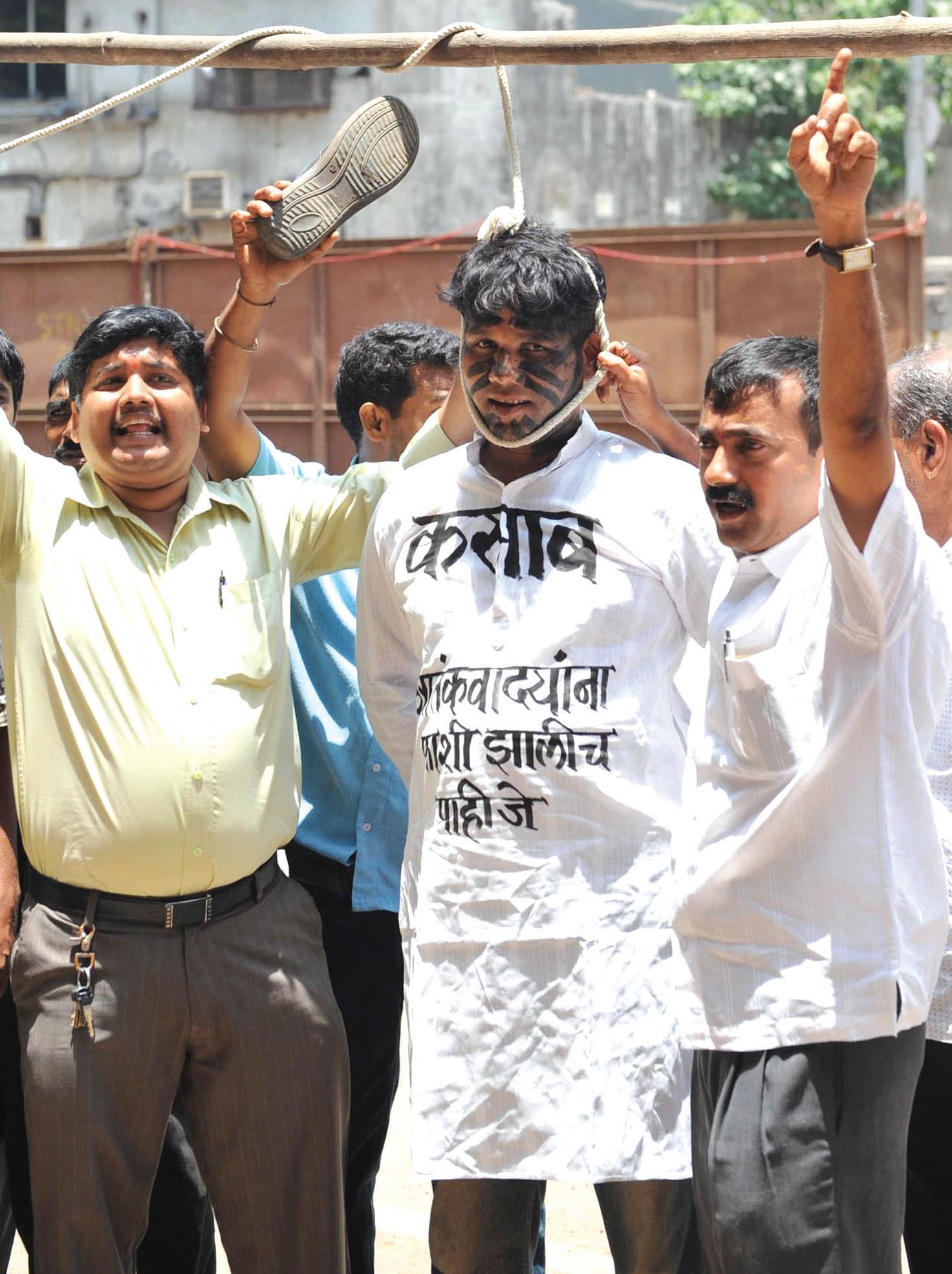
Besides various sections of the Indian Penal Code, Kasab faced charges under the Explosives Act, Arms Act, Passport Act, Prevention of Damage to Public Properties Act, Customs Act, Explosive Substances Act, Bombay Police Act, Foreigners Act and Unlawful Activities (Prevention) Act.
The 60-hour audacious attack that began on the night of Nov 26, 2008 and went on till the afternoon of Nov 29, 2009 was carried out by 10 Pakistani terrorists, including Kasab.
They targeted sites like the crowded Chhatrapati Shivaji Terminus railway station, the iconic Taj Mahal Palace and Tower Hotel, the nearby Hotel Oberoi-Trident, the Cama Hospital and the Chabad House, a Jewish prayer centre, and Leopold Café, a hangout popular with Indians and foreigners.

“We want to see Kasab hanged!” was the dominant sentiment in Mumbai after a Special Court pronounced Kasab guilty of murder in the 26/11 terror attack.
Kasab would get the death sentence.
“I am glad Kasab was found guilty. I will be at peace only after the punishment to Kasab is awarded and implemented,” she said.
Agreed 60-year-old Mohammed Hanif
Peer Mohammed, “Although the judgement is out and the accused (Kasab) has been found guilty, I want to see him hanged
Abad Ponda, an eminent criminal lawyer. Another criminal lawyer, Samsher Garud, said he saw the acquittal of Ansari and Ahmed coming. “There were no eyewitnesses or direct evidence. This was bound to happen”.
“As for Kasab, there has to be a death sentence. We might be setting a wrong precedent otherwise,” added Garud.
MAY (1) 2010 <> 35 NATIONAL EDITION
Photo: AP
KNOW THYSELF AS SOUL
Sant Mat is a practical spiritual path based on meditation, ethical living, service to others & love for all creation. Its goal is to enable the soul to return & merge into its source; the purpose of human life described by mystics of all traditions. Discipline & dedication are essential, as is the help of a competent living master. Entry is via a preparation program. There is no charge at any stage.

For more information...

Contact Sita 0408 880 155
www.santmat.net.au

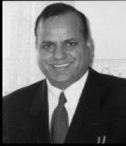
Know Thyself As Soul Foundation is a not for proft association incorporated in NSW
SHREE SAI GURU
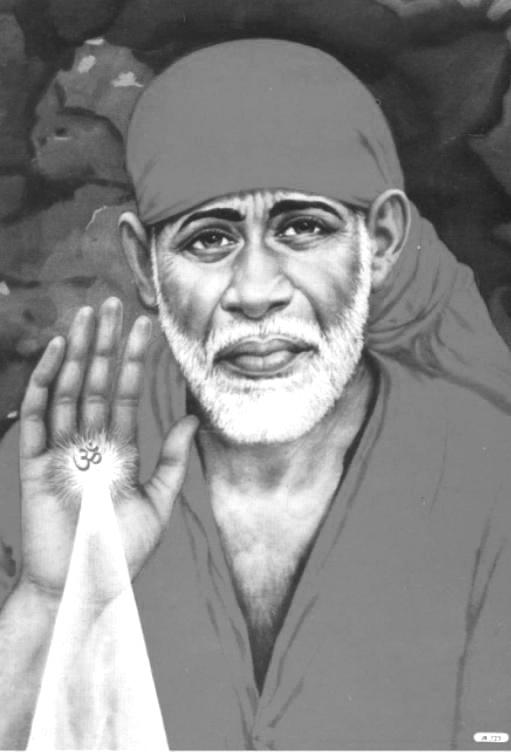
ASTROLOGICAL MANDIR ASTROLOGER
PANDIT . VIJAYENDRA MAHARAJ (BRAHMACHARYA)
WE WILL CONSIDER YOU BY READING YOUR PALMLFACELHOROSCOPELNUMEROLOGY AND BY OTHER ASTROLOGICAL METHODS WE CAN PREDICT YOUR PAST PRESENT AND FUTURE BASED ON YOUR KARMALFATELPRAKRUTHI

WE CAN SUGGEST AND SOLVE THE PROBLEMS IN FAMILYLLOVELRELATIONSHIPLBUSINESS WEALTHLHEALTHLHUSBAND & WIFE PROBLEMSLMARRIAGE MATTERSLFINANCIAL MATTERS ENEMITYLEDUCATIONLDIVORCELSICKNESSLCHILDRENS PROBLEMS ETC
WELL KNOWN IN SPIRITUAL HEALINGS, DEVI MANTRAS, LAKSHMI POOJAS, SHANTI POOJAS, PANCHABOOTHAS, REMOVE MAGIC AND GIVING PROTECTION
PRIVATE AND CONFIDENTIAL PLS CALL FOR EARLIER APPOINTMENTS
0422 068 700 L 0435 770 050
Himalayan Supermarket, (Inside), 19 South Street, Granville, NSW 2142 (1 minute from station)
36 <> MAY (1) 2010 INDIAN LINK
SARVE JANA SUKHINO BHAWANTHU
Madhuri’s acts caused “no security compromise”
A junior Indian diplomat Madhuri Gupta has been arrested on charges of passing on information to the Pakistan intelligence agency on April 27. According to officials, she came under suspicion months ago and was called to Delhi on the pretext of helping to prepare for the SAARC summit that ended in Bhutan recently.
However Gupta has denied the charges, claiming she is being framed.
According to a police official, Gupta said she was not a senior officer and could not have passed on sensitive information to her contacts in Pakistan where she was posted in the Indian High Commission. But she had revealed the identities of Indian undercover agents in Pakistan.
Madhuri Gupta was a lonely spinster with a taste for life’s good and extravagant things. She also bore a grudge against her superiors. So when she got a chance to work on her Urdu language skills at the Indian mission in Islamabad, exposing her to virulent anti-India propaganda from rightwing Pakistani media, it didn’t take long for the junior Indian diplomat to turn against her own country.
Piecing together information from her confessions and a dissection of her e-mails, interrogators have profiled a woman who fell for blandishments and non-financial lures to sell her country’s secrets as she indulged in her weaknesses. The 53-year-old, who was second secretary in the press and information section at the Indian High Commission at Islamabad, also saw it as an opportunity to get even with her bosses at the external affairs ministry who would not even grant her paid study leave she thought she was entitled to.
So she used her knowledge of Urdu to familiarise herself with the issues that bedevil bilateral issues, kept her eyes and ears wide open for the vital and the trivial and made frequents trips to New Delhi to bring herself up to speed with the current thinking on Pakistan, giving her insights from what she was able to gather on the peace dialogue, SAARC, terrorism and military issues.
She also visited LOC in the Kashmir region only weeks ago.
But just as curiosity killed the cat, her “unusual” eagerness to inform herself about military matters of concern to Pakistan earned the suspicion of the defence attache’s office at the Indian High Commission who then trapped her with false leads that ultimately led to her undoing and her arrest.
“It was this undue curiosity of things
that did not concern her that proved her undoing,” said a well-informed source with access to her interrogators’ reports.
But it is yet unclear what Gupta got from her handlers, who included members of Pakistan’s Intelligence Bureau leading perhaps up to the notorious Inter-Services Intelligence, as her bank accounts have not revealed any unusual transactions or large deposits.
“She does not seem to have done this either for money or love,” the sources said, adding that the jury was still out on her and more secrets might come out in the course of further interrogation and investigation.
The possibility of Gupta acting as she did just to “get back” at her “tormentors” in the MEA is not altogether being ruled out, but the gravity of her actions and the sustained period of several months for which she played the mole for the Pakistanis is making counter-intelligence authorities here delve further. They are hoping that the reading of her computer hard disc would throw up more evidence and clues.
There is little doubt that the Pakistanis played on her psychological insecurities: a lonely woman, with no parents, her only sibling a brother not much in contact; a woman who drank and ate heavily, had flamboyant tastes in clothes and jewellery and was susceptible to pampering with personal gifts.
Her knowledge of Urdu that exposed her to major Pakistani newspapers, particularly papers like the Nawa-i-Waqt, owned by Majid Nizami, widely believed to be connected to Lashkar-e-Taiba founder Hafiz Saeed also with known links to the ISI, proved potent motivational influences for her, officials said.
However, it is unlikely that she was able to pass on reports of any significant or sensitive nature other than the high commission’s activities, and till now there is no indication that there has been any serious security compromise or that important documents were traded, knowledgeable sources added.
A thorough study of her mails revealed that she was a “faithful
Promoter Needed
A fast growing telecommunication company needs promoters to market and promote the products. Required good communication skills and can speak multiple languages. Attractive hourly rate plus rewarding commission.
Please contact Louis 0404099637 or email to promoters@telpacific.com.au.

reporter” of the events and schedules at the Indian High Commission, giving daily and weekly reports of the engagements of the high commissioner and other staff and other schedules which she diligently kept track of.
“We are pretty certain that no serious damage to India’s security interests have been caused (by her transgressions),” a senior security official admitted, speaking with full knowledge and authority.
“To the best of our knowledge, she has not passed on a single document to her handlers,” the official said. “Most of what she said was pretty routine stuff.”
Gupta, a member of the secondary cadre known as Indian Foreign Service-B, was employed as an Urdu translator who also mixed with Pakistan’s Urdu media journalists by being in the media department of the mission. She had earlier worked with the Indian Council of World Affairs (ICWA), a foreign policy think tank, besides missions in Kuala Lumpur and Baghdad, before she was posted to Islamabad. She had then shown great keenness to go to Pakistan citing her fluency in Urdu.
The official said certain sections of the media, particularly TV, were having a free run in their speculation of what Gupta was up to and how much of India’s security may have been compromised by her actions, but said given the sensitive nature of the issue little can be done to counter what were essentially “blatant falsehoods and half-truths”.
He said the electronic media was only “feeding on itself” and was trying to make things as dramatic and salacious as possible in their familiar game to garner TRPs.
In parliament, Minister of State for External Affairs Preneet Kaur said Gupta did not have access to highly classified material but investigations were continuing and she was cooperating with her questioners.
“I rise to inform this august house that as a result of our counter intelligence effort, we had reason to believe that an official in the high commission of India in Islamabad had been passing information to the Pakistan intelligence agencies,” the minister said in a statement in the Lok Sabha.
“The position occupied by the official did not involve access to highly classified material. The official is cooperating with us in our enquiries. At this stage, for national security reasons, it is not possible to divulge more detail about the information that may have been compromised or to comment on this case as our investigations are continuing,” she added.
IGNOU to waive fees of sex workers, street children
The Indira Gandhi National Open University (IGNOU), one of the world’s largest universities, has decided to waive the fee of sex workers and street children enrolling for its courses to help them become educated and empowered.
Disclosing this at a media meet recently, IGNOU Vice Chancellor V.N. Rajasekharan Pillai said the university’s Kolkata Regional Centre ran a study centre at Durbar Mahila Samannya Samiti, an organisation of 65,000 sex workers, to educate them as also their
Continue on page 39
MAY (1) 2010 <> 37 NATIONAL EDITION
Chef required
part time full time chef experienced in South Indian cooking for a busy take away is required Pl. call on 0414173657
A

38 <> MAY (1) 2010 INDIAN LINK
wards.
He said the university has recently tied up with the Cochin International Airport Authority to conduct focused management courses in aviation and airport infrastructure and technology, after realising there was a paucity of aviation industry professionals.
He said, “The University had been working on a series of new and path-breaking ideas to meet the diverse and often daunting expectations of a large number of learners who cannot afford to acquire education from a conventional university. Many of the new programmes are being expressly aligned to the needs of industry.”
Pillai said IGNOU was very keen to reach out to the victims of violence and help them resurrect their lives through education.
It has also started a short term training programme for school head masters of the Sunderban region initially on a pilot basis to develop skills of the concerned to serve more effectively.
Pillai said the placement cell of the university was gearing up to meet employability demand through planned industry presentations and contact drives, and by working out a system of enhancing communication and personality skills, which have been identified as key need areas for several students.
Is the new school evaluation system adding to stress?
Is the government’s new move to make education more meaningful and less academics-oriented adding to the burden of the already stressed child? Most students feel so, but there are also supporters who say “just give it some time”.
CCE, or Continuous and Comprehensive Evaluation as the new system is called, is a pet hate word of Apoorva Ghosh. A Class 9 student of a leading public school, Apoorva hates CCE for the “shackles” it has put around him - daily studies, endless projects, surprise tests and, what is worse according to him, he can’t talk and joke loudly with friends any more.
“CCE, CCE...I detest this new method,” mutters Apoorva, a fun-loving boy, as he toils through daily studies and hurries to finish a pending Hindi project. He has just handed over a mathematics project, and “has no time to breathe” as he has to finish the Hindi project.
“What is worse, now teachers openly warn us, ‘If we see you with your shirt outside your trouser we will give you low grades’, or ‘If you shout or speak loudly, we will reduce your grades’,” recounts the 14-year-old.
His mother Madhumita told IANS: “The new method has pushed my child into sitting for hours and studying or finishing projects every day. He is quite a laidback student, but now I find him scrambling to finish his work, he doesn’t want low CCE grades. The pressure is certainly there on the child to perform.”
Launched by Human Resource Development Minister Kapil Sibal last year in a move to do away with purely academics-based studies and the Class 10 board examinations of the Central Board of Secondary Education (CBSE), the CCE also aims to include the child’s talents as in singing, theatre, debating and art as part of
the assessment.
It does away with the marking system, replacing it with grades. Like - A1 for 91-100 marks, A2 for 81-90, B1- for 71-80, and so on till D - 33-40 marks - and finally E2 - 0-20 marks.
However, this has had a welcome fallout for Rishabh Krishnan, a Class 10 student of Apeejay School, Noida. His delighted mother Jayanti said, “The CCE has some good effects too. My son is an average student, but since the CCE takes other factors into consideration, he has got A2s in his report card, which feels so great.”
On the flip side, there are the bright children who are unhappy with the grading system. “Now there is no difference between a student who gets 100 and 91, both get an A1. What’s the use of killing ourselves studying to become top scorers?” wonders Sangeeta Chibber, a Class 9 student of a public school who has always been topping her class till now.
Under CCE, each term will have two Formative Assessments, which includes grading on the projects, the surprise tests, behaviour of the child, extra-curricular activities and the school unit test - based on 50 marks, and a Summative Assessment or a term examination - based on 50 marks.
While the schools have implemented the CBSE scheme and the teachers and students are grappling with the new method, most parents are at sea.

“My daughter now speaks in abbreviations like, ‘Our FA-1 begins next week and after that we will have FA-2, and the SA will be in September’. When I asked her what it means, she got impatient and said I should know it!” said Joyita Mathur, the mother of a Class 9 girl.
For teachers, the CCE means devising new methods of drawing the child’s talents out and thinking of interesting projects.
“It has just kicked off, but in the long run it is good for the child because now the child is graded for extra-curricular activities. So even if the child is poor in academics but good in sports or singing, that will fetch the child good grades. Academics is not everything under the new system,” said a
teacher at a public school declining to be named.
An enthusiastic votary of the new system is Usha Subramaniam, a parent. “Initially, such things take time to settle down and there is resentment, but just wait and watch, it will do wonders for the education system.”
India has great media potential: FT
The Financial Times (FT), among the world’s leading business newspapers, is looking for opportunities in the Indian market as the country holds a “great potential” for print and other news media.
“India holds great potential for print and news media,” said John Ridding, FT chief executive officer, adding that his organisation is trying to breach into the Indian market as well as the other emerging markets of the world.
Addressing a session on ‘The Internet and the Crisis Confronting the News Media’, organised by the Aspen Institute India and the FT recently, Ridding said the potential for India in terms of print, television and internet media is immense.
“The amalgamation of the three can not only regain the readership that is being lost to the new forms of digital media, but it could also be the next big innovation since the printing press,” he said.
He emphasised that the internet can bring back the era of true journalism as it is hardly affected by the external pressures such as advertising and corporate partnerships.
Internet journalism can help achieve transparency in issues such as elections, governance and corruption, three of the major issues affecting the interaction between media and the people of India, he said.
“Internet does not hold to any national boundary which allows it to be one of the greatest mediums of information sharing. Businesses should change their models and tweak their strategies in order to achieve a better market share.
What publication corporations could not provide, the internet could. The cost of news and information on the Internet has always been free and thus more appealing
to a majority of readers. In recent years, the internet has become the primary choice as it provides a platform for direct engagement between the readers and the journalists unlike in the print media,” he said.
According to him, the internet is a tool that corporations need to harness rather than shun.
Bill passed for mandatory care to emergency patients
The Lok Sabha recently passed a bill that will make it mandatory for doctors, hospital and other clinical establishments to treat emergency patients and not turn them away on baseless excuses.
The Clinical Establishments (Registration and Regulation) Bill, 2010, was moved by Health and Family Welfare Minister Ghulam Nabi Azad in the lower house of parliament, which passed the bill, amidst din and vociferous protests by the opposition members over allocation of 2G spectrum.
The legislation makes obligatory for clinical establishments to provide treatment and stabilise anyone who comes in an “emergency medical condition”.
The legislation also sets up a national council which will classify, determine and develop standards of clinical establishments and also develop standards.
Besides, with registration of clinical establishments to be made mandatory, the council will also compile and pubic a national register.
As per the text, the bill, once passed, will apply to all clinical establishments belonging to any recognised systems of medicine, as well as single doctor establishments with or without beds.
Each state will set up a multi-member state council of clinical establishments, while the registering authority will be a multi-member body at the district level.
There will be two types of registrationprovisional and permanent, which will be provided after standards have been notified.
The legislation also ensures that all transactions under its purview would be transparent and in the public domain.
MAY (1) 2010 <> 39 NATIONAL EDITION WWW.COLORSOFINDIA.COM.AU 95 Victoria Road Parramatta NSW 2150
IANS
Photo: AP Continued from page 37
Naval officers walk on a deck of the Indian Navy’s newly-commisioned warship INS Shivalik in Mumbai.INS Shivalik, the first of the three new ‘stealth’ frigates for the Indian Navy, is equipped to protect against nuclear, biological and chemical attacks
A Season of Sixes
The IPL has proved to be a great platform for showcasing cricketing skills through its teams and their players
 BY RITAM MITRA
BY RITAM MITRA

Rajasthan Royals



The third season of the IPL was every bit as big as the last two seasons, and then some. The competition was fiercely close (with the unfortunate exception of Kings XI Punjab) and saw the tournament end with only one dead rubber played, between Mumbai and Kolkata in the final round match. Even so, there was a mathematical chance of Kolkata qualifying for the final if they somehow
Kings XI Punjab

beat the Mumbai Indians by 175 runs in their final match or, after being sent in to bowl first, concede 317 runs and chase it down in 1 ball! With a panel of leading cricket fans (who are often more “expert” than the “experts” themselves!), here’s a look at each team’s season and favourite fan moments. Here are the wrap-ups for the 2010 IPL.
Unfortunate is the one word that sums up the Kings XI season. Let down by a string of poor bowling performances (including those two infamous last overs by Irfan Pathan and Brett Lee), the side was completely reliant on their two Sri Lankan heroes, Sangakkara and Jayawardene (who proved to be the surprise of the tournament). Although they scored more runs than five of the other teams, they conceded over 100 runs more than anyone else in their bowling “efforts”. However, a strong finish to the season allowed them to mess up the other teams’ chances (and Kolkata fans in particular will forever hold a grudge).
Parneet Bhatia’s Unforgettable Jayawardene’s 100 vs Kolkata, helping them chase down 200 with absolute ease.

Forgettable: Dhoni’s blistering knock in their final round match which left Punjab in tatters as usual, and Knight Rider fans in tears
A dismal start to the season proved to be the difference between a semi-final spot and seventh place. With three consecutive losses, then four consecutive wins, the up-and-down season was too much for the young side to handle in the crunch moments. The season was further marred by the controversy surrounding talented young all-rounder Ravindra Jadeja’s ban from this edition, due to salary breaches. Could it also have been Warne’s last season of IPL?
Priti Sharma’s Unforgettable moment: Yusuf Pathan’s breathtaking 37-ball hundred almost chasing down a huge total against Mumbai in the opening match.

Forgettable: Exactly the same.
Chennai Super Kings
Lucky to be through at all, let alone crowned champions. The Super Kings were looking very vulnerable at several stages throughout the tournament and somehow managed to snatch defeat from the jaws of victory twice – failing to chase down 136 against Punjab and failing to defend 188 against Kolkata. However, it was through their ability to snatch victory from the jaws of defeat (as well as Raina’s absolute brilliance) that saw them through in the end. CSK produced the find of the tournament in Murali Vijay – who earned himself a callup to India’s T20 World Cup squad in place of Virender Sehwag.
Unforgettable: Ajay Balakrishnan sums up the thoughts of many, saying “Definitely Dhoni’s escapades in that final match of the group stage”, where Dhoni blitzed a fearsome half-century including two of the biggest and most clutch sixes ever seen. Forgettable: Losing to Punjab in a Super Over, when the match could’ve been won several times.

Delhi Daredevils
It is absurd how a team which is consistently the strongest on paper, consistently fails to reach the final. Delhi boasts what should easily be the strongest batting line-up in the competition, but was let down by several top-order failures and a poor team discipline. An explosive top order of Dilshan, Sehwag and Warner, three of the most fearsome hitters in the game, should have combined for totals upwards of 500 on at least a few occasions, but ended up with occasional brilliance and patchy form. You know you’re in trouble when Virender Sehwag is your side’s most economical bowler.
Divesh Vashist’s Unforgettable moment: Warner’s blistering century against the Knight Riders. Forgettable for Divesh, however, was Gambhir’s poor running between the wickets – his three consecutive run outs cost them at least two games.
SPORT
Kolkata Knight Riders


Another year, another exit. Kolkata fans, including this reporter, are left in the rain again. Shah Rukh Khan’s inspirational tweets were rendered useless, and KKR was once again, the butt of many jokes in this year’s IPL. After Mumbai’s strong march to the finals, KKR now remains the only team not to have made the semi finals in any of the three seasons, and it is hard, even as a fan, to dispute their hopelessness.
Ritam Mitra’s Unforgettable moment: Ganguly angling backwards in a spectacular fielding performance against Delhi, a win which he single-handedly scripted. Forgettable: Not so much a moment as a drawn out Knightmare – Ishant Sharma’s uselessness at US$900,000.
Royal Challengers Bangalore

Probably deserved to be in the final alongside the Mumbai Indians, and but still feature in the top three as a Champion’s League side. The Challengers’ season took off, thanks to an absolutely stunning performance by Jacques Kallis, who stood undefeated after almost two weeks of competition; an amazing feat considering he opens the batting. The season saw Bengaluru on top for much of the competition, until a rampant Mumbai stole their thunder. However, the side will be happy with making the semi finals two years in a row, following a disastrous first season.

Unforgettable for Sudarshan Arvind was Kallis - this IPL season proved to be a catalyst for the old warrior, who finished with the second-most runs. Forgettable: The baffling under-selection of Kevin Pietersen, who finished the series having played only 7 matches with the astonishing average of 59 and strike rate of 150.


Deccan Chargers
Nerves of steel, absolute grit and teamwork saw Deccan Chargers through the group stage in second place. Deccan looked to be resigned to a fate in the bottom two until a sublime run of five wins leading up to the semi final saw them reach the heights they set exactly a year ago. They were disappointing in the semi against Chennai due to yet another set of failures from serial culprits Gilchrist and Gibbs, but were lucky to feature at all.
Unforgettable for Rahul Mooray Pasala was definitely the abysmal performance in the third place playoff, scoring just 86 runs. Forgettable: Losing to Chennai in the semi final after being set only 143 to
Mumbai Indians


Impossible to sum up the season with quite enough superlatives. Where do we begin? Sachin’s unfathomable run of form in all forms of the game? Kieron Pollard’s brutality? How Saurabh Tiwary must be Dhoni’s long-lost twin? Mumbai’s season took off when Sachin started hitting his straps, and since then every single member of the side has contributed. Their bowling has been key; Harbhajan, Malinga and Zaheer Khan have been brilliant and should be forces to reckon with in the World Cup.

Unforgettable for Rajesh Dave was: Sachin Tendulkar’s sublime knock against the Rajasthan Royals, blasting 20 in the final over and setting up the win that saw them into the finals. Forgettable: There were barely any negatives, until the final when Kieron Pollard was held back till the fall of the sixth wicket. Chennai were lucky to win the finals, actually – it was Mumbai’s game throughout.
AndFinally..
Season 3 of the IPL was, like both other seasons, long. The closeness of the competition this year, though, left a much sweeter taste in the mouth (until the off-field controversies at the time this article was being written). Love it or hate it, the competition this year was at a fantastic new level and it was very refreshing to see such talented classic stroke-play by the likes of Tendulkar and Kallis infused with the explosive fireworks by young powerhouses such as Robin Uthappa and Saurabh Tiwary. Bring on IPL 4 – with or without Modi!

MAY (1) 2010 <> 41 NATIONAL EDITION www.indianlink.com.au


42 <> MAY (1) 2010 INDIAN LINK
Indo-Aussie links through the ages
A new literary offering that explores the relationship between two great nations
BY CHITRA SUDARSHAN
There is regular traffic between Australia and India with politicians and policy makers visiting each other’s countries these days. However, apart from the usual platitudes about cricket and a shared colonial past, there has not been a great deal done to engage with India – especially when compared with East or Southeast Asia, where experts have a strong presence and representation in Australian government and academia. It is partly strategic, and partly trade oriented; but whatever the reason, it will take years for that presence to be replicated by India scholars and experts. Rather sadly, children of first generation Indians and most Indian students here do not seem to have developed that passionate an interest in India to study it, or make a career or life’s work of it. Indian Studies Departments in many Australian universities have languished for want of student numbers and interest; and unlike in the United States, the Indian community here has not come forward and contributed to academia by setting up Chairs in Indian Studies in universities and the like. However, two Australians - both incorrigible Indophiles - have made a beginning: they have written a definitive book on Australia-India links from the dawn of history to the present, called Colonial Cousins: A Surprising History of Connections between India and Australia, (Wakefield Press, Adelaide). The book was launched at the Alexander Theatre, State Library, in Perth on April 17.
That the authors
Peggy Holroyde and Joyce Westrip both share such a deep love for India is evident: Peggy Holroyde was described by Khushwant Singh as the most ‘unusual Englishwoman’ he had met. She lived in New Delhi soon after independence in 1947 and has visited India innumerable times.
Smitten by the India bug quite early, she studied Indian religion at Oxford under Dr Radhakrishnan (who later became President of India), and is the author of several books on India such as Indian Music, East Comes West: Social Change Among Asian Families in England and An ABC of Indian Culture.

Joyce Westrip, OAM, was born in southern India in 1929, and moved to England in 1947; she has lived in Perth, Western Australia, since 1955. Fascinated by Indian history and culture since her childhood, she has visited the subcontinent on numerous occasions.

“India keeps drawing me back,” she once noted in the columns of this very newspaper. “When I said once to Indira Gandhi that I am a daughter of India, she looked at me and said ‘But you ran away!’ I replied that I had no choice at the time, but I keep coming back.”
Joyce is not only a collector of rare Indian cookbooks, she has also authored two successful books herself: Moghul Cooking and Fire and Spice: Parsi Cooking and several others on India.
This latest book is a labour of love for both Westrip and Holroyde: it is the first time anyone has recorded such a comprehensive history of the social, business, bureaucratic and other links between India and Australia. They have pored over numerous documents, books, letters; interviewed descendents of several families with dual Australia-India connections, and performed extensive research to produce this work. This book emphasises the shared history of India and Australia, and the links that go back to the time of the Gondwana when they were physically joined, to the affinities of landscape and culture (similarities between some of the tribes of Southern India and Aborigines have been noted by anthropologists, and the terrain of Western Australia and Southern and East India share similarities); to the closer tripartite connections that developed between them under the umbrella of the Raj, as well as anecdotal links from then to the present. What the authors emphasise is that the links between the two countries were deep, varied and quite significant, and there was more knowledge and understanding of each other at the

time – but were sort of erased from Australian memory in the twentieth century when White Australia brought those exchanges to a grinding halt. The bonding between them even in the business and entrepreneurial spheres were astounding and are little understood today: the black tailed sheep came to Australia from Bengal; Bengal rum was brought and sold in Botany Bay; horses were bred in Melbourne and shipped off to India; Indian carpenters built stalls for horses et al.
As Peggy Holroyde, now 85, lives in Perth, there is a special Western Australian flavour to the book. One of the most interesting stories (in the chapter “Indians in the Outback”) relates to the Pathans who were first brought to Australia by Landells in 1860 – Landells had himself participated in the first Afghan War. Sadiq Bux, who lives in Perth, is a fourth generation Indian/Pathan/ Afghan whose grandfather Haji Muhammed Bux was a professional Indian letter writer who came to Melbourne as a trader (from Uttara in the Punjab). He later moved to Western Australia, hawked ribbons and lace in Kalgoorlie and the outback, built up money to buy a shop, brought his family down, and then camels, before eventually settling down in Perth.
The chapter titled The Raj Down Under is filled with anecdotes of Indian descendants in Australia, and the final chapter has an interesting segment on the Anglo Indians – 10,000 of whom came to Australia in the years soon after Indian independence. There are innumerable stories that are certain to trigger many such memories in others.
Brian Hayes, QC, National Chairman of the Australia India Business Council, in his foreword to the book, says, “..what emerges through the pages of this book is the authors’ deep understanding and genuine love of India and Australia”. This book is sure to cut a swathe among the cognoscenti in both the countries and communities. That it is timely goes without saying.
MAY (1) 2010 <> 43 NATIONAL EDITION
BOOKS www.indianlink.com.au
Joyce Westrip and Peggy Holroyde, Colonial Cousins: A Surprising History of Connections Between India and Australia, Wakefield Press, 2010, rrp A$39.95
…it is the first time anyone has recorded such a comprehensive history of the social, business, bureaucratic and other links between India and Australia
deep, varied and quite significant, and there was more knowledge and understanding of each other at the time…
Joyce Westrip
The truth about slums
BY NOEL G DE SOUZA
At last, there is some good news from a United Nations agency for both India and China. According to the UN-Habitat’s latest report The State of the World Cities 2010/11, China and India have reduced the number of their slum dwellers in the last decade to a greater extent than any other developing countries. China’s achievement has been termed as “spectacular”, having reduced its slum population by 25%.
India has done much better by reducing its slum population by 32%. India is estimated to have 40 million slum dwellers spread over its large and small cities. That means that 4% of its population live in slums. This needs to be taken in the context that India has over 5000 urban centres of widely-differing size with over 300 million people and that urban centres are fast growing. That equates to less than 10% of the urban population being slum dwellers.
According to UNHabitat, India lifted 59.7 million people out from slum conditions and that this was achieved by two important measures: by building skills amongst the urban poor and by providing micro-credit for small business ventures. Provision of basic services and development has also improved living conditions. Lastly, poor families have been given security of tenure in unauthorized settlements and have been provided with access to low cost housing and subsidised housing finance. The poor have also been encouraged to participate in decision-making processes.
by Mira Nair are popular in the West and are promoted as depictions of the “true India”. Such films win awards even though they might be fictions and fantasies, as is the case with Slumdog Millionaire
Rather than clarify the extent of slums in India, Indians everywhere seemed more focussed on the box-office success of Slumdog Millionaire and of the numerous awards that it gained, particularly for AR Rahman’s entertaining musical score. The awards were well-deserved, but the story of the movie allows for it to be easily misconstrued; some schools in NSW were showing the film to students who were studying about India in social studies. And Indians have been mostly silent!
Amitabh Bachchan was the exception; he considered Slumdog Millionaire to portray India as a “third-world, dirty, underbelly developing nation (that) causes pain and disgust”; he added “let it be known that a murky underbelly exists and thrives even in the most developed nations.” He questioned the “Indianness” of the movie which has the screenplay and direction by Britishers.
Rather than clarify the extent of slums in India, Indians everywhere seemed more focussed on the box-office success of Slumdog Millionaire….
Slums are found in all fast-growing urban centres of developing countries. They go by different names in different places such as favelas in Brazil and shanty towns in South Africa. The West is no stranger to slums. That such conditions were present in nineteenth century Britain and the USA is well documented. Even today, poverty and disturbance-ridden neighbourhoods such as Harlem in New York is nothing to be proud about.
However, following the release of the Film Slumdog Millionaire, based on a fictional story named Q&A by Vikas Swarup, an impression was created that slums only exist in India; it also generated the myth that all the poor in India’s big cities live in slums. This morphed into a further exaggeration that all Indians were “slumdogs” as one radio commentator in the USA is alleged to have been broadcasting.


The trouble is that films like Slumdog Millionaire and the 1988 film Salaam Bombay
However, the Hindi film Salaam Bombay! by Mira Nair about street kids of Mumbai did get both Indian and Western awards. Seemingly, critical portrayals about India get awards even if they happen to be fictitious.
There are two French films which, like Slumdog Millionaire, are stories about poor marginalised persons, living in substandard conditions in Paris, winning enormous prizes on French TV. Those films were written off as fantasies. What makes Slumdog Millionaire realistic or more representative of India? Very often when large buildings are being built, the workers who work on them erect temporary hutments near them to house themselves and their families until the project is completed. Such instances have given many a Western photographer a photo-opportunity to say that slums lie alongside modern buildings in India.
Returning to the UN-Habitat story, when slums have been cleared and better housing built, experience has shown that often the better-off come to occupy these new dwellings. Rather, when slums are cleared, the original slum dwellers should get priority to occupy the new housing.
UN-Habitat proposes policies of “inclusiveness” by socially providing “residents, regardless of … socioeconomic status, adequate housing, decent basic services, and equal access to social amenities”; by economically providing residents “equal opportunities for business and access to employment”; and by politically encouraging “social and political participation so that city officials will make better informed decisions and in a democratic manner.”

44 <> MAY (1) 2010 INDIAN LINK
India reduces its slum population, while continuing to refute its misconstrued and unsavoury reputation as the world’s slum capital
OPINION www.indianlink.com.au
Clean up IPL but remember it reflects young, emerging India
Despite the furore created by controversy surrounding the IPL, there’s no denying that it is a social and economic contributor to India’s international image,
The intervention of a section of politicians and social commentators has added a new, mainly retrogressive, dimension to the continuing controversy over the Indian Premier League (IPL).
Even as the focus remains on suspected shady deals, the resignation of Shashi Tharoor as Minister of State for External Affairs and the abrasive working style of IPL commissioner Lalit Modi, a group of politicians and commentators have tried to link the cricketing extravaganza to the pitfalls of modernism and consumerism.
While Samajwadi Party leader Mulayam Singh Yadav has turned his ire on cricket itself, describing it as a ‘videshi’ (foreign) game which has distorted the sporting scene in India, Communist Party of IndiaMarxist (CPI-M) leader Sitaram Yechury has accused industrial magnates of exploiting the popular passion for the game to make money.
Forever on the lookout for issues, Bal Thackeray of the parochial Shiv Sena has also entered the fray to call for saving the “gentleman’s game”, although the acts of his followers in digging up cricket pitches can hardly be included in the category of graceful conduct.
Clearly, the scam-tainted atmosphere enveloping IPL has given these critics of Western influences and neo-liberal economics an opportunity to air their views with renewed vigour. They had been lying low till now following their defeat in the last general election, which was seen as an
Clearly, the scam-tainted atmosphere enveloping IPL has given these critics of Western influences and neo-liberal economics an opportunity to air their views with renewed vigour
as a manifestation of the spirit of free enterprise with its intermingling of sporting talent, business acumen and uninhibited entertainment, exemplified by the introduction of attractive young women as cheerleaders for the first time in India, its fall from grace has been grist to the mill of its detractors.
While the Communist Party of India’s (CPI) Gurudas Dasgupta described the frenetic Twenty-20 format as a “caricature” of cricket and favoured a return to five-day Test matches, social commentators are moaning over the huge expenses for the gala events even as the poor suffer in silence.
This combination of regressive politics - Mulayam Singh is not only against cricket but also against computers and the English language - and socialistic concern for the underprivileged is not new in India. One aspect of this attitude is the belief that Maoists are really fighting for the poor and deserve sympathy, rather than being seen as an internal security threat.
Another is the condemnation of anything foreign and flashy like the IPL. The subtext of this outlook is the conviction that any event which is so glitzy violates the country’s traditions of sobriety and restraint. Since such a display of conservative preferences is expected to touch a chord in the Indian heart, it is not surprising that the line-up of critics ranges from the rural hinterland of north India’s cow belt to city-based trade union leaders.
It is doubtful, however, whether their stance will yield political benefits. The reason is the IPL has turned out to be one of the most successful sporting ventures in the world and a favourite of the growing middle class. According to Newsweek, it has been valued at $4.13
Greater transparency is called for as heads roll (Shashi Tharoor, above, and Lalit Modi, left)


billion, which is comparable to America’s National
The resultant beneficiaries are not only the reputed foreign players, but also a large number of talented local young men. Although only a handful of them may be able to make it to the national team, their income from IPL will undoubtedly help them move up the social ladder.
Besides, the chance they are getting to rub shoulders with some legendary figures in the game, like Shane Warne and Adam Gilchrist, as also outstanding players like Jacques Kallis, Andrew Symonds, Kevin Pieterson, Paul Collingwood and others (not to mention the national icons) is an enriching experience.
It is worth recalling that many foreign players avoided coming to India earlier because of the heat and unhygienic conditions. But now the lure of money and the more improved living conditions make them flock to the country. Their arrival has also made India stand out as an
attractive sporting venue at a time when the PakistanAfghanistan region has regressed into medievalism, where no international events are likely in the foreseeable future. The IPL, therefore, marks a step forward in India’s emergence as a major regional power.
Like the so-called mall-and-multiplex culture, which is derided by the traditionalists because of the emphasis on shopping and eating out, the IPL has come to reflect the lifestyle of young, middle class Indians, many of whom earn more in a month than their fathers did in a year.
It is not without reason, therefore, that the two major parties - the Congress and the Bharatiya Janata Party (BJP) - have not echoed what the regional and the Left parties have been saying about the IPL, because they do not want to alienate this vocal social sector.
Instead, the two have rightly focussed on bringing greater transparency into the affairs of the various teams and their sponsors, so that the baby is not thrown out with the bath water. They are aware that any decision to “nationalise” IPL will be disastrous, for it will not only discourage the foreigners from participation, but also entail huge cutbacks in expenditure to the detriment of advertisement revenue and even media coverage.
their
Yet, the free hand that was given to organisers cannot be allowed any longer because they haven’t shown the requisite maturity and responsibility. There is no alternative, therefore, for the Board of Control for Cricket in India (BCCI), whose brainchild the IPL is, to take matters into its own hands.
MAY (1) 2010 <> 45 NATIONAL EDITION
notes
OPINION www.indianlink.com.au
AMULYA GANGULI
…the IPL has come to reflect the lifestyle of young, middle class Indians, many of whom earn more in a month than
fathers did in a year
SHIVA SHAKTHI ASTROLOGY CENTRE

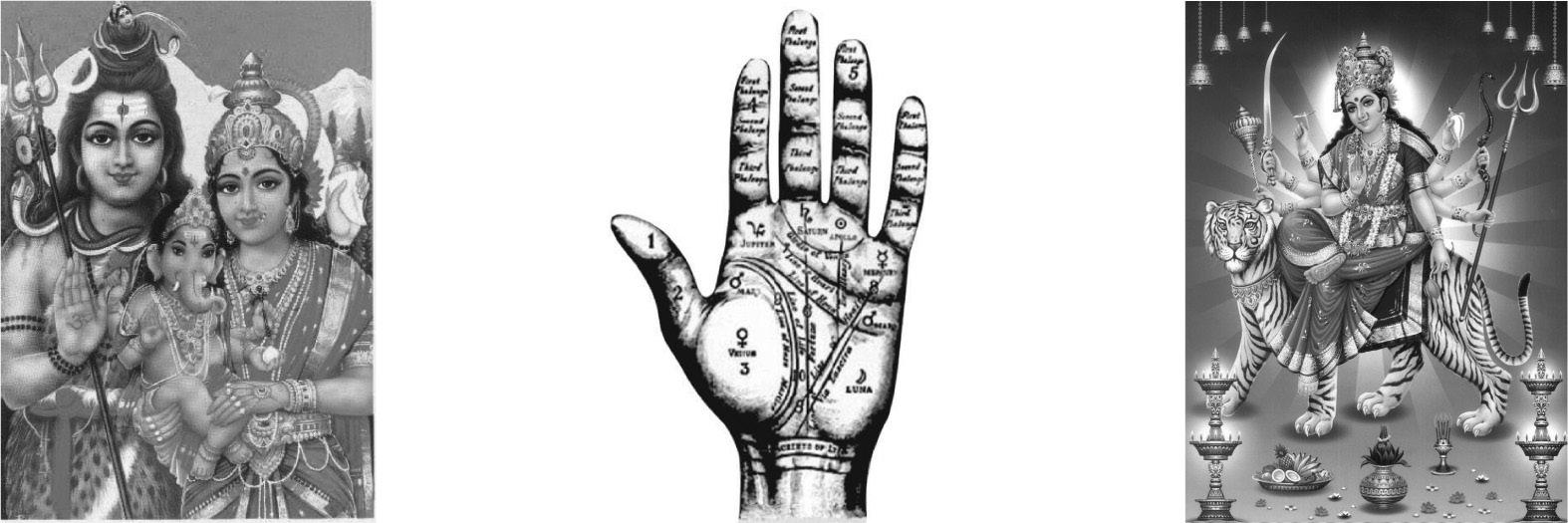


Famous Indian Pandit: Venkatesh Swamyji
From India to solve all your problems

Believing is first Step of life
SwamiJi is Expert in Readings of Palm, Face, Horoscope and Thumb Impression (specialist) and know your Past, Present & Future. Are you suffering from any kind of Problems like Love, Marriage, Relationship, Health, Business, Job, Career, Divorce, Education and any other problem?
SPECIALIST IN REMOVING MAGIC AND GIVING PROTECTIONS
Swamiji will perform Poojas for many Problems Privacy & Confidentiality Povided CALL FOR AN APPOINTMENT
M: 0435 930 985
46 <> MAY (1) 2010 INDIAN LINK
INSIDE THE SHOP -WINMANI CONVENIENCE STORE, 136 MERRYLANDS ROAD, MERRYLANDS NSW 2160
Drinks anyone?
GEETA KHURANA on healthy beverage options
Beverages are an important part of our daily diet. The increased intake of high calorie drinks and beverages is one of the main culprits of obesity amongst our younger generation today. An average can of soft drinks or fruit punch provides about 150 calories. So even if you have one can everyday and not cut calories anywhere else, you end up adding weight at the end of the year.
Here are some healthy beverages to quench your thirst. Water This unique free gift of God is the best drink that we can consume. The daily cleansing of waste from our body, the flushing out of bowels, purifying of blood, are all dependent on the amount of water we drink. Furthermore, water has the ability to pick up mineral deposits accumulated in cells, joints, artery walls or anywhere else such deposits occur and carry these out. Thus, a chance of gall stones and kidney stones decreases. The best cure for urinary tract infection is also to drink lots of water. The body has no provision to store water, therefore, the amount of water lost or consumed by the body in various body functions must be replaced to maintain health and body efficiency.
To avoid dehydration and reap the benefits of water, it is recommended that a minimum of eight glasses should be consumed every day. In summer, we might need even more. Water helps the body flush out even through the skin. Dehydrated skin hangs out as dead flaky skin. Drinking more water not only hydrates the skin, but aids in shedding dead cells, making the skin look clearer, glowing, healthy and radiant.

If you do not drink enough water, then your body is forced to take it from other organs like the colon, which then leads to constipation. Therefore, drink enough water to maintain your normal bowel function.
Tea and Coffee After water, tea and coffee are the most popular beverages. Tea is a low-calorie beverage full of flavonoids and antioxidants that are good for our health. Tea also provides some amino acids, primarily theanine which has been shown to enhance the body’s ability to resist infections. Up to 2-3 cups of tea or coffee a day is fine. But the addition of cream, full cream milk and lots of sugar can turn a health drink into a not-so-healthy beverage. Add low fat milk and just 1 tsp of sugar or have plain black tea to have the best advantage.

Green Tea There are 3 main varieties of tea - green, black and oolong. The difference between the teas is in their processing. Green tea is made from unfermented leaves whereas the leaves of oolong tea are partially fermented, and black tea is fully fermented. The more the leaves are fermented, the lower the polyphenol content and higher the caffeine content. The secret of green tea lies in the fact that it is rich in catechin polyphenols, particularly epigallocatechin gallate (EGCG). Polyphenols are chemicals with antioxidant properties and EGCG is a very powerful antioxidant. Besides inhibiting the growth of cancer cells, it kills cancer cells without harming healthy tissues. Therefore, green tea has the highest polyphenol content while black tea has roughly two to three times the caffeine content of green tea. EGCG is considered to be at least 100 times more effective than Vitamin C and at least 25 times more effective than Vitamin E.
Milk Next to water, tea and coffee, low fat or skimmed milk is also an excellent beverage especially for children, and older people. Milk is one of the best sources of calcium and protein. Soy milk is also a good option especially if you are lactose intolerant. Cocoa powder added to milk also adds to the health benefits as cocoa also has flavonoids and anti oxidants. These are good for the heart and also anti cancerous.
Lassi Plain lassi is also a very refreshing drink in summer. Made from yoghurt, it has all the goodness of yoghurt but fewer calories. If you want to cut down the calories then go in for ‘namkeen lassi’ flavoured with roasted cumin seeds and coriander. Mango lassi is also very popular but go slow on adding extra sugar if you want to have a health drink.
Fruit Juice Whole fruits are really the better option as compared to juice but if you have to have juice, go in for 100% fruit juice since most juice is a concentrated source of sugar and also devoid of any fibre. You can also make your drink at home with water and just 2 ounces of juice added to it. Add some lemon juice or herbs to make it taste better. Cranberry juice in particular has been known to fight urinary tract infections and is a good source of anti oxidants. But try to have pure cranberry juice instead of having a cranberry fruit drink as the drink has more sugars in it. If you find pure cranberry juice to be too sour, add in some water.
Soft Drinks Diet soft drinks are a better choice than sugar sweetened soft drinks, as sugar sweetened soft drinks just provide empty calories and no nutrition whatsoever. Soft drinks, fruit punches, cordials are also linked to dental decay, and type 2 diabetes. But any soft drinks, whether diet or otherwise, are high in caffeine and therefore should be avoided as much as possible. Nimbu pani (home-made lemon juice) is a much better alternative than carbonated beverages. Full of vitamin C, it is a very refreshing low calorie drink.
Sports Drinks These are mainly used by endurance athletes who need to replace electrolytes such as sodium, potassium, and chloride and thus should be used sparingly by others as these
are very high in calories, sodium and sugars. Thus these may also contribute to obesity and tooth decay. These also contain caffeine, taurine and glucuronolactone which occur naturally in the body, but the fact that they are present in much higher doses in energy drinks may be cause for concern. Research shows that children and young people who consume a large number of energy drinks may suffer sleep problems, bedwetting, and anxiety.
Coconut Water Coconut water is another nourishing drink low in calories and sugar. It is full of electrolytes and potassium and is more nutritious than orange juice, as it contains less calories. It is a very refreshing isotonic drink.
MAY (1) 2010 <> 47 NATIONAL EDITION
WELLNESS www.indianlink.com.au

48 <> MAY (1) 2010 INDIAN LINK




MAY (1) 2010 <> 49 NATIONAL EDITION BUSINESSES FOR SALE THINKING OF BUYING OR SELLING BUSINESS CALL SUNNY SINGH ON 0433 239 589 sunny.singh@sbx.com.au www.sbx.com.au We speak your language NO CHARGE TO BUYERS SBX Sydney Business Exchange Thinking of buying or selling any kind of business with any price range? Businesses like Service Stations, Cafes restaurants, Take Away, Supermarkets, Newsagency, Auto repair and many more available. SOUTH INDIAN FAMOUS ASTROLOGER DURGAMBA ASTROLOGER & PALMIST:
Hanuman Expert in Palm Reading & Face Reading
can predict your past, present and future. Everyone in this world have problems, if you want to find solutions for your problems, or clear any doubts, this is the right opportunity to Contact HANUMAN *Health *Wealth *Business *Marriage *Love *Education *Husband & Wife relationship *Job and *Children problems 100% Removal of Spirits and Magic FOR APPOINTMENT PLEASE CONTACT: HANUMAN Shop 103-105 Rawson Street, Auburn, N.S.W. 2144 (Inside Indian Supermarket) Mob. 0435 880 647
Pandith :
We

50 <> MAY (1) 2010 INDIAN LINK

MAY (1) 2010 <> 51 NATIONAL EDITION


52 <> MAY (1) 2010 INDIAN LINK
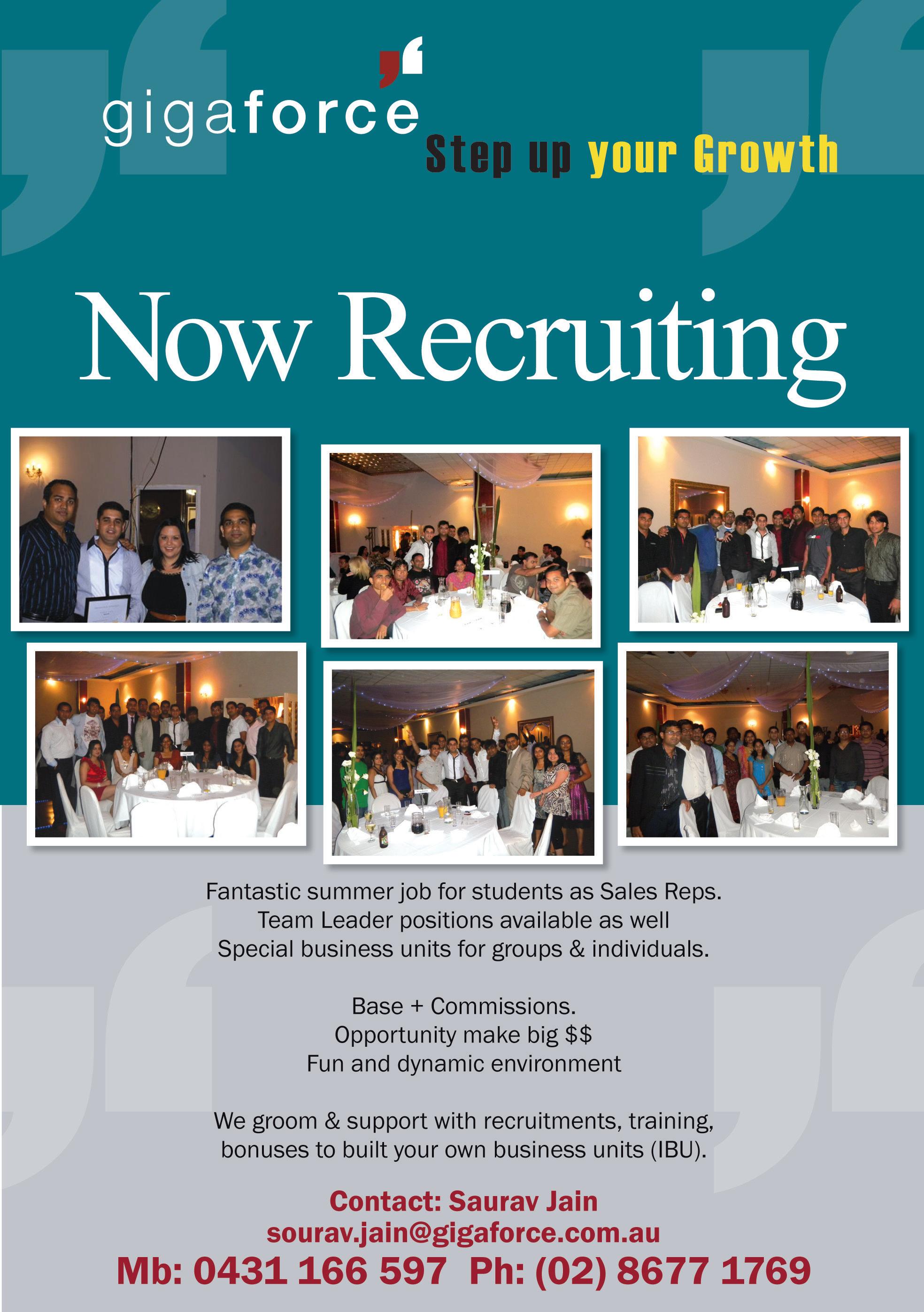
MAY (1) 2010 <> 53 NATIONAL EDITION
“But mum, why can’t I?”
Meet the
What do teens and their parents argue about? KANISHKO DAS takes an introspective look into parent-child relationships and their ambiguous, but sound logic
This question rings a bell somewhere in your head, doesn’t it? This is one of the many questions all children eventually and unfailingly asks their doting mothers, potentially making it the most asked question in a household.
It is painfully frustrating to hear a “NO!” when you know all your friends are going to the club to attend a birthday party or are getting the new iPhone. Sometimes it’s a “NO!” even before the complete request is made; as if mum doesn’t even care what it’s about. How could she possibly know what I’m asking for? And her judgement has to be upheld as if it is the ultimate decree. It feels so unfair to have all your desires and needs squashed in seconds. It’s like the inability to have a rational say in your own life! It’s like being in military school! On what does she base her judgements? Is it from her extensive real-time experience? Yeah right! “All she cares about is me being a stuffed-up geek, praised by teachers and neighbours!”, you might think. So you ask dad, who, as the “cool parent”, ends up protecting his holy image. And that brings me to the second most commonly asked question in the household, dad’s reply, “Why don’t you ask

your mum? What does she have to say? I am totally with her on whatever she decides.”
Throughout childhood, due to some strange inexplicable phenomenon, mummy always tends to know that her kiddo is still hungry, while her kiddo’s stomach strongly revolts at any more food, as it is full to the brim. Historically it has never lead to an upset stomach, but has often left behind an upset kid. Some mums retain this habit even when their child becomes a young adult.
Jyotishko Das, a Uni-goer, reminisces about his experiences with his mum, interspersed with fits of laughter. The 21-year-old IBMer says, “From time immemorial, my mother has maintained that I don’t eat enough. Believe it or not, like even last night she called to check up on me and scolded me for not eating enough! I was left speechless.”

Exams are when a student runs through close to a thousand pages worth of information; they work hard for seemingly countless hours and run against time, their brain literally going into
overdrive and stress levels breaching the tipping point. Deepra Sen, accountant and uni-student recounts how his mother visited him and still treated him like a child. He says, “Mum would wake me up early in the morning, reminding me of my coursework! Even as I brushed my teeth, she would say that I was taking up too much valuable time which could be otherwise wisely spent. Here I was thinking the prep leave was a time to catch up on some lost sleep - time to hit the hay! She treats me like a kid! It’s as if she can’t do without saying all this.”
Sometimes daddy dearest can entirely spoil the plot for his little girl much to her discontent. From making sure she doesn’t blend with the “wrong” crowd which happen to be the circle of her closest friends, to sometimes refusing to sit in the navigator’s seat as the instructor of his little L-plater. Surprisingly dad seems to know more about her friends that she does! Rupali Saxena*, a Uni student, explains, “My father never agrees to be my instructor for even a single driving lesson. He feels it would be safer if I learn to drive from professionals. Really, there is really no logic behind that; as FYI, he has been driving for the last 30 years! I wonder what the concern is all about!”
Then there’s that little issue of privacy, the one
54 <> MAY (1) 2010 INDIAN LINK YOUTH
If we think that our mother blindly passes judgements to thwart our wishes, in reality she wholly empathises, as she posed the same question to her own devoted mother
parents!
thing that teens are most sensitive about and the one thing most violated by their parents. Overtly curious parents come straight into their rooms without knocking, yet the teens cannot get into the parents’ room without five raps on the door and a resounding “Come in!” The rules mostly seem to

“Who is this girl you keep talking to?” and inquisitively protective parents. Proximity alarms go off and tempers skyrocket in such scenarios. Words volleyed between the two parties are then repented for weeks together by both. But the point of contention remains the same consistently, over the arguments which follow. The fuming teenager’s mind keeps muttering to itself and at the tipping point, all thoughts spill out. The teen unwittingly bursts out, “Why can’t you leave me alone? Why do you have to know everything? Why can’t you let me live my life? None of my friends’ mums are so poky all the time, so just chill, alright!” And then that a deafening silence envelopes the atmosphere of the household. It is during this time that extremes of emotions are felt. From dress sense to hairstyles, everything can come under scrutiny and eventually come under fire. “Where do you think you are off to in that dress, young lady?” or “Young man, those long locks need to be trimmed before you take off!” are standard expressions every teen gets to hear when things look a little out of shape. It is even more irksome when you are a semi–independent young adult. Almost every guy wants to keep the DiCaprio look, while every girl wants to make heads turn each time she steps out of the house. After all, everyone wants to look their best; if not, why do mums take so much time to get dressed before going to a party?
It is almost as if there is no parity in the application of rules. As if the parents never
The children of today are born diplomats. They know how to negotiate a deal, especially in the currency of grades. Divesh Singh, IT manager, light-heartedly recounts the details of his deal. He says, “I was tired of waking up early in the morning, being pulled out from under my blanket, and I absolutely hated it! Waking up early was so not cool. So I made a deal with my parents. I told them that I would get them the grades they wanted, and in return I would study and play according to my schedule. It worked perfectly!”
It is when the tempers cool down that the real picture takes shape. There are always two sides to a coin, and consequently two sides to a story. If we think that our mother blindly
reality she wholly empathises as she posed the same question to her own devoted mother. She always knows better because she can distinguish between good and bad due to her own “extensive real-time experience”.
If a concerned mother scolds you over the phone from 10,000 km away, it only reflects the fact that one is never a grown-up in the eyes of a mother. Issues like meals and dirty clothes fuel the fears of every worried mother. Would one ever get serious about exams, if mum didn’t put the seriousness of the situation into perspective?
The questions and worries posed by mothers are simply a product of their altruistic love and their desire to see their young ones excel in all spheres of life. They are trying to save their children from making the same mistakes they made.


under control soon enough! It is important to note that whatever is said between the parent and child can only be exchanged between very close individuals. Whatever the parents do is only because they want to avoid any episode which will put their children in peril. “We just want the best for you”, is a statement made so often, but each time, every word is truly heart-felt.
One must note that parents, being members of the ‘Been There Done That’ club, truly know what makes their child look good. Be it the smart army cut or the graceful ‘Sushmita Sen’ look, they want to see their children stand out from the crowd as civilised individuals. They already know that at this age, grooming oneself to look the best is more important than scrutinizing others.
Overtly curious parents come straight into their rooms without knocking, yet the teens cannot get into the parents’ room without five raps on the door and a resounding “Come in!”
Each time daddy dearest sounds illogical, it’s only because he is overtly protective and wants to keep his angel away from harm’s way. “My baby can’t go there. There was a big brawl in the vicinity!”, dad reflects, reading about a fight which happened about a hundred kilometres away from where his daughter intends to go. At that point of time daddy dearest’s logic may not make sense, but right from her diaper days, all the logical or illogical things he did are expressions of his selfless love.
During these tussles, it seems that nothing will ever turn out right, but even despite such hostility each party knows the significance of the other in their daily routine. But anger clouds over the
Undeniably, we all attribute our existence and identity to our parents. From waking up early each morning to preparing lunch for school, to working late into the night to see their child through college, parents do all in their capacity to give their child the best shot at life. Some young adults live with their folks, while others live thousands of kilometres away. But no matter how far the parents are, they feel for their precious baby, every day, every hour, every minute and every second. No matter how little sense it makes to the average kid, all that parents say and everything they do is indicative of their simple, selfless love. So the next time, before you cross-question your parent, be mindful of the fact you are dearer to them than anything else in the universe!
MAY (1) 2010 <> 55 NATIONAL EDITION www.indianlink.com.au
<> 55 INDIAN LINK
Sabah Sensations


Experiencing a majestic mountain, the wonders of flora and fauna and a taste of the tribal make an exhilarating experience
By THOMAS E KING
A stark mountain top thrust above the lush tropical greenery of Sabah is the sole destination for many tourists who visit this activity-packed state of East Malaysia. Kota Kinabalu, the state capital, is the entry point for Malaysia’s most far flung realm and as I discovered a few months ago, the best starting point for a thrilling journey to a mountain called Kinabalu
The park headquarters for the sanctuary that encircles this fabled mountain is 88 km from the city. A wide highway puts the abundant flora and less visible fauna of the 754 sq km Kinabalu National Park within an hour’s drive. Many day trippers from ‘KK’, as it’s commonly called, come for these attractions with the added inducement of being able to spend a few calm hours strolling in cool mountain air.
Wild orchids, lovely bluebells, daffodils, rhododendron and the giant Rafflesia flower measuring up to a metre across are found along walking tracks. It’s not very likely you’ll spot wildlife, though sightings of flying squirrel, barking deer, bearded pig and even orang-utan have been recorded.
A few hours of relaxation among 1200 odd varieties of orchids and 325 varieties of birds may be enough for some, but others won’t settle for anything less than the buzz of scaling the usually cloud-obscured mount.
The first recorded ascent of the highest peak between the Himalayas and New Guinea was made in 1851 by Sir Hugh Low, a British government officer. Assaults on the 10 million year old, 4095 metre high granite massif don’t make headlines these days because thousands of visitors annually make the climb.
A few hours of relaxation among 1200 odd varieties of orchids and 325 varieties of birds may be enough for some, but others won’t settle for anything less than the buzz of scaling the usually cloud-obscured mount
No special mountaineering experience is required if the main route to the glacier scarred summit is followed, but the climb is very tiring and tourists must be in good shape to complete the two to three day trip. Several huts with basic cooking and accommodation facilities strategically located along the way have been established to make the journey more comfortable.
The driest and sunniest part of the year is from February to May but even then stout shoes, a warm hat, gloves and warm clothes are needed, plus food for the entire journey. A sleeping bag can be rented at the huts. Climbers must utilise the services of an authorised guide and porters can be hired.
56 <> MAY (1) 2010
TRAVEL
Visitors who simply want to slow down for a few days and not test their endurance will enjoy the serenity of the area and the variety of pleasant options available. My wife and I, for instance, traipsed along the path winding through the park’s extensive botanical garden, went golfing at a picturesque course located on the mountain slope and spent hours at our heritage resort, sitting opposite an amazingly cloudless peak and watching the last rays of the day cast a pink hue over this geologic wonder.
Exhilarating experiences don’t end there. The next day, after a sunrise spectacle and a hearty breakfast we drove into nearby Kundasang to pay our respects at the War Memorial. This retreat honours the memory of all war casualties, but especially Australian and British service personnel who perished in the infamous Death March in 1944.
Meticulously cared for by a Thai man who neither served in the conflict nor knew any of those who died, the War Memorial has received glowing tributes from around the world including one from Queen Elizabeth.
Following this sombre stop we proceeded to the sloping hills, dipping valleys and sea of green enveloping the Sabah Tea Garden. Established in 1978, the biggest tea plantation on Borneo Island, has thousands of hectares covered with tea bushes. As we drove up the hill to the Tea House, I could see women with baskets carefully plucking green leaves which would later become Sabah Tea. (Some 5 tonnes of leaf are picked every day but just 15 per cent of Sabah Tea is exported.) It was a scene much like ones I have seen in Darjeeling in the north of India and Wellington in the south, though neither has tea plantations with the backdrop of a peak that’s encircled with timeless legends and secluded by mist most afternoons.
Having completed a round through the area’s top attractions, we headed back to KK. The state capital of Sabah lazes on the edge of the South China Sea overlooking a cluster of coral-fringed islands. Formerly known as Jesselton, the city had 30,000 inhabitants by 1881. Sixty years later at the start of WW II, the number had risen to 80,000. The city took a beating during the war, so much so that only three structures remained: a clock tower, the old post office and an administrative building. Everything else is new and there are a few architectural standouts.
The Sabah Museum & Science Centre is definitely a modern structure. Inside this
stylish building inspired by the longhouses of tribal people, I discovered a treasure trove of cultural artefacts and natural history exhibits. A display of relics from the Song Dynasty revealed that Sabah’s merchants were trading with the Chinese as early as 960 AD.
Because of Sabah’s location on the northeast coast of Borneo, trade links have also been long established with the Philippines. Every evening the city’s largest bazaar comes to life on a little strip of land along the waterfront. The colourful Filipino Market which has an open air section for fruit and vegetables and a large covered stall for souvenirs is also a great place for fishjust-out-of-the-sea dinners at pocket pleasing prices.

While KK isn’t awash with attractions, there are numerous exceptional lures within a few hours of the 500,000-strong capital. Having conquered the mountain – actually watched climbers do the hard yards – and leafed through a sensational tea garden it was time to monkey around … quite literally.

The Klias River is several hours from KK, yet the journey is most worthwhile because late afternoon cruises allow binocular equipped visitors to observe Proboscis monkeys feeding on rainforest trees. These rare denizens of the jungle are unlike other monkeys as the male is noted for a large protruding nose. As the harsh tropical sun dipped behind the towering trees and the jungle became cooler I saw more and more of these animal oddities dining from skyhigh ‘restaurants’ where the ‘menu’ features just one delicacy.
There’s far more on the table at the Mari Mari Cultural Village not far away. I tasted a veritable feast of tribal treats after having undergone a ‘confrontation’ with a group of ‘head hunters’ in front of their primitive homes. A 25-strong troupe of skilled performers – half a dozen acting out the role of fierce head hunters – ‘greet’ visitors before a collection of rainforest surrounded traditional homes.
During a highly informative 90 minute excursion into ancient Borneo, visitors learn about different tribes, see a blow pipe demonstration, sample rice wine, watch firestarting with bamboo sticks and participate in rousing dances along with the cast of authentically costumed performers. The performance ended, the dinner concluded and I reluctantly left this lost world setting, my mind spinning with the excitement of sensational Sabah.

Travel notebook
FLIGHTS: Singapore Airlines has nearly 100 flights a day from five ports in Australia – Sydney, Melbourne, Brisbane, Adelaide and Perth - to Singapore with convenient connections to Kota Kinabalu on six days a week using its regional airline partner, Silkair. See your travel agent or call Singapore Airlines on 13 10 11. Visit www. singaporeair.com.au.
ACCOMMODATION
With sweeping views of the South China Sea and within easy walking distance of the Filipino Market, the 451 room Promenade Hotel has a private pool and a choice of five food and beverage outlets. For more information and special internet rates see www.promenade.com.my
The Mount Kinabalu Heritage Resort & Spa faces the majestic peak. Guests can choose from newly upgraded superior rooms or cosy chalets. Set the alarm so you can see the light from a new day sweep across the mountain face from your room! See www.perkasahotel.com.my


INFORMATION
Tourism Malaysia, tel (02) 9299 4441, e-mail: malaysia@malaysiatourism.com.au will send out maps and guides on the state. See www. tourismmalaysia.gov.my. Assistance in planning your Sabah adventure and more details about specific attractions and activities is available from the Queensland-based Australian representative for the Sabah Tourism Board. E-mail sabahinfo@ bigpond.com. See www.sabahtourism.com
MAY (1) 2010 <> 57
1. This Iban ‘warrior’ is a talented artisan performing during a nightly feast of food and heritage at the Mari Mari Cultural Village.
2. Visitors pause during their cruise on the Klias River to photograph Proboscis monkeys.
3. The Sabah Tea Garden is located in the highlands where fertile soil and equitable climate yield award winning produce.
4. Mt Kinabalu, the tallest peak in Southeast Asia, is also the biggest visitor attraction in Sabah.
5. Extending along the harbour, the Filipino Market has sections for food, produce and souvenirs.
www.indianlink.com.au 1 2 3 4 5
Sabah
Photo: Thomas E. King
Need Tutoring? Want to improve your Grades? Then Call
In Collaboration with Master Coaching Primary Maths, English O C trial tests , Selective trial tests School Certificate
HSC Course
English: Std Adv, Ext Maths: Std, Adv(2U), Ext 1, Ext 2 Chemistry, Physics and Biology Call: 02 8677 4285

Or visit 131 Hawkesbury Rd Westmead

Network Marketers required

Experienced, Successful Network Marketers who are looking for a Ground Floor Oppertunity with a huge, debt free, International Company soon to launch into the Sub Continent. This Company has just opened in Malaysia and Korea. Only one product, no warehousing, health beverage. We are looking for 3 People. Must be Ambitious, Hard working and Teachable.
Give me a call. I am 78 yrs old and have just returned from Malaysia. I am only looking for people who are genuinly seeking 'their Big Chance' in life and are prepared to work hard to get it. Call
58 <> MAY (1) 2010 INDIAN LINK
Vignan Educational Services
Helen on 0414461673
The challenges of motherhood
Courage, compassion and the ability to truly nurture, make some women extra special as mothers
 BY SHERYL DIXIT
BY SHERYL DIXIT
Another Mother’s Day is here and once again, I will enjoy the adulation and excitement from my two boys as they shower me with cards, gifts and lots of hugs and kisses. It’s standard operating procedure for Mother’s Day, and I am unlikely to ever tire of the routine, specially the hugs and kisses. But this year, I’m thinking about all those special women whose role as a mother is more challenging than mine, in different ways. Like the mums who have a child with a mental disability, whose only wish on their special day would be that their child could communicate with them. Or the mums who tend to their physically handicapped children, and wish that they could be healthy again. Or the mums who have tragically lost their children and who wish they could hug their child again. Or the women who have the ability to be wonderful mums, but cannot, for a plethora of reasons, have children. Or grandmothers, who take on the sole responsibility of bringing up their grandchildren, to give them a better life, as for whatever reason, their own children can’t cope with parenthood. Or for the women who bear the responsibility of bringing up their children as a single parent.
…what I found astounding in all these women, is their amazing courage and their even more discerning compassion.
I have been fortunate because, since becoming a mother, I have met some of these women. I have talked to a mum who struggles with her autistic son, fitting his sessions of various kinds of therapy into her busy schedule, as she juggles tending to the home, her other two school-going children and a frequently–travelling husband. I have seen a mother coo and cuddle her severely afflicted child suffering from cerebral palsy, delighting in every sound she makes. I once met a pregnant lady who had lost her eldest daughter to a particularly virulent form of cancer; she passed away within a year of being diagnosed, before her sixth birthday. Another mum told me the heart-breaking story of her son in his early 20s awaiting trial for manslaughter, as he ran over a man when driving drunk. Yet another mother could barely conceal her anxiety for her fourteen-year-old daughter who indulged in drugs and alcohol fuelled sex orgies, and still refuses to change her ways.

These are just a few of the situations that challenge mothers, but what I found astounding in all these women, is their amazing courage and their even more discerning compassion. It almost feels as if being in their situation has given them a deeper insight into life and its ultimate meaning. All of them without exception have a single philosophy: they ‘get on with it’. They ask for no pity or sympathy, and are all matter of fact about their situations. They have accepted the inevitable and take each day as it comes, good, bad or average. They make no attempt at deception – either for themselves or their family and friends. They take everything in their stride, from sleepless nights to shrugging off insensitive comments people make…. they are very special, and I admire all of them tremendously.
Without exception, these women are amazingly nice, cheery and very, very strong. I look at my life with its hassles which are no more earth-shattering than children who don’t have an appetite or are overactive, and I realise that I have a lot to learn from them. Regardless of how they feel each day, they are
she simply switched off each time her parents and in-laws insisted that her son be taken to a religious institution to get prayed over to cure him of the malady. “Six sessions and they did nothing more than make him more hyper,” she said with a laugh. “Another session and they’d have to start praying for me too!”
to shrugging off insensitive comments people make…
I guess I’m impressed because all through my childhood and youth, disability in any form was considered a social taboo. Children and even adult sufferers were ostracised and strange beliefs emanated around them. I have heard stories that their condition was because of the ‘evil eye’, a result of their parents’ or grandparents’ sins, because their mother didn’t breastfeed them, because they were born during a lunar/solar eclipse... Sometimes even the most minor of disabilities became a big deal, like the time a child was born with six fingers on each hand and an obviously jealous neighbour insisted that he would grow
considering these children as freaks of nature.
Now that I’m a mum, I think I can appreciate the effort it takes in fulfilling one’s role towards one’s children. You love them, no matter what, that’s what a mother does. But how hard must it be to not receive a reciprocal hug? Or to live each day fearing for them, for their lives and the circumstances that surround them, knowing that there’s nothing you can do to change things. Which is why I admire their sense of compassion so much. They seem to comprehend better, to be more forgiving of petty human follies, perhaps because their own experiences have been so intense and heart-rending.
I dedicate this Mother’s Day to those mums whose strength of spirit, compassion, generosity and courage have been an inspiration to me. With the fervent wish that their children, regardless of their condition, are able to, in some way, acknowledge and appreciate them on this special day.
MAY (1) 2010 <> 59 NATIONAL EDITION
MOTHER’SDAY www.indianlink.com.au
Pumpkins aplenty

1 medium onion, roughly chopped
BY RAJNI ANAND LUTHRA

You either love pumpkins, or hate them. I myself was not a great pumpkin lover, until I moved to Australia. The wonderful varieties so abundantly available here (the world-famous Queensland Blue, the lighter Butternut, the sweeter Japanese, and the cute Golden Nugget) beckoned from the grocer’s shelves; I simply had to try them out.
Of course the variety of ways in which you can cook the pumpkin added to its attractiveness, for me. You can make a subzi, make a soup, bake it, stuff it, make muffins, put it in a raita, stuff it in a paratha, or even convert it into an Indian dessert.
Here’s a collection of my favourite pumpkin recipes that I’ve gathered over the years. First, the recipe that started off my love affair with the pumpkin - I learnt it from my mother-in-law, a fantastic cook (apparently she learnt it from law, so I can safely stamp the Luthra name on this one!)
Pumpkin Subzi
400 gms pumpkin (preferably Jap), cut into

medium-sized cubes
1 large or 2 medium onions, sliced
2 tbsp vegetable oil
2 tsp fennel (saunf) seeds
4-5 numbers large black cardamom
1-inch piece cinnamon
Salt to taste
½ tsp turmeric powder
1 tsp coriander powder
1-2 tsp garam masala
½ tsp sugar
Red chilli powder to taste
Fresh green chillies to taste
Fresh coriander leaves for garnish.
Heat oil in a kadhai and add fennel seeds, cardamom, cinnamon and green chilli.
When seeds splutter, put in the onion and pumpkin and sauté. When pumpkin pieces are well-coated with oil, add salt, turmeric, red chilli powder and coriander powder. Stir to combine, reduce heat and cover. Keep stirring at regular intervals to ensure the vegetable doesn’t stick to the bottom. Mash gently as the pumpkin gets cooked, but allow some pieces to remain lumpy. Add in sugar and cook till pumpkin is well done. At the very end, introduce the garam masala and mix well. Garnish with fresh coriander leaves before serving.
Pumpkin Paratha
1 ½ cups grated pumpkin (preferably Jap)
1 small onion, very finely chopped
2 cloves garlic, crushed
1 tsp cumin powder
1 tsp coriander powder
1 tsp garam masala
Red chilli powder to taste
Salt to taste
1 tsp sugar
1 tbsp vegetable oil
Prepared roti dough
Ghee or oil for making parathas.
To make pumpkin stuffing, heat oil in a heavy-bottomed pan, add onion and garlic and sauté briefly. Introduce pumpkin and stir; add cumin, coriander and red chilli powders, salt and sugar. Cook till pumpkin is done. Break off a lemon sized portion of the dough, fill with stuffing, seal the edges and carefully roll into a 5-inch diametre paratha. Grease a non-stick tawa with oil and cook the paratha on both sides till golden brown in colour. Serve with chilled curds and pickles.
Pumpkin Raita (southern style)
(While this is really a raita to be eaten as an accompaniment in a main meal, it goes wonderfully well also as a dip with corn chips).
1 cup Japanese pumpkin chunks
2 cups thick yoghurt, whisked
1 onion finely chopped
Red chilli powder to taste
Fresh coriander for garnishing
1 tbsp oil
½ tsp mustard seeds
½ tsp urad dal
2-3 dry red chillies
1 sprig curry leaves
Pinch asafoetida
Salt to taste.
Cook pumpkin in the microwave for 3-4 minutes covered. Mash and let cool. Add yoghurt, salt, chilli powder, cut onions and mix well.
Heat oil in a pan, add asafoetida, mustard seeds, curry leaves and urad
dal. When seeds splutter, add to the yoghurtpumpkin mixture. Garnish with coriander to serve.
Pumpkin Scones
2 tbsp butter
2 tbsp sugar
½ cup mashed pumpkin
1 egg
½ cup milk
2 ½ cups self-raising flour.
Cream butter and sugar. Add pumpkin. Add well-beaten egg. Add milk slowly. Add sifted flour. Knead lightly on floured board. Roll out 2-3 cms thick. Cut into rounds. Place on greased oven tray. Bake in a hot oven (230260 degrees C) for 20 minutes. Place on rack to cool.
Pumpkin Soup
(There are many recipes for pumpkin soup: this is my healthy version).
2 chicken stock cubes, crumbled (or vegetable
Pressure-cook all ingredients (except dill) together. Cool and process in the food processor till smooth. Return to cooker and heat through. Garnish with dill before
To make the soup more fanciful, you could add a granny smith apple. Also, you could reduce the amount of water while cooking and add milk, or coconut milk, after processing. To serve, you could add a dollop of sour cream, and sprinkle ground nutmeg
½ butternut pumpkin, peeled and thinly 3 large potatoes, peeled and thinly sliced
Cook pumpkin partially by adding to boiling water. When slightly tender, drain. Cook
Butter or grease a baking dish and put in one layer of pumpkin slices. Lay out a second layer of potatoes. Top off with a third layer of pumpkin slices.
Whisk together eggs, sugar, cream and nutmeg. Pour over layered vegetables, allowing to trickle down through the layers. Bake in moderate (180 degrees C) oven for 35-40 minutes.
This is a wonderful preparation especially for cold winter nights, to accompany a meat dish. For a slightly less rich version, layer par-boiled pumpkin slices in a lightly greased baking dish. Drizzle honey over, and sprinkle with brown sugar. Bake until pumpkin is cooked.
For a diet-version which is a favourite in my family, layer pumpkin slices in a lightly greased baking dish, sprinkle your favourite dried herbs over, cover with foil and cook in a moderate oven.
Pumpkin Halwa
2 ½ cups grated pumpkin (preferably Jap)
½ litre milk
1 tsp cardamom powder
1 tsp poppy seeds
Few numbers fried cashewnuts and raisins
¾ cup ghee
1 cup sugar.
Put pumpkin and milk together in a heavybottomed pan and cook over low heat till pumpkin turns tender and the mixture thickens. Add ghee and mix well. Then introduce sugar, cardamom powder and poppy seeds. Keep stirring till mixture becomes thick and dry. Take off heat and mash to a paste. Serve garnished with cashewnuts and raisins.
60 <> MAY (1) 2010 INDIAN LINK
FOOD www.indianlink.com.au


MAY (1) 2010 <> 61 NATIONAL EDITION
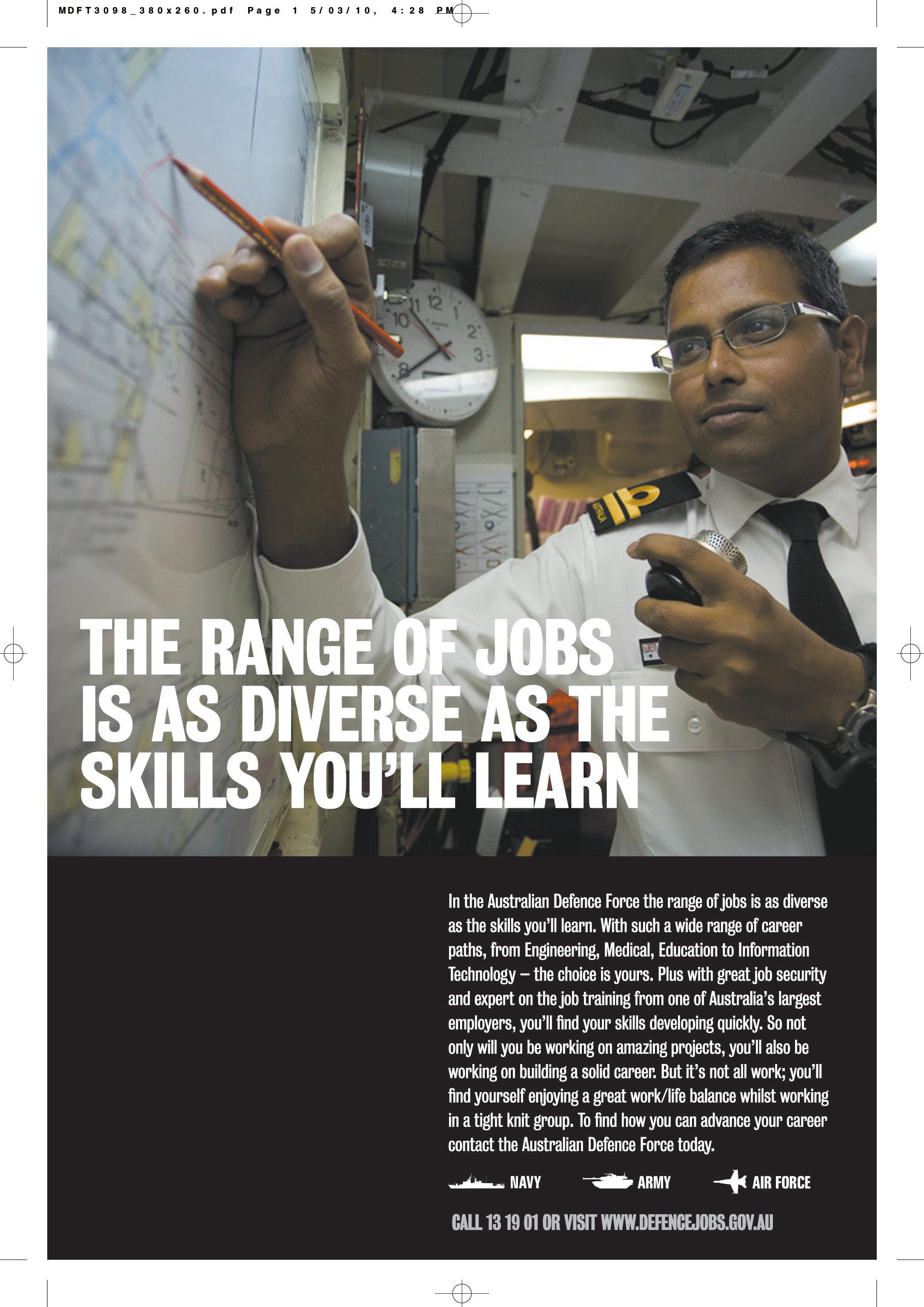

MAY (1) 2010 <> 63 NATIONAL EDITION
RESORT STYLE LIVING - BLOCK C
Enjoy the life style features of this sought after complex including swimming pool, tennis courts, gymnasium, community room, café and BBQ facilities. Unit overlooks amenities and is on 5th floor, with 2 bedrooms, 2 bathrooms, latest kitchen with dishwasher & gas cooking, spacious living areas, air conditioning, vouge
station and transport. Includes 2 spacious bedrooms, air conditioned lounge & dining, modern kitchen with gas cooking, lock up garage and set in a small complex of 8. Wont
Last!
Laing & Simmons Wentworthville 9688 4000 Contact Alan Fowler
















64 <> MAY (1) 2010 INDIAN LINK SOUTH WENTWORTHVILLE AUCTION MOVE STRAIGHT IN! 43 Brewer Crescent This beautifully presented 3 bedroom rendered home features renovated kitchen & bathroom, floor boards throughout, built ins, ceiling fans, internal laundry, lock up garage, outdoor entertaining timber floor decking area and a 632sqm block. Be the First to inspect! Open For Inspection: Saturday 12-12:30pm Auction: Saturday 15 May 2010 on site at 12:30pm Laing & Simmons Wentworthville 9688 4000 Contact Jim Malamas 0433 622 145 or Alycia Haddad 0433 882 145 MERRYLANDS AUCTION ULTRA MODERN CONTEMPARY STYLE LIVING 40 Hilltop Road This Property has a real WOW factor! Set in popular Hilltop Location this home features large open plan living, 3 spacious bedrooms with built ins, main with ensuite, separate study or 4th bedroom, ultra modern main bathroom, huge living and dining area, enormous ultra modern kitchen with gas cook top and dishwasher, double remote lock up garage with internal access, covered pergola area, large salt water in ground pool with water feature and still more room for kids to play all set on a large block, set close to local shops, schools and bus at door. ** AGENTS INTEREST** Open For Inspection: Saturday 12:30-1:00pm Auction: Saturday 29 May 2010 on site at 1:00pm Laing & Simmons Wentworthville 9688 4000 Contact Alan Fowler 0413 057 699 WENTWORTHVILLE AUCTION WIDE FRONTAGE 117 Wentworth Avenue This freshly painted double brick home is set on a large block of 626sqm approx and has a wide frontage of 19.5m, features include 2 good size bedrooms, large lounge, dining area, neat kitchen and bathroom, 2nd toilet in laundry and lock up garage all set within a short walk to trains, shops and schools. Open For Inspection: Saturday 3:30-4:00pm Auction: Saturday 8 May 2010 on site at 4:00pm Laing & Simmons Wentworthville 9688 4000 Contact Leanne Ollerenshaw 0414 790 887 or Alan Fowler 0413 057 699 WENTWORTHVILLE AUCTION GREAT LOCATION 69 Essington Street This property has everything you need! Only a short walk to trains, schools and shops the property features 4 large bedrooms all with built ins, separate study, 2 modern bathrooms, large lounge and dining area with air conditioning, polished floor boards throughout, gas connections, modern kitchen, inground solar heated saltwater pool, lock up garage and great size yard for the kids. Open For Inspection: Saturday 11:00-11:30am Auction: Saturday 29 May 2010 on site at 11:30am Laing & Simmons Wentworthville 9688 4000 Contact Leanne Ollerenshaw 0414 790 887 or Alan Fowler 0414 790 887 SOUTH WENTWORTHVILLE AUCTION 695SQM BLOCK 64 Frances Street Extra large family home in need of a little TLC situated within a popular street close to transport. Offers 5 large bedrooms, 2 bathrooms, separate lounge, dine/family room, garage & carport. Ideal for the large family, investor or redevelopment (subject to council approval). Not to be missed. Open For Inspection: Saturday 11:30-12pm Auction: Saturday 22 May 2010 on site at 12pm Laing & Simmons Wentworthville 9688 4000 Contact Alan Fowler 0413 057 699 or Leanne Ollerenshaw 0414 790 887
OPPORTUNITY KNOCKS 3 Gozo Road This 3 bedroom home consists of 3 x built ins, original neat & tidy kitchen & bathroom, separate lounge/dining, great outdoor entertaining area, internal laundry, room for 3-4 cars in garage & located in a quiet location close to schools, shops & transport. Open For Inspection: Saturday 2-2:30pm Auction: Saturday 15 May 2010 on site at 2:30pm Laing & Simmons Wentworthville 9688 4000 Contact Jim Malamas 0433 622 145 or Alycia Haddad 0433 882 145 GREYSTANES AUCTION A RARE GEM 1/6-10 Ettalong Road This 3 bedroom villa truly must be inspected as this property will surely please all buyers. Features include great sized bedrooms, built ins, ensuite to main, huge open plan lounge/dining, modern kitchen with granite bench tops, modern bathroom, tiled throughout 2x air conditioners, internal laundry and a massive private courtyard with your own storage shed along with a double remote lock up garage. Close to all locations with minutes walk to trains schools and shops. Open For Inspection: Saturday 3:00-3:30 Auction: Saturday 15 May 2010 on site at 3:30pm Laing & Simmons Wentworthville 9688 4000 Contact Jim Malamas 0433 622 145 or Alycia Haddad 0433 882 145 3 FAMILY LIVING 11 Michelle Drive Rare opportunity to purchase this unique property with opportunity for the extended family or 3 incomes, accommodation being 3 bedroom house, 2 bedroom granny flat and a bedsitter all with modern conveniences and set in a quiet elevated residential street. Ideal for the large family or the investor. A Must To Inspect! Open For Inspection: Saturday 1:30-2:00pm Auction: Saturday 29 May 2010 on site at 2:00pm Laing & Simmons Wentworthville 9688 4000 Contact Alan Fowler 0413 057 699 or Leanne Ollerenshaw 0414 790 887 WESTMEAD $335,000 GREYSTANES $539,950 WENTWORTHVILLE $334,950 WESTMEAD $389,950 WENTWORTHVILLE $354,950 WENTWORTHVILLE $329,950 PEMULWUY $659,000 WENTWORTHVILLE $549,950 EXECUTIVE LIVING Located on the 6th floor this 1 bedroom spacious apartment has lots to offer! Features include one large bedroom with built in & air conditioning, modern bathroom, huge gourmet style kitchen with gas cook top alarm, security intercom, large balcony overlooking pool and tennis court facility and lock up garage. Laing & Simmons Wentworthville 9688 4000 Contact Leanne Ollerenshaw FANTASTIC FAMILY HOME The property is presented in excellent condition featuring 4 bedrooms all with built ins, ducted air conditioning through out, automatic shutters, modern bathroom, modern timber kitchen, large tiled dining, separate lounge room, lock up garage converted into potential granny flat, good size yard, covered area with jakoozi great for entertaining all located close to all amenities. Laing & Simmons Wentworthville 9688 4000 Contact Alan Fowler RARE FIND Currently leased until December 2010 this well maintained villa is ideally located within walking distance to shops,
GREYSTANES AUCTION
décor, video security and alarm, lock up garage and more. A MUST TO INSPECT! Laing & Simmons Wentworthville 9688 4000 Contact Alan Fowler WALK TO TRAINS This large 2 bedroom villa won’t last long! Features include large open plan lounge + dine area, large modern kitchen with gas cook top, modern bathroom, 2nd toilet, internal laundry, large wing around courtyard, lock up garage, all close walking distance to trains, shops & schools. Laing & Simmons Wentworthville 9688 4000 Contact Leanne Ollerenshaw 164 STATION STREET Immaculate ground floor unit featuring 2 large bedrooms with built ins, large lounge & dining area with floating floors, modern bathroom, internal laundry with 2nd toilet, modern kitchen with gas cook top, lock up garage and large private decked courtyard excellent for entertaining, all set close & handy to schools, shops & trains. Laing & Simmons Wentworthville 9688 4000 Contact Leanne Ollerenshaw MOVE STRAIGHT IN 4 Parish St This 4 enormous bedroom home features, walk in robe & ensuite to main, modern kitchen with stainless steel appliances, modern bathroom, combined lounge & dining, formal lounge, separate family room, study, ducted a/c, alarm, 2x LUG & close to schools, shops & transport. Open for inspection: Saturday 10:30-11:00am Laing & Simmons Wentworthville 9688 4000 Contact Jim Malamas BLINK AND YOU’LL MISS THIS ONE! 39 Craddock st This bright, airy & spacious brick veneer home featues 4 large bedrooms, large lounge, separate dining, reverse cycle air conditioning, modern kitchen and bathroom, 2nd toilet and shower, well maintained yard, entertaining area, lock up garage and carport. Open home time Saturday 1:00-1:30pm Laing & Simmons Wentworthville 9688 4000 Contact Leanne Ollerenshaw
HILL AUCTION
CONSTIUTION



MAY (1) 2010 <> 65 NATIONAL EDITION Open 7 days Singh Food and Spices Quantity Quality Service A spice shop with a difference Specials*: l Weekly draw for dinner voucher at Singh da Dhaba valued at $30 l Free DVD with all shopping over $60 l Special promotions everyday *May only 143 Stephen Street (cnr Sackville Street), Blacktown Phone 02 9676 4677 Fax: 9676 4688 enquiry@singhfoodspices.com.au : www.indianspices.com.au Blacktown
The gift
It is possible to love and accept a child who is not biologically yours, notes this enchanting short story
BY RANI JHALA
What is this obsession women have about being a mother? Why do they feel half a person without a child? Being a man, I could never understand my wife’s unexplainable desire to be a parent. We could not have a child; it was sad, but it was not a tragedy. I still found myself grateful for all the other things we had together –a great home, super jobs, loving families and a love that few could boast of. We had plenty of nephews and nieces between us too. But after ten years of marriage, suddenly they were not enough for Rita.
Two years earlier we even tried being foster-parents. But each time the children went back they seemed to take away a part of her heart. Six months into the exercise, I pulled her out of it. I could not see Rita breaking apart, time and time again.

It was then that my mother suggested adoption. The gleam in Rita’s eyes spoke of the hope that the comment had raised. I was not sure if adoption was the answer. To bring up someone else’s child as your own, to give it your name yet know you do not share the same blood. To have people say, ‘Now who does he look like?’ and know there will never be a resemblance. There were too many negatives to warrant a serious thought, but looking at the hope in Rita’s eyes, I could not deny her the effort of at least pursuing this avenue.

The next morning she had already set up the interview. A week later we sat in front of our consultant Jenny, and gave her every detail of our life. We signed authorisation forms so they could do criminal and credit checks on us. We even gave our medical records, birth certificates and financial papers. And after a long and exhausting interview, we were told that if all the checks were cleared we would be put on a waiting list, and that it could take up to a year or two at the earliest.
And so began our wait, and with it our disappointments. On paper we proved the ideal candidates, but for some reason we met delay after delay.

Finally after a year, I had had enough. I told Rita I could not cope with the wait any longer and that I never really wanted to be a father in this way. That sometimes accepting destiny did not mean accepting defeat. It was just compromising with the inevitable.
I expected a fight from Rita, but this time she calmly said, “If that is how you feel then go and let Jenny know tomorrow before we change our minds. I want this waiting to end too.” Rising, she touched my hand and left the room with the words, “I need some time alone.”
So, the next day after my morning meeting was over I drove to ‘The Perfect Match’, our adoption centre. I was asked to take a seat in the glassed-in waiting room.
And it was then that I saw the baby. With curly hair, huge baby brown eyes, chubby dimpled cheeks. It looked like a cherub! Even the mischievous grin had been packaged in. And the infant was looking at me. Just me! Of the four people seated in the lounge, it was me it smiled at. It was me it reached out for. Sitting on its carer’s hip, it was me it tried to leap towards, almost falling over in the process.
And of the four people in the waiting room, it was my arms that automatically reached out to break the fall, only to meet the glass screen. It was my heart that stopped and then raced again. And it was me who felt pain as the carer holding the baby securely again, walked away.
And I knew then, even if Rita and I had to wait a hundred years, we would wait it through, because somewhere in the future would be a child who would be ours. Only ours! A little babe who would make my heart stop, just like this little one.
Changing my mind about withdrawing our application I turned to walk away. At that very moment I noticed Jenny.
“I’m sorry to have kept you waiting,” she said. I turned back to look at where the baby had been and said, “Actually I’ve changed my mind. We will continue to wait.”
“Come in to the office, we can talk there,” said Jenny pointed towards her room
After we had seated ourselves she said, “I am presuming you were going to pull out. What changed your mind?”
How could I answer a question that I did not understand myself? How could I explain the feeling of wanting to protect that baby? How could I explain the
feeling of loss as the infant went out of view? All I could say was ‘I guess, that baby!’
Jenny spoke into her intercom, asking a ‘Tina’ to come in. A second later, in walked the carer and clinging to her with little tubby fingers, the infant.
“Thanks, Tina, I’ll take over,” smiled Jenny, reaching out towards the baby. Only the baby had other ideas as it twisted, then leapt towards me. Once again my arms reached out, but this time to hold her safely.
After Tina left, Jenny went on to explain that our name had come up twice before, but each time she felt I was not ready. Jenny said she had to make sure that both parents wanted a child equally. Unlike biological children, kids who are adopted at some stage or the other have to confront the knowledge that they were taken from their biological parents, whether by nature, circumstances or other forces. And they must confront this knowledge from within a safe, loving haven made for them by their adoptive parents.
“I know of Rita’s pain, but I could not in all honesty, look at anything but the child’s well-being first,” Jenny confided.
As I looked down at the bundle now chewing at my knuckles, I was truly glad. Not only was I finally ready for parenthood, but it meant that this little one had specially been sent for us.
“Are you saying this baby is ours?” I asked nervously.
“Well, she has chosen her new family. Her mother this morning; her dad just now! I can see that your wife agrees,” said Jenny.
“My wife?” I followed Jenny’s gaze to see Rita standing at the doorway, beaming like a new mother.
Looking at Rita I had to ask, “This morning? What if I had stuck with the original plan?”
As if on cue, my daughter looked at Rita. I smiled, “So you worked in partnership with your mum, did you?” Her answer was to dribble some more as she laid her cheek against mine. I was seeing women’s power at its best. No plan of mine would have ever worked against this. And I was glad.
“You know, it’s symbolic that you came in today. I know you’ve not celebrated this day before, but you might as well start now!” said Jenny to Rita.
Cradling Niki, I rose and walked over to my wife. Handing the baby to her I said, “Just for today and only for today, she’s completely yours - Happy Mother’s Day!”
66 <> MAY (1) 2010 INDIAN LINK
FICTION www.indianlink.com.au

MAY (1) 2010 <> 67 NATIONAL EDITION
The Crown fits Iwan Sunito
Iwan Sunito is a man on a mission. He is keen to build affordable luxury housing for all Australians and with the current development pipeline worth over $1 billion, Iwan’s Crown Group is one of Sydney’s most progressive property developers, with a number of luxurious yet well priced residential developments.

“In the next 12 months, Crown will develop a total of 775 apartments in Sydney, one of the largest undertakings by a residential developer for 2010,” Iwan told Indian Link
For a company which was launched in 1996, Crown has taken full advantage of the growing housing requirements for Australians. Even with the global financial crisis between 2007 and 2009, Iwan’s group has only increased in strength. While the sub prime crisis was drying up cash flow from the lenders for other developers, Iwan had his financiers ready with their coffers. “This is because of the quality which we offered and our long standing reputation as good and well respected developers”, Iwan revealed confidently.
Iwan is said to be one of Australia’s most experienced property professionals, having worked across all aspects of design, construction and management. He has worked with many leading property and propertyrelated organisations and is also Chairman of Joshua International Architects, a company he started in 1994.
Iwan Sunito has overseen the development of some of Australia’s most progressive developments, including luxury residential housing and boutique and major apartments, residential and commercial mixed-use developments throughout Sydney.
His journey to the top of the property game in Sydney started out in Surabaya, Central Java, where he was born. He then grew up in Pangkalan Bun Kalimantan before migrating to Australia in 1985 to attend High School in Sydney.
His qualifications since that time include a Bachelor of Architecture (Hons) from the University of New South Wales in 1992 and a Master of Construction Management also from the University of New South Wales in 1993.
This has held him in good stead, as this ensured that
he had not only his observations and outlook which he gained in his country of birth, Indonesia, he also became familiar with the Australian system.
“My passion as an architect has been to build residential projects that offer artistic and highly appealing aesthetic value. I built my first $500,000 residential project in the Rose Bay area, ensuring that I met the demand of the Australian property market which had a shortage of high quality, premium apartment stock in this price bracket and saw a real opportunity to fulfil this shortage,” he said.
“We have maintained and indeed exceeded our position in the market as we dare to be different. Crown consistently builds high quality, cleverly designed and efficiently constructed projects. We also spend a great deal of time assessing what the market needs with great attention and we strive to meet these needs,” Iwan told Indian Link
“Secondly, we need to know where our product positioning and uniqueness lies. For example, Sydney has a lot of pensioners who want to move from a big house to a smaller sized house or apartment. To fulfil their needs, Crown builds bigger sized apartments. To illustrate, a two bedroom apartment within a Crown development is 95sqm, while the standard market size 80sqm. Our three bedroom apartments are 135sqm, while the market size is 95sqm.”
The Crown Group is continuing its reign over Sydney property’s middle kingdom, with a number of luxurious yet well priced residential developments set to launch this year including one at 45 Macquarie Street in Parramatta and another in Rhodes.
Strategic acquisitions are also on Crown’s agenda, with the developer having purchased its site at Rhodes from Brookfield Multiplex for close to $17 million.
The DA approved site will comprise a 149 apartment waterfront complex spanning two buildings which will be known as Sanctum by Crown, a name devised to capture the tranquil surrounds of this magnificent project.
For Iwan, these are just some of the jewels in the Crown.
Your special Mother’s Day message on Indian Link Radio
Mother’s Day is here again and the studios at Indian Link Radio are buzzing with an air of creativity and enthusiasm. A change has been noticed in the sound waves lately and most of you have already noted a new wave in presentation of programs on Indian Link Radio. We are now adding more value to your everyday entertainment. Call it “infotainment” if you like - that is the best way to describe the radio in its new avatar. And so let’s tell you all about our programs for Mother’s Day.
9th May this year marks the day when we honour and thank the most special person in our lives – our mums. A day to show our love and affection to the one who brought us into this world. A day when we express our heartfelt gratitude to the person who has the greatest impact on our lives. A day to acknowledge someone whose love and care knows no boundaries. A day to pamper the one who has always pampered us. A day to treat her like a princess!!! Cards, flowers, poems, gifts, treats, holidays ...the world over, mothers will be truly deserving of all these gifts and even more.
While Mother’s Day is celebrated all over the world in a grand way, we at Indian Link Radio will be celebrating this special day
in a unique way. Our live shows from 7 May through to 9 May will give all of our listeners an opportunity to come on air and tell their mothers how much they love them. Through our programs find out all about the concept of Mother’s Day and what it really means: the changing role of mothers through the years; how would you treat

your mom this Mother’s Day: what are the nicest things you can do to tell her she is so special. What would you like to tell her this Mother’s Day – we are only waiting to hear it too! What’s more, you can even give her the gift of a gadget she will love - her own Indian Link Radio. To find out more, just stay tuned in and listen to us live.
We also want to have your messages come to us by email before 9 May 2010. Do write to us at studio@indianlink.com.au tell us how much you love her, what is the best advice your mother has given you, how would you treat her on Mother’s Day etc. Words will be the best expression to convey your love.
Dedications, quotes, your own words, voices of love and appreciation, emotions will reign the air waves in the month of May. So listen in, take part in our shows as you never know if you will end up being a lucky winner for our prizes on each show dedicated to Mother’s Day. Tell your mum you care...for she really does deserve it.
Indian Link Radio is Australia’s foremost Hindi subscriber radio, broadcasting its programs live in Sydney and Melbourne. Now also streaming live on the web, it comes to you 24 hours a day, seven days a week. It’s a world full of music and masti! With talk back shows, star interviews, new and views...it can only make your life complete.
Call 1 8000 15 8 47 to learn more about Indian Link Radio
Neelam Vasudevan
68 <> MAY (1) 2010 INDIAN LINK www.indianlink.com.au
ADVERTORIAL

MAY (1) 2010 <> 69 NATIONAL EDITION
BUZZThe
ABHILASHA SENGUPTA brings us up-to-date on what’s hot and happening in Bollywood
Prateik’s still on pocket money
Prateik Babbar is making more money than most guys of his age, but his aunt Manya Patil says that he still gets the same pocket money at home that he did before he became an actor with the hit film Jaane Tu... Ya Jaane Na.
“Though Prateik’s life as a professional has changed and he’s making quite a lot of money, at home we haven’t allowed him to acquire any outward signs of his new status. So yes, Prateik still gets the same pocket money that he used to before he became a star,” said Manya.
Son of late actress Smita Patil and actorpolitician Raj Babbar, Prateik, 23, is currently busy shooting for his second film Dum Maro Dum and rehearsing in Western dance forms under Sandip Soparrkar.

“Prateik has been practising hard in all the Western dance forms - the Salsa, tango, waltz, you name it. Filmy dancing was one area he was weak in. Now he’s making up in that area,” said Manya.
“When Prateik did Jaane Tu...Ya Jaane Na, he wasn’t sure if he was going to be an actor. The aim now is to be a full-on Hindi film hero. But at the same time Prateik is very much grounded to a reality beyond cinema,” she added.
But Manya also wants Prateik to know the world better.
“I take him with me when travelling all over the country and abroad. I want his world vision to be broadened and to accommodate all kinds of reality, not necessarily born from cinema. At home we mother Smita Patil’s, but sometimes seems to enjoy the performances of other actors more than his mother’s.
“Prateik saw Chakra and said he liked his Naseer uncle (Naseeruddin Shah) better than his mom. I looked at him sternly. But
Conman Shahid returns
Remember Shahid Kapoor’s role as a conman in Vishal Bhardwaj’s hit Kaminey? Well, it seems like the role so suited the actor, that he’s now back in the soon to be released Badmaash Company, however, in a more sophisticated avatar.

The movie is actor Parmeet Sethi’s directorial debut and hunky Shahid has teamed up with Anushka Sharma in the film, that also stars comedian Vir Das and reality show star Chang. Set in the Bombay of 1990s, Badmaash Company is about four youngsters who come together to start a business. What makes their venture a stupendous success is that they find a way to beat the system and soon become the undisputed kings in their business. Shahid said a lot of research went into their looks as the film is set in the 1990s. “For example, we used clothes that were in fashion like high-waisted jeans, simple t-shirts which used to be tucked in, the aviators, which were all in vogue. Also the calculator watch that was very much in fashion at that time has been used in the movie. The film starts in 1994 and goes on for five years,” he explained. The songs of the movie have already become a hit. And with Shahid’s presence, it’s likely that the movie will be a hit too. Good luck, Shahid, seems like acting the conman suits you perfectly.

he has his own mind. And uses it liberally. He knows exactly what to do,” revealed Manya.
Prateik remains close to his mother’s family. He apparently shares a far stronger bond with his aunt Manya’s son Kail who’s studying in New York, than his half-brother Arya Babbar.
“To me there’s no difference between Prateik and my biological son Kail. Kail is approximately a year younger to Prateik. The two cousins share everything - from confidences to clothes. I’ve never felt any difference in my feelings for Kail and
GUESS WHO ?
A Subhash Ghai discovery who lost the plot
(Find the answer under Caption Contest)
70 <> MAY (1) 2010 INDIAN LINK
ENTERTAINMENT
PRATEIK BABBAR
Prateik,” said Manya.
So will Prateik hold his own in the big, bad world of Bollywood? Let’s hope so.
Salman woos Sonakshi on Dubai metro
Salman Khan, the macho man of the industry who plays lead in Arbaaz Khan’s upcoming flick Dabanng opposite svelte, suave, sexy Sonakshi Sinha, shot for a romantic number in cosmopolitan Dubai, using its metro rail as the background.
The song was a lovely honeymoon number and Sallubhai was very impressed with the final outcome. The hot hunk was so enamoured with the locale of Dubai after shooting the romantic number that he expressed his desire to go to Dubai instead of European destinations like Switzerland, to shoot films. What tipped the scales was that people there understood Hindi and the administration was very cooperative, in stark contrast to American and European administrations. In the film, Salman Khan plays the part of a police officer in a small dusty village of Bihar, and he even tried to learn the local dialect, Bhojpuri, for the film to give it a touch of realism. The movie also stars Salman Khan’s brother Arbaaz Khan and Malaika Arora Khan in key roles.
The film is important for Sonakshi Sinha, too, as it is not only her debut film but she also has the distinction of being cast opposite Salman Khan in her very first film, an opportunity which other debutants can only dream about.

The major part of Dabanng has now been shot and Sallu’s keeping his fingers crossed that it will fare better at the box office than non-starters like Main and Mrs. Khanna and Veer. Perhaps newcomer Sonakshi will prove lucky for him…
Chadha attacks the afterlife

After dealing with marriage issues in Bend It Like Beckham and Bride and Prejudice, Britainbased Indian filmmaker Gurinder Chadha returns with another outing on the same titled It’s A Wonderful Afterlife. Produced by Sharan Kapoor, it stars Shabana Azmi, Sendhil Ramamurthy, Goldy Notay, Sally Hawkins, Jimi Mistry, Zoe Wanamaker and Mark Addy. It’s A Wonderful Afterlife is a romantic comedy about a mother (Shabana) who goes to extreme lengths to get her daughter married. Set in Southall, London, the film revolves around Mrs. Sethi (Shabana), a widow who is worried about her daughter Roopi who is alone and unhappy because she is plump and opinionated.
Mrs. Sethi’s matchmaking efforts to find a suitor for Roopi are rudely rejected. She avenges this by killing off the guys using her culinary skills. Eventually a police hunt begins for a serial murderer using a killer curry.
Mrs. Sethi doesn’t feel guilty until the spirits of her victims come back to haunt her. They are unable to be reincarnated until their murderer dies. So she must kill herself to free the spirits, but vows to get her daughter married off before this.
The spirits realise that helping Roopi find a suitable husband before the police catch Mrs. Sethi is in their best interests, and everyone begins to work together.
What follows next is rib-tickling humour. With the presence of ghosts throughout the film in a more comical than scary fashion, the movie is also a tribute to the classic “Ealing Comedies” of London. “...as Indians, we live and breathe marriage. As soon as a girl is born, it’s all about the wedding. And it hasn’t changed, it’s still the same, certainly here in England... And what I try and do is make light of it, to poke fun at it,” Chadha was quoted as saying.
It’s A Wonderful Afterlife released in the UK, but critics panned the film as “the worst British film of the year”. However, considering Chadha’s popularity in India, perhaps Bollywood and her Indian fans will be kinder…
Reviving Robin Hood
Akshay Kumar plays a con man in Tees Maar Khan and director Farah Khan says his role is inspired by English folklore hero Robin Hood. “In Tees Maar Khan, Akshay plays modern-day extra smart conman, who steals the money from the rich and gives it to the poor, someone like Robin Hood,” said Farah in an interview.


complete and we plan to finish shooting by September. Like always, in this film also you will see a mix of action, comedy and emotions,” she revealed.
This is Farah’s third film after Main Hoon and Om Shanti Om, but, in a first for her, it doesn’t star the indomitable Shah Rukh Khan, who has played the lead in both her previous movies.
The choreographer-turned-director is expected to release the film on Christmas. Apart from Akshay, yhe film also stars Katrina Kaif, Akshaye Khanna, Arya Babbar, Aman Verma and Ali Asgar. With Tees Maar Khan, Akshay is gearing up for an image makeover - he will be seen sporting an Indian Muslim look. Now how Akshay actually interprets the role remains to be seen. However, as a conman, he’s likely to do well, like Bollywood brother, Shahid Kapoor.
Students to have say in Mahesh Bhatt film
Bollywood filmmaker Mahesh Bhatt wants students of the Jawaharlal Nehru University (JNU) to approve the script of his forthcoming venture Chandu - based on slain student leader Chandrashekhar Prasad - before going ahead with the movie.
“I want all the facts right and don’t want to trivialise the script. So, I will approach JNU students to form a cell and check the script before we make the film,” Bhatt said in an interview. Chandrashekhar Prasad was a student leader and activist from the JNU who was shot dead in 1997 while addressing a gathering at Siwan in Bihar.
When asked why he decided to explore this subject for a film, Bhatt, the creative consultant for the film, said it is important to talk about the history of India.
“Chandu was an activist who left a deep impact on the consciousness of people. His murder led to a semi-rebellion of sorts, so I found the subject very interesting and decided to explore it further,” he added. Imran Zaidi, a former Delhi University student, will make his acting debut in the film as the lead character, while the director and the rest of the cast for the film are yet to be finalised.
The film is slated to go on floor around October this year and is being produced by Dubai-based Irfan Izhar, an alumnus of the Aligarh Muslim University.
So why did he choose a newcomer, instead of a known face for the title role?
“I wanted an actor without an image attached. I didn’t want a person, who has a larger than life image, so decided on a newcomer,” Bhatt said.
Trust Mahesh to add a different dimension to film-making!
Sajid Khan refuses to read Housefull reviews
Filmmaker Sajid Khan took a vow just before the release of his comic caper Housefull - he would not read any reviews of his film.
“It isn’t as if I’ve anything against critics. It’s just a mannat I took during release. You see, I had actually satirized all the critics through a song I had composed naming them on stage at an award function. There and then, I decided I have no right to read reviews for my films,” Sajid said.
So staunch is he about the vow that he wouldn’t allow any member of the Housefull cast to even read out passages of the reviews.
When the favourable reviews appeared, Sajid’s team began calling him excitedly. Sajid simply wouldn’t hear of it.
Even when the film’s lead actor Akshay
Kumar tried to read out passages, Sajid refused to hear it.
“I believe the reviews are good. But I’m not reading them. I don’t even want to know what’s in them. My loss. It’s between me and my conscience,” he said.
Housefull has had a good opening. The comic caper opened with more than 2000 screens worldwide and garnered a collection of Rs.48 crore gross in India and Rs.16 crore overseas in its first weekend. Made at a budge of Rs.45 crore, it stars Riteish Deshmukh, Arjun Rampal, Lara Dutta, Deepika Padukone and Jiah Khan.
This is Sajid’s second directorial venture after hit comedy Heyy Babby
CAPTION CONTEST
What’s SRK thinking as he hands Juhi the award?
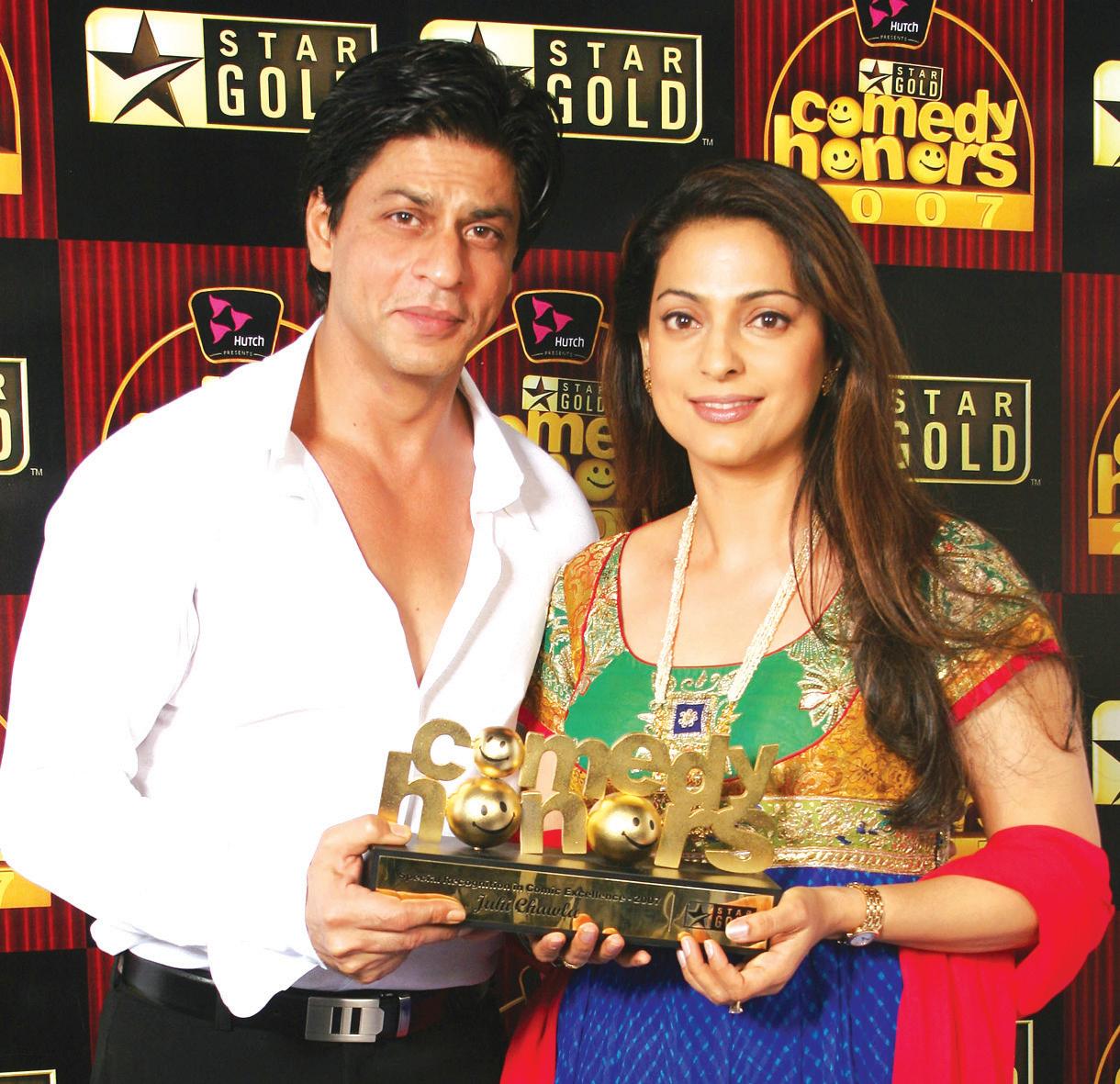
Send in your responses to info@indianlink.com.au and win a surprise prize
Last issue Caption Contest winning entry
What’s Arjun Rampal crying about to SRK?
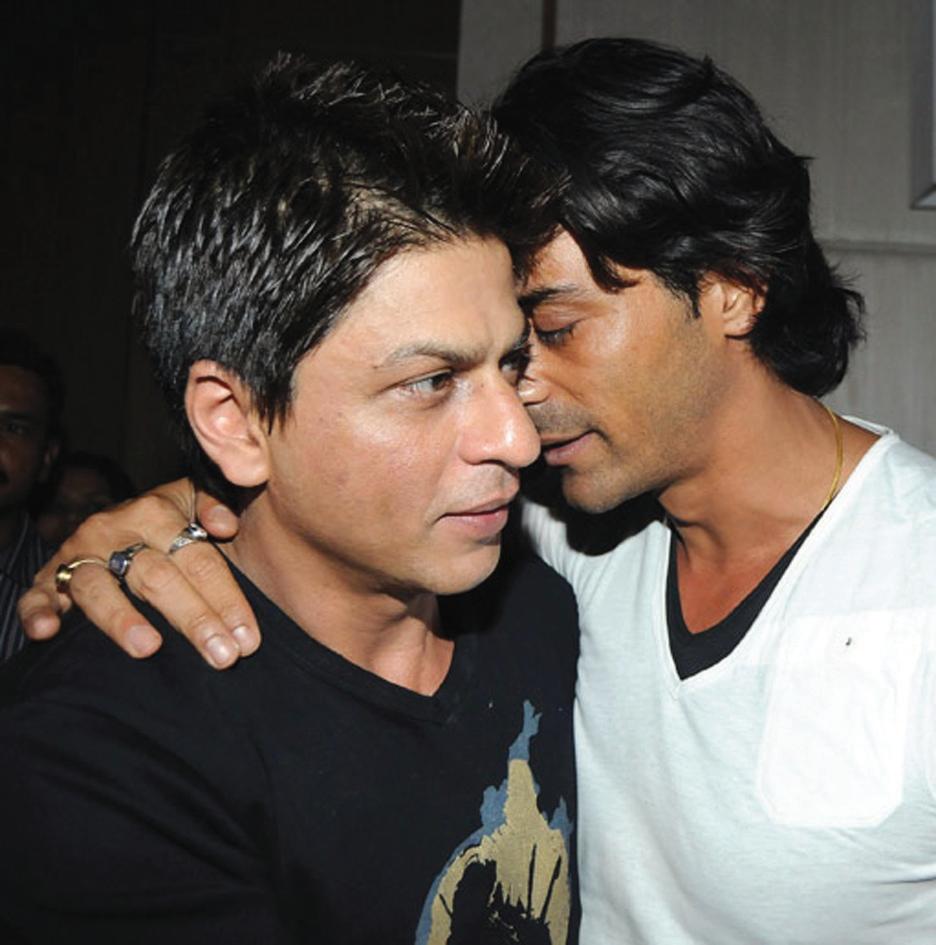
“I am really scared of these Income Tax people, SRK. Tell me are all our transactions fair and legal? I don’t want to be a Kolkata-jail Knight Rider”
Raj Saneja, Castle Hill, NSW
Raj wins one free ticket to new Hindi film BadmashCompany
MAY (1) 2010 <> 71 NATIONAL EDITION
www.indianlink.com.au
SALMAN KHAN
GUESS WHO :ANSWER Mahima Chaudhary
GURINDER CHADHA
SONAKSHI SINHA
AKSHAY KUMAR
Cine Talk
Smiles and giggles galore
Film: Housefull
Starring: Akshay Kumar, Deepika Padukone, Arjun
Rampal, Lara Dutta, Jiah Khan, Riteish Deshmukh
Directed by: Sajid Khan
This is a sly tongue-firmly-and-stubbornlyin-cheek, slick and chic comedy about a loser, or a panauti - a word that recurs ad nauseum in this glorious gasbag of giggles, winks, nudges and innuendos packaged with such polished panache, that you don’t really care what the inter-relations in the parodic plot finally signify.
Maybe they signify nothing more than a numbing but pleasantly diverting nothingness. But who the heck cares, as long as the tumble of confusions generates a hilarious havoc.
Housefull, as the title suggests, is chockful of characters who bump into one another and into hard surfaces (including the unresolved edges in the plot) without injury. It’s all done in ricocheting rhythms of laughter that rises from the pit of the plot’s belly and moves upwards towards us, sometimes missing its target.
More than the screenplay (Milap Zaveri, Sajid Khan, Vibha Singh) which moves helter-skelter in every direction away from the centre of the plot and just about succeeds in coming to a reasonably coherent conclusion, it is the bevy of characters who are positioned in the screenplay with a supreme sense of pyramidal aptness.
Every actor shines because he or she knows the idea is to have fun and to transmit that fun to the audience. It’s the actors’ responsibility to make the maze of inter-relations hold together. They succeed.
Yes, sometimes the actors seem to enjoy the comedy of energetic error more than we do. Beyond a point how many slap-
Powerful and gritty
Film: CityOfGold
Cast: Seema Biswas, Karan Patel, Ankush Chowdhary, Satish Kaushik and Kashmira Shah; Director: Mahesh Manjrekar

There is no room for artifice in Mahesh Manjrekar’s latest work. A raw, gritty look at the world of the ravaged, City Of Gold is as powerful in portraying a bereft working class as Molly Maguires was about Irish mine workers; except for the fact that there is no room for pretty visuals in City Of Gold Manjrekar’s chawl-life, captured on camera with merciless frankness by Ajit Reddy, is a bleak world of dreamers and losers who are often the one and the same. His heroes (if
happy slipping-on-the-floor nudge-nudgewink-wink oops-we-did-it-again rolling of the eyes biting-of-the-tongue jokes can we take??
But somehow it all holds together. Like a jigsaw done in the pages of a comic book and then put on celluloid, Housefull evokes smiles and chuckles in cramped and wideopen spaces.
There is a casino in London where our loser-hero is beckoned to stem losses, a casino waitress (Lara Dutta) whose traditional Gujarati father (Boman Irani, as confidently spontaneous as ever) has disowned her for eloping with a man of her choice, a stern government agent (Arjun Rampal, the only actor who doesn’t get to smile in this chirpy chuckle-fest), a sexy widow (Lilette Dubey) and assorted characters who come and go in a whoosh of wacky misunderstandings, confused identity and half-resolved comic snarls.
Sajid Khan’s earlier film Heyy Babyy was a minty mix of mirth and maudlinism. Housefull is a fullon flamboyant farce. Strangely there’s a subtlety even tenderness at times, in the way Sajid Khan handles the satirical material centred on the theme of a loser who brings bad luck on himself so often that he begins to wonder if there’s a method to the madness of his destiny.
Unlike most situational comedies Housefull chooses the lower octaves of storytelling. The scale is pitched down. Even when the characters scream their lungs out, we don’t wince in discomfort.
This is the most wellbehaved comedy in recent times with an array of pert, but low-key performances.
Stripped of all buffoonery, Akshay Kumar does his most delicately balanced comic act ever. There’s a mellow maturity to the way he balances
we may call the young characters that) are offered no hope of solace or redemption. This is the side of the slum that Danny Boyle missed when he made Slumdog Millionaire City Of Gold is neither stylish nor swanky enough to attract elitist readings of poverty. Fiercely radical in thought and intensely socialistic in execution, the film plunges beneath the poverty line to emerge with characters whose despair is not an act for the camera. The sweat and grime, the corruption and crime are characters of their own in Manjrekar’s chaotic world.
Mumbai never looked murkier and less inviting.
Taking a panoramic look at the lives of thousands of mill workers in Mumbai who went on an indefinite strike in 1982 is like trying to hold the ocean in a tea cup. Manjrekar, in what could easily be rated as his finest, most cogent work to date, does just that. He holds a universe in the eye of
farce with a more underplayed style of comedy. Riteish Deshmukh provides Akshay with the right cues. So do the rest of the actors. Among the three glamorous and sexy ladies Lara Dutta has the best comic timing. Mention must be made of Chunky Pandey who brings the roof down with his Italian-Punjabi accent and burlesque.
Housefull looks and feels right. The climax in ‘Buckingham Palace’ (replete with Queen
Elizabeth and Prince Charles look-alikes) depends too closely on a literal outflow of laughting gas. But that’s okay.
Delicacy of comic presentation is not a claim that Housefull makes. But moments of muffled tenderness just happen in the plot’s confounded journey of a loser from no-love to know-love.
Worth watching for its mix of the wacky and the more tender variety of laughter.
the camera. It is a world of the doomed and damned, no frills attached.
His return to fine form and the enrapturing energy level that sweeps across a multitude of lives without trivializing any of the characters are reasons enough to celebrate the joys of neo-realistic cinema.
But wait... City Of Gold not only marks the return of a storyteller who tells it like it is, without the comfort of shortcuts. It’s also a macroscopic look at people who populate the fringes. Their silent protests are seldom heard in cinema.
Not for a second do we feel any comforting distance from the misery of Manjrekar’s characters.
Manjrekar shoots his characters’ emotions in tight, comprehensive close-ups but wastes no time shedding excessive tears over their lives. The editor (Sarvesh Parab) cuts the raw material with ruthless economy, leaving no room for humbug and certainly no space for
commercial embellishments.
So the question, what happened to those thousands of mill workers who were overnight rendered bankrupt after the mills closed down? You will find some uncomfortable answers in City Of Gold. But most of the time you will be faced with questions about the quality of life we choose to hand over to those who are economically and emotionally weak.
Would this film have worked without the actors who don’t look like they are facing a camera? The whole batallion of characters flicker to life as though they were a part of an extended family shot by hidden cameras for a reality show.
Television actor Karan Patel as the youngest scion of Manjrekar’s troubled family is a revelation. He portrays pain, humiliation, angst, compromise and anger with complete authority.
72 <> MAY (1) 2010 INDIAN LINK
IANS ENTERTAINMENT www.indianlink.com.au
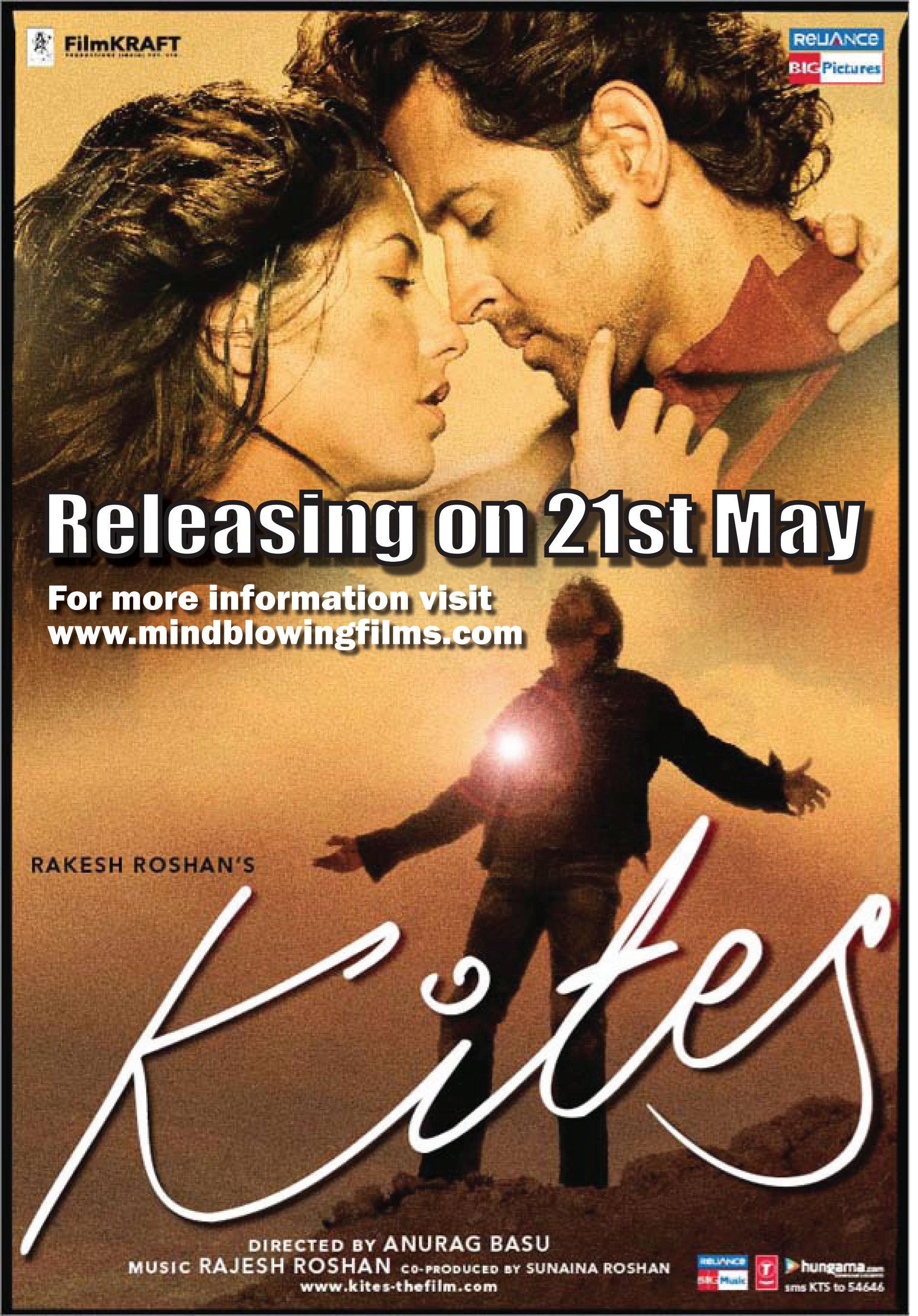
MAY (1) 2010 <> 73 NATIONAL EDITION
Matrimonials
SEEKING BRIDES
Australian permanent resident, Sachdeva/Arora Hindu boy, 5’6”tall, 32 years, born on 30/08/1977, never married, good at heart, caring and loving by nature. Seeking good looking girl for marriage, having good moral values, family oriented, caring, honest and educated girl. Nationality no bar. Email sachdevasunil30@gmail.com
Seeking homely Bengali girl from families in Australia or India for my son (nurse), 28 years, 5’6”, fair, handsome, caring, settled in Australia with ties to India, non-smoker, non-drinker. Contact with photo and details to PO Box 2045, Woden ACT 2606.
European gentleman, Australian citizen, supportive, generous, easy going and pleasant personality, seeks attractive normal-weight female friend for no pressure easy going casual friendship. Sydney area only. Please call 9736 2296 or email tomcasino1@yahoo.com.au
Seeking match for my brother, Senior Manager in Reliance Bangalore, India. 37 years/5’11”, issueless divorcee, clean shaven Sikh, extra ordinary personality, responsible, caring. Parents settled in Baroda, sister married to Army doctor, happy to migrate, caste no bar. Contact Manisha 0401 542 550
Seeking suitable match for Punjabi boy, 27 years, New Zealand citizen, height 5’11”. Working as an occupational therapist. Seeking bride under 26 years, slim, sincere and pleasant personality.
Contact aunty skapoor65@hotmail.com or ring 0401692546.
SEEKING GROOMS
Seeking professionally qualified and well settled match for 35/165cm, fair, beautiful, engineer, Australian citizen girl working as project manager in IT in Melbourne. Please respond with complete details to seekalliance@hotmail.com or 0425405247
Well settled alliance invited for 26-year-old Punjabi Hindu Brahmin girl, fair complexion, height 5’4”. Family oriented, working in Sydney, parents settled in India, brother’s family in Sydney. Send profile on vandikaushal@gmail.com or call 0451 371 798.
Brahmin Iyer, 33/5’4”, I.T Manager with MNC, seeks suitable veg, nonsmoking Brahmin groom, 34 to 36, willing to settle in Australia. Please e-mail biodata and recent photo to padrad888@hotmail. com or contact 0414 789 004.
Seeking clean shaven, professional alliance for our 27-year-old, 157cm, Sikh daughter. She is a finance professional with strong family values. We are settled in Australia for many years. Please send your details and photo to matrimonial275@ gmail.com
Seeking a suitable match for Panjabi girl, 28 years (Aust citizen), 5’8”, fair, never married, working in Sydney. Seeking match with progressive and broadminded personality, preferably settled in Sydney, caste no bar. Parents currently live in
Brunei. Send details and recent photo at mukeshrandev@hotmail.com or Tel: 00 673-233 4324 (Res).
Seeking professionally qualified/ well-settled match for 39/165, never married, fair, slim, beautiful Punjabi girl, family oriented and responsible. Engineer working in Sydney, Australian citizen. Early marriage. Can relocate. Parents well-settled in India. Caste no bar. Email with photo: sydgirl09@gmail.com
Seeking professional, educated boy for Sood Khatri girl, 81 born, 5’4” M.O.A., working as a manager in Australia. Send biodata with recent photo to soodbrothers@yahoo.com
Seeking suitable professionally qualified, Hindu, well settled match for an Indian-based Hindu girl, never married, 37 years, 165cms. Family are well settled in Sydney. Please contact Peter on 0400 981 912 or hariom1969@hotmail.com

Punjabi Arora parents invite never married well-settled/professional match for fair, slim, attractive, 37/165, IT professional with strong family values. Never married. Settled in Sydney. Australian citizen. Status family. Caste no bar. Early marriage. Email with photo: ausgirl101@gmail.com
Sister and brother-in-law seek a suitable groom for a lovely 25-year-old Fiji born Hindu girl, independent, fair, lovely girl, Australian citizen professionally qualified, currently working in an Australian company. Family seeks a qualified match from suitable boys 25 to 29 years of
age. Please email bio data and recent photographs to arieso@rediffmail.com
Sister-in-law seeks educated and wellsettled boy for Sikh Punjabi girl. She is working as Auditor at KPMG, Australian citizen, Sydney based, 23 years old, 5’ 6” slim and beautiful. Please send details and photo to Ravinder Kaur ravinderkaursydney@gmail.com
Family seeking suitable professional match for a very attractive and intelligent Punjabi girl with strong Indian cultural and family values. She is 35, 5”10”, Doctor, permanent resident of Australia, settled in Melbourne. Please contact with biodata and a recent photo at mail4rsk@ yahoo.com or 0407 901 806 ONLY if the boy is under the age of 42 and has never been married. Caste/cultural background no bar.
74 <> MAY (1) 2010 INDIAN LINK
HOMEBUSH OFFICE SPACE NO LEASE New fitout SINGLE OFFICES from $120 pw. Including all outgoings, Some furniture available. Call on 0418 965 834 BURWOOD HEIGHTS OFFICE SPACE/ACCOMODATION Commercial Lease 120 sqm area. Whole floor to yourself. 5 good sized rooms. Bathroom, kitchen etc. Rent $600 pw. Call on 0418 965 834
Tarot ‘n’ You Tarot ‘n’ You
Tarot predictions for April 2010






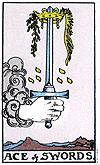
ARIES March 21–April 20
‘Make hay while the sun shines’ needs to be your mantra. You are likely to find yourself involved with a person who has no fear of the unknown and readily takes a risk. Change is his/her way of life. You are likely to be offered a fleeting opportunity of assistance from a person who is unpredictable and has a quick mind which shall be shortly focused somewhere else. The card for you represents instant action with no time to think over the other options.
TAURUS April 21–May 21
You realise that you can no longer stay away from issues of concern, and must face your problems head on. There is conflict in the air that may have brought about the worst side of everyone involved. You need to be careful of someone who can create trouble. You have to avoid arguments for your reputation may be at stake. The end result is not likely to give anyone much happiness. You should be careful taking up only as much responsibility as you can cope with.
GEMINI May 22–June 23
You are able to reap the rewards of the efforts you have put in till now. A business project would prove to be a very good investment, as it would bear great financial rewards. It can also indicate a change of job or hiring of skilled people for expansion of a project. You are likely to meet a person who shall offer financial support for a new project. In a relationship reading, this card suggests that efforts need to be made to control a partner in a subtle manner.



CANCER June 23–July 22

Tarot foresees both success and fulfilment for you this month. You are likely to be happy on achieving lasting success. You are blessed to have the support of people around you. The goals currently on your mind, towards which you seem to be working whole-heartedly, will bring you success. A positive card is drawn in a travel reading also. Overseas projects are indicated by this card. You should continue to put in hard work in whatever you do.
LEO July 23–August 23
You need to focus on making important decisions. Tarot indicates changes of some kind, which may be to do with residence or job and could either be temporary or permanent. You could be bored with life and might feel the need for a change. The card for you represents flight, emigration or a new relationship. It is good to be fearless but be careful and avoid being rash and impulsive. You are likely to find yourself being forthright, positive and eager for action.
VIRGO August 24–September 22
Tarot sees a confident approach to life in general. You are required to be adaptable. Gains and victory are on the cards. Past efforts bring rewards. Legal matters would be resolved favourably. You may receive public acknowledgment for your work. In a relationship, both you and your partner have similar goals in the relationship and are likely to achieve these goals. A new stage of commitment may be seen in a relationship.
LIBRA September 23 – October 23
Tarot indicates success through discipline of self and practicality. In order to succeed, you will have to have a pragmatic approach to life in spite of the limitations that confront you. Tarot represents stability, strength and conviction. New opportunities would come your way. You need to make the best of them, by laying solid foundations that shall finally lead to success. You should be prepared to act instantly and leave place for any changes that may be required.
SCORPIO October 24–November 22
Your focus is likely to be on your achievements and an overall feeling of happiness resulting from them. It is a card that signifies success and victory. You are nearing your personal goals and an enterprise is coming to a successful conclusion. You are feeling emotionally secure and content, which is due to a job well done. Your inner needs are fulfilled. In a relationship reading, a great deal of harmony is seen, as you have learnt to love and care for yourself and so you work towards making a happier relationship.
SAGITTARIUS November 23–December 21
This month, your focus will be on your ambitions. Tarot indicates that you will have a favourable encounter with an assertive person who will support you during a difficult time. Good looking, well built, honest and kind, this person is mature and good with people. He/she will be a helpful sort of a person, though he/she may not be emotionally involved in the situation. It will be beneficial for you to you adopt the above-mentioned qualities yourself.
CAPRICORN December 22–January 19
Tarot indicates fortune, luck and change and with it new things and a different environment. Optimism should be high on your list, as whatever is down on life’s wheel shall never remain so and is bound to move up. The key to your success lies in your adaptability to change with the flow of time. You need to observe this change and be open to it, as it shall bring positivity with it.
AQUARIUS January 20–February 18
Tarot indicates your ability to combine spiritual knowledge with spontaneity of temperament. You can achieve harmony by being patient and using self-control, as and when required. You need to be balanced in your approach and at the same time be diplomatic while dealing with others. A blend of actions and emotions would bring a sense of harmony within you, leading to inner peace. Time is right for both learning and teaching. If in a relationship, you are likely to see much development taking place. Travel will be fruitful.
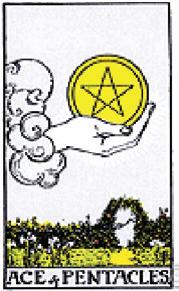
PISCES February 19–March 20
This month your focus is likely to be on your ambitions. Tarot indicates that you will have a favourable encounter with an assertive person who will support you during a difficult time. He/she will be good looking, well built, honest and kind. He/she will be a mature person who is good with people. He/she will be a helpful sort of a person, though he/she may not be emotionally involved in the situation. Tarot suggests that it will be beneficial for you to you adopt the above-mentioned qualities. You will do well in a career in sales or in any goal-oriented position.




MAY (1) 2010 <> 75 NATIONAL EDITION STARSFORETELL www.indianlink.com.au
Vegetarian visions
The travails of travelling vegetarians are as numerous as they are diverse, but there’s hope at the end of the tunnel
BY MALLI IYER
How good are you at negotiating your way through a maze?
Here is an example of a phone conversation between an airline booking agent and a traveller seeking a vegetarian meal.
Traveller: Hello, I am looking to request a vegetarian meal when I travel with you next week to San Francisco – can you help?
Airline agent: I am sure I can, but what sort of vegetarian meal did you have in mind?
T: I don’t eat meat or fish.
A: Does that exclude other animal products such eggs, dairy and milk?
I know several vegetarian friends of mine who pretend that they are Buddhists and get more respectful treatment from these and other East Asian food establishments
T: Milk and dairy items like cheese, ice-cream and yogurt are okay. I could eat eggs if push came to shove.
A: In that case, I shall request a VLML for you, which is called a lacto-ovo vegetarian meal.
T: Hold on a minute, what options are available in vegetarian meals served in-flight?
A: Sir, please pay attention and take notes if necessary – you could order an AVML (Hindu vegetarian meal), VJML (vegetarian meal for Jains), or a VGML (non-dairy products vegetarian meal), or a DBML (a diabetic meal with no sugar or glucose), or a GFML (a gluten-free meal), or a LSML (a lowsodium, salt-free meal). I have other meal choices, but you have to be more specific about your dietary needs. Would you think about it and call me back, please?

Everyone knows or has heard of unpalatable food served on flights, but the confusion created in the minds of customers (and cabin crew) is caused by what is on offer as opposed to individual meal
preferences, which vary from one end of the spectrum to the other. While a North Indian might settle easily for a ‘dal-bhath/roti’ routine, a South Indian will yearn for a bowl of ‘thayir saadam’ (yogurt rice) as their minimum need.
Flight kitchens across the world are slowly waking up to this reality because of the continuous bickering of ‘fussy vegetarians’. Well, they better, in view of the rapidly increasing numbers of globetrotters of Indian origin. Our ‘desi’ travellers will be happiest when airline caterers realise that the correct route to their hearts is via their bellies.
You can see that there is an element of truth in the old cliché, “One man’s food is another man’s poison”.
Most readers of this piece will have their own unique horror stories of meals that have been served by airlines and hotels/restaurants, varying from cold, frozen rice pilaf (unthawed, straight from the freezer), small pieces of bone in their dish of gravy, rubbery rotis or naans, bland boiled vegetables or just stray pieces of fruit, as no special meals have been supplied for them.
In addition, they may have experienced extensive delays in service, no offer of pre-dinner drinks or coffee/tea with their meals. Airline cabin staff appear to have low tolerance for any out-of-the-ordinary requests. They are known to thrust the foil wrapped plastic tray under your nose with a ‘Veg Meal’ label stuck on it and rush back to the galley to worry about meals for the remaining majority. Add travel weariness to this equation and we can see that the passenger’s frustration only increases.

Vegetarians undergo a disguised form of social ostracism at conferences and conventions held in prestigious hotels, as by and large, these are catered for a Western, European or Continental audience, and a vegetarian menu is provided (if any) only as an afterthought. It is never as substantial or lavish as those for a meat loving clientele. The same holds true of restaurants and hotel chains who find it
Shop for Lease
Lalor Park Shopping Centre (near Blacktown / Seven Hills)
Approximately 100sqm
Ideal for Indian Supermarket / Spices etc No competition among 20+ other shops
Plenty of parking
Contact Peter 0402 246 887
convenient to use animal fats e.g., beef tallow, shrimp paste or gelatine - all of which are animal derivativesin their cooking medium, and make no exceptions for vegetarian clients. I know several vegetarian friends of mine who pretend that they are Buddhists and get more respectful treatment from these and other East Asian food establishments.
It would not be untrue to say that most vegetarians have to fight for their right to be vegetarian in a predominantly carnivorous society, and they must expect to get less than a belly-full of food and dessert. Their cup of patience may be nearly full for the Indian diaspora, but they may not have to wait another generation before they get their own back.
Aside from the in-flight vegetarian meals and problems encountered by herbivores, our dietary habits are the increasing focus of climatologists, agricultural scientists and foodgrain and dairy industry experts. As our fresh water sources are expected to shrink due to expected global climate changes, the need to convert substantial segments of the population to vegetarianism may be unavoidable. It is well established that producing 1kg of beef would see the use of 100,000 litres of water, 1kg of butter will use up to 18,000 litres of water, whilst producing a kilo each of rice, wheat, soyabean, lentils, beans, peas and potatoes will only use between 500 -2000 litres of water. It is important to note that consumers of soyabean and lentils get the same amount of protein as meat and cheese eaters, and they save 2000 litres of water in producing just a kilogram of foodgrain. Poultry, lamb, pork and beef consumption may soon be dubbed extravagances that our planet cannot afford for much longer. Diehard meat and seafood eaters may have to shell out a much bigger proportion of their income on food and grocery bills, almost like smokers who find it hard to kick this habit.
So vegetarians, zindabad! May your numbers grow and multiply….
WANNA GET 7 BANDS IN IELTS
Tired of sitting IELTS again and again!!! Was it your 3rd, 4th or 5thattempt, when you gave the exam and were disappointed to see the result??
Don’t waste your precious time and hard earned money on giving IELTS numerous times.
For Supervised coaching and Understanding the core requirements of the Test (IELTS): 1
76 <> MAY (1) 2010 INDIAN LINK
BACKCHAT
Reading
Listening
Speaking
Writing
to achieve
objective
2
3
4
And
your
Contact on 0413950760


MAY (1) 2010 <> 77 NATIONAL EDITION

78 <> MAY (1) 2010 INDIAN LINK

MAY (1) 2010 <> 79 NATIONAL EDITION

80 <> MAY (1) 2010 INDIAN LINK




































































































 BY RITAM MITRA
BY RITAM MITRA





















































 BY SHERYL DIXIT
BY SHERYL DIXIT



































































